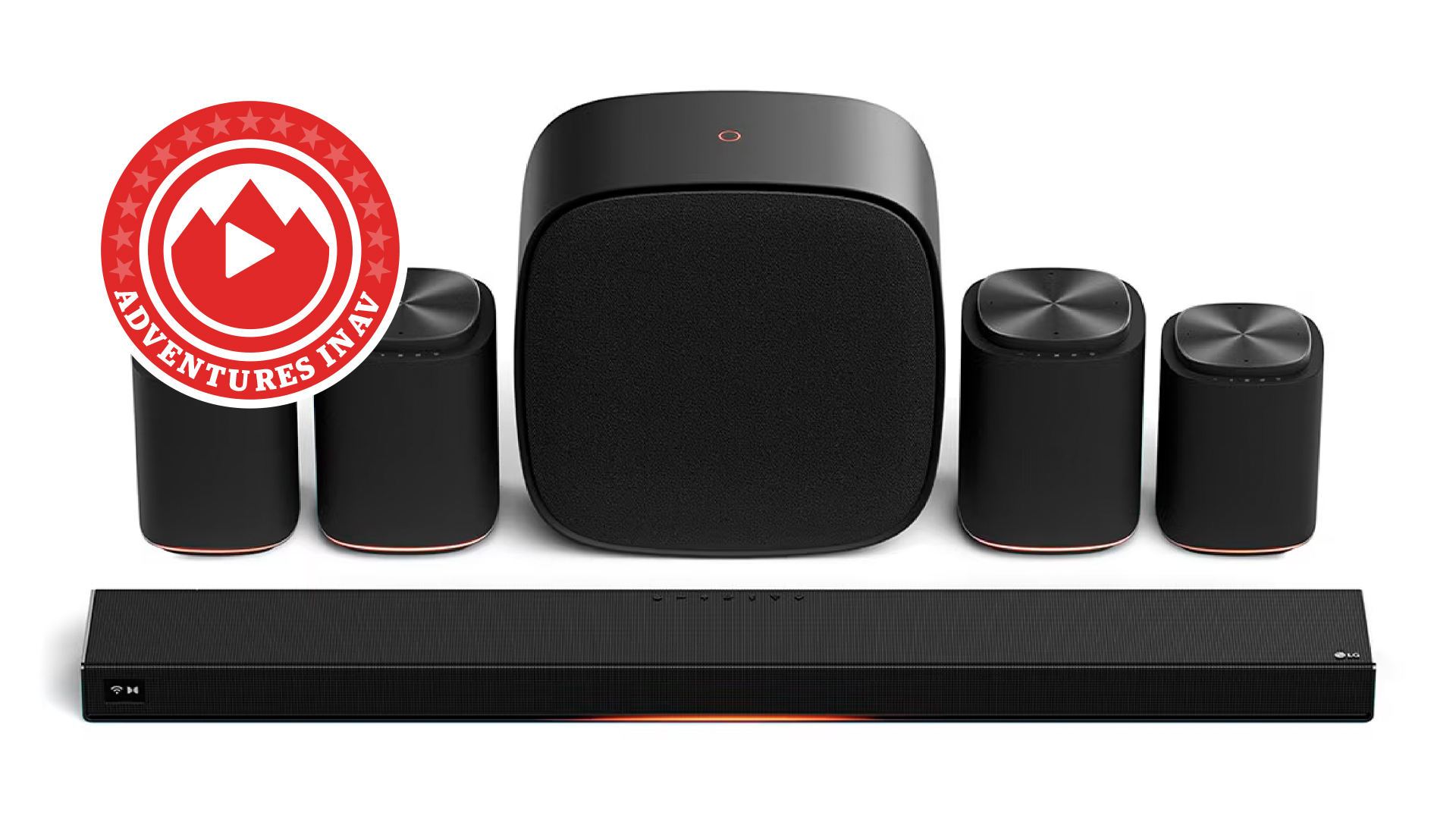Best speakers 2025: budget to premium models tested by our expert reviewers
Our pick of the top stereo speakers to suit every price, space and need
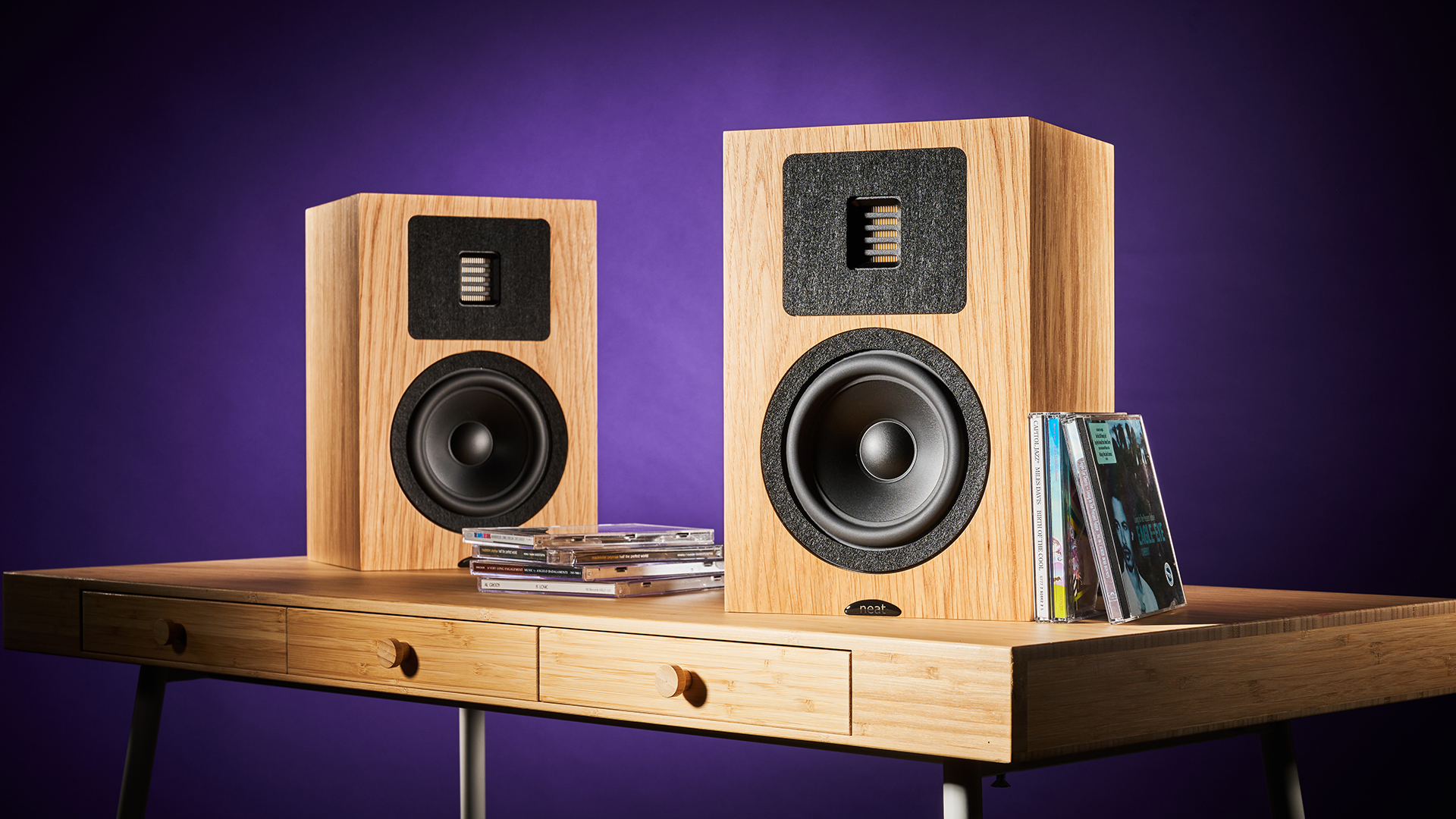
- Quick list
- Best overall
- Best budget bookshelf
- Best budget floorstander
- Best mid-price floorstander
- Best premium standmount
- Best premium floorstander
- Best high-end standmount
- Best high-end floorstanding speakers
- Best floorstander for large rooms
- Also consider
- How to choose
- How we test
- FAQ
- Recent updates
- Today's best deals
Every hi-fi system needs a good pair of stereo speakers. Luckily for you, there is a huge variety of great speakers available, from small bookshelf models to larger floorstanders, spanning budget to high-end prices, and everything in between.
A good pair of speakers needs to fit in your space, suit your personal tastes and match your system, so it can take some time and care to get the right pair. But there are plenty of great options to choose from.
That's also where we come in; What Hi-Fi? has been testing hi-fi speakers of all types, prices and sizes for almost 50 years. Every speaker in this guide has been tested in our dedicated listening rooms by our expert in-house team of reviewers, all of who love listening to music and have extensive knowledge to give the best advice on the best speakers for your needs, space and budget.
Above all, the best speakers should deliver great sound quality for the price, whether that's at £100 or £2500 per pair. They should bring your music to life with clarity, detail and spaciousness, offer engaging dynamics, precise rhythmic ability and even tonal balance, all while upholding the build quality standards expected at their respective price brackets.
Below you'll find our curated list of the top speakers we've tested across a range of prices and deliver the best value for money and will make your music sing – we are confident there's something for everyone here. You can read more about our speakers testing process, get our expert tips on how to choose the right speakers for you, or scroll down for our pick of the best speakers for every budget.
The quick list
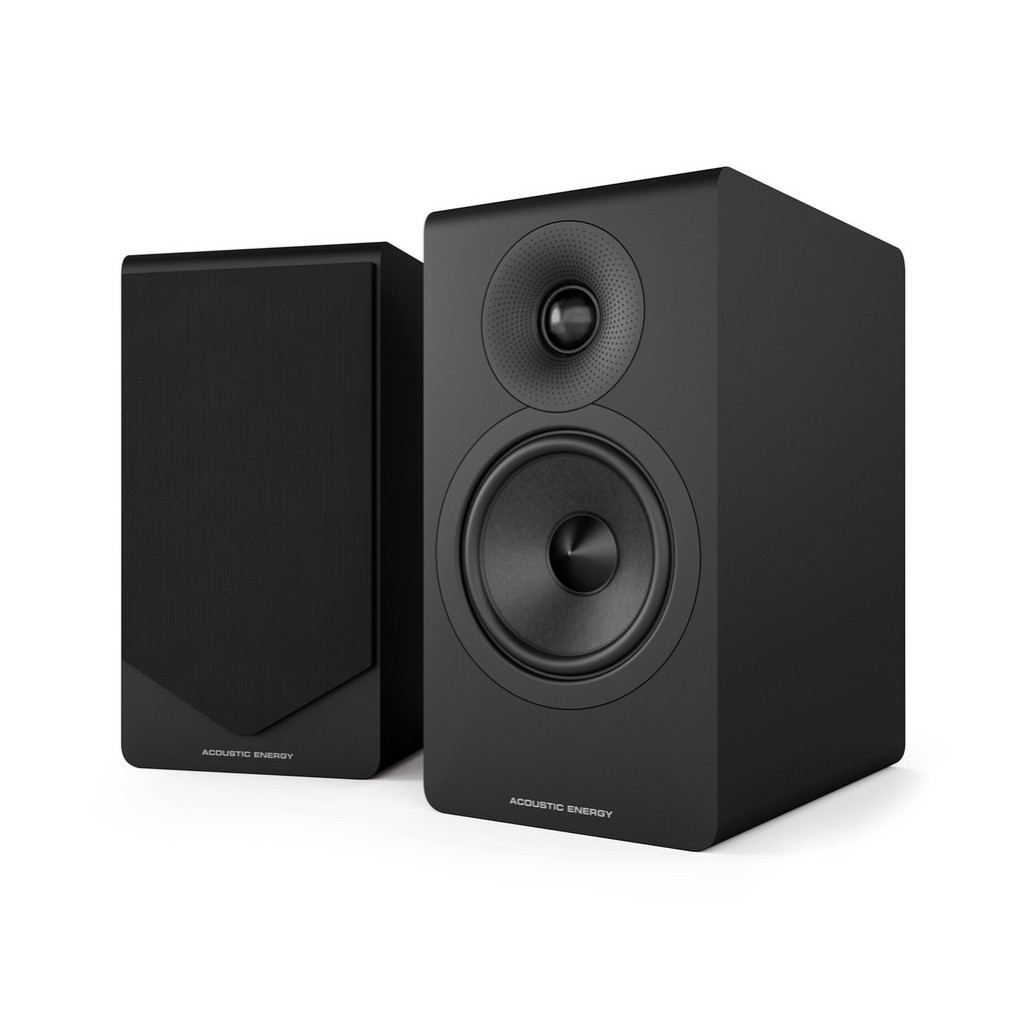
Unfussy and understated, the AE300 Mk2 only get better the more time you spend with them.
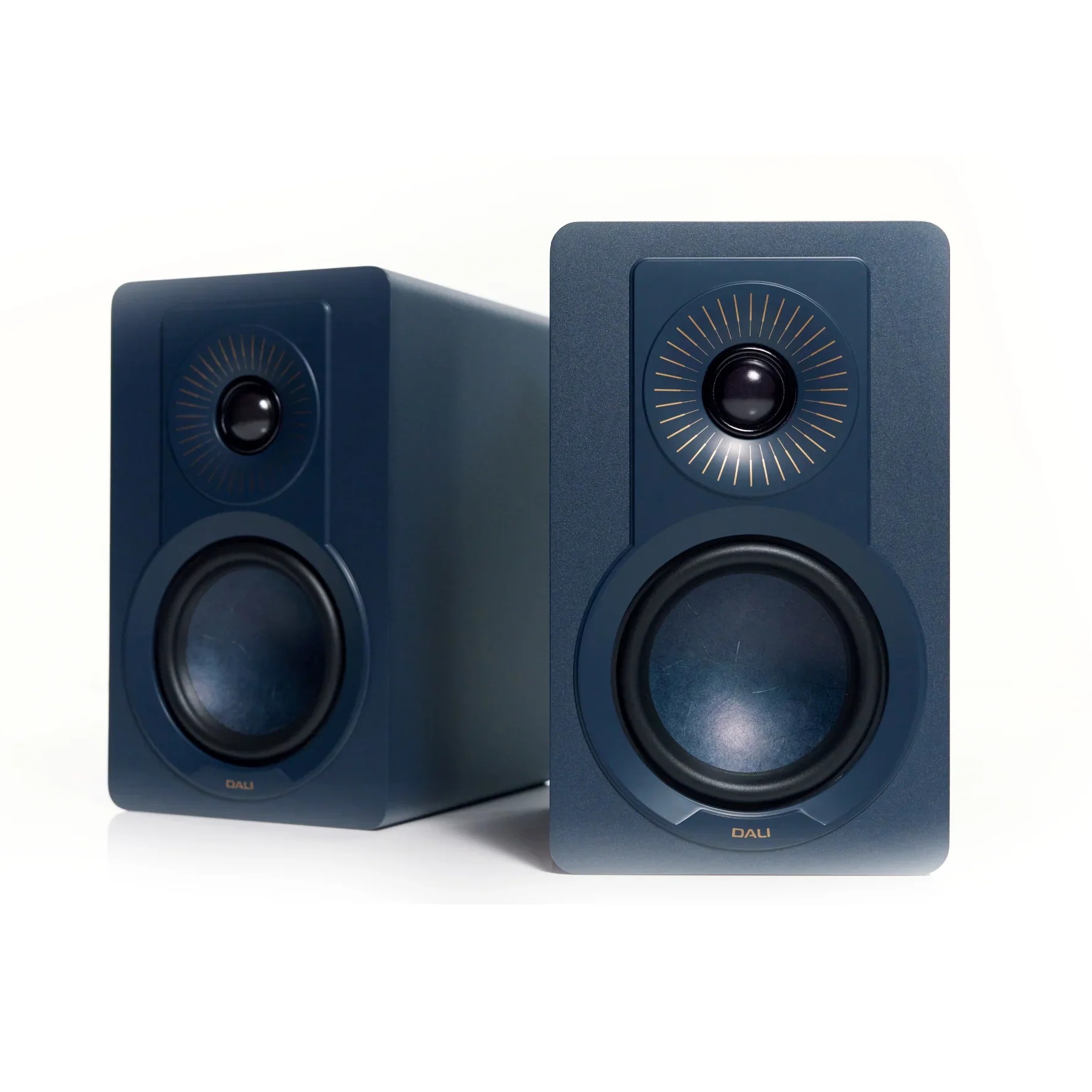
Small, affordable and lots of fun, the Dali Kupid are a great choice if you're tight on space and don't want to spend a fortune.
Read more below
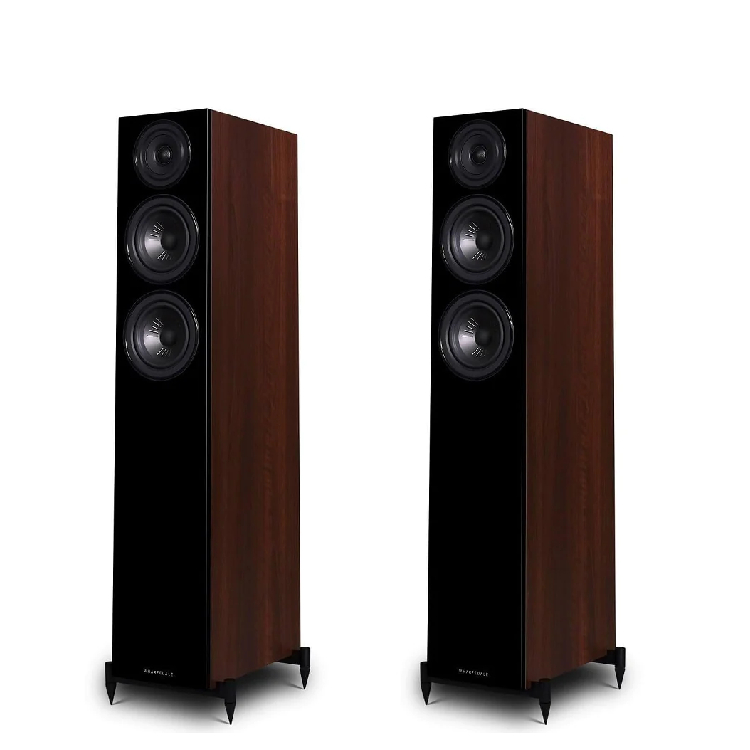
It’s tough to make a truly talented and affordable floorstander, but Wharfedale has cracked it with the accomplished 12.3.
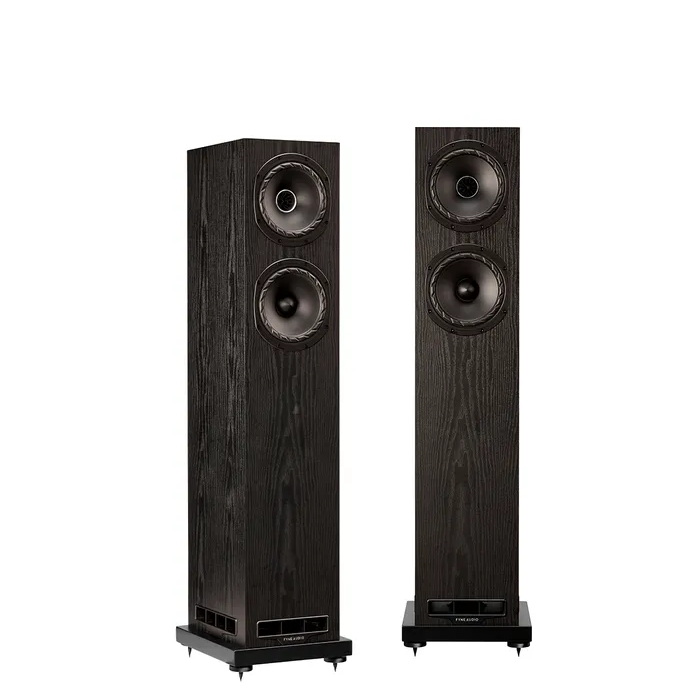
A talented all-rounder that delivers a cohesive, dynamic and entertaining performance that blows away the established rivals at this price.
Read more below
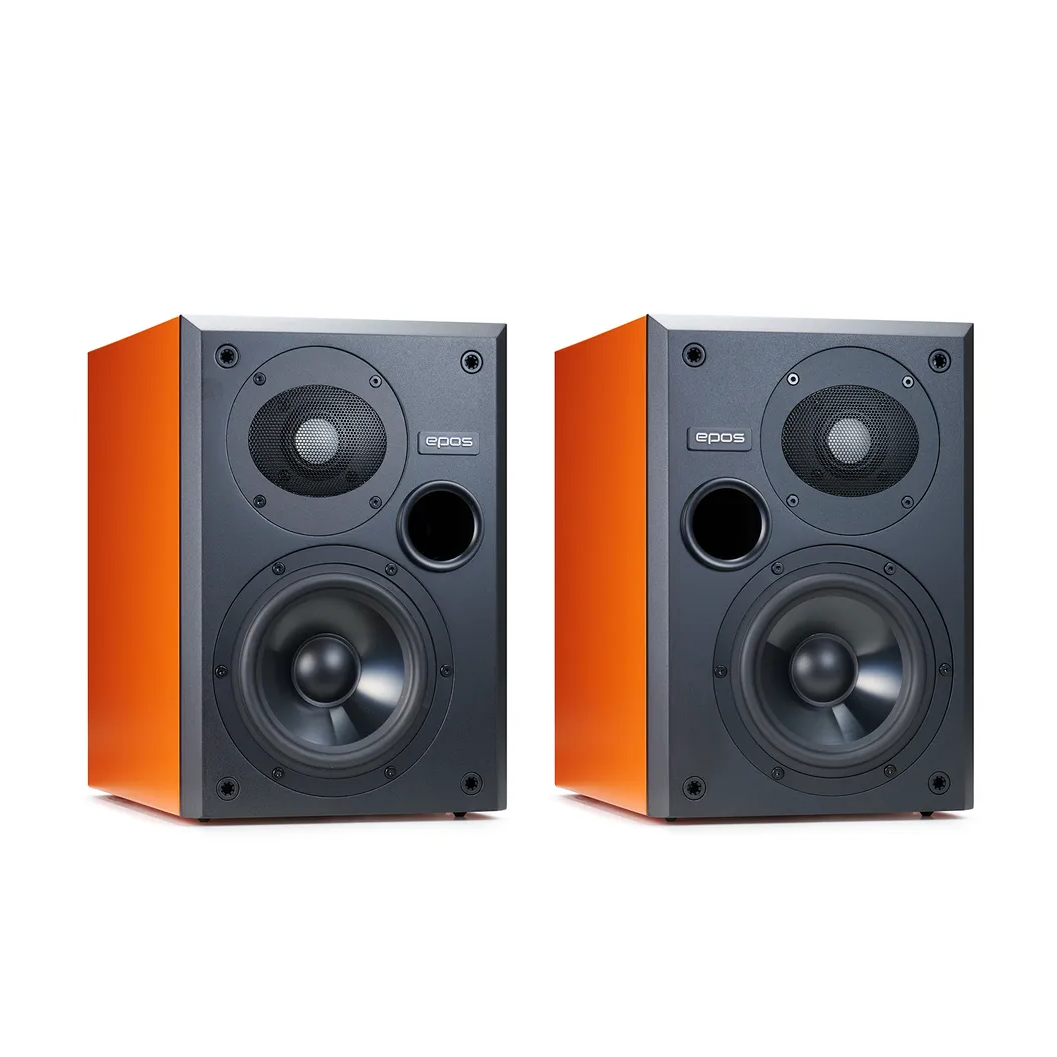
Petite premium speakers that are superb performers and are even optimised to be placed inside a bookshelf.
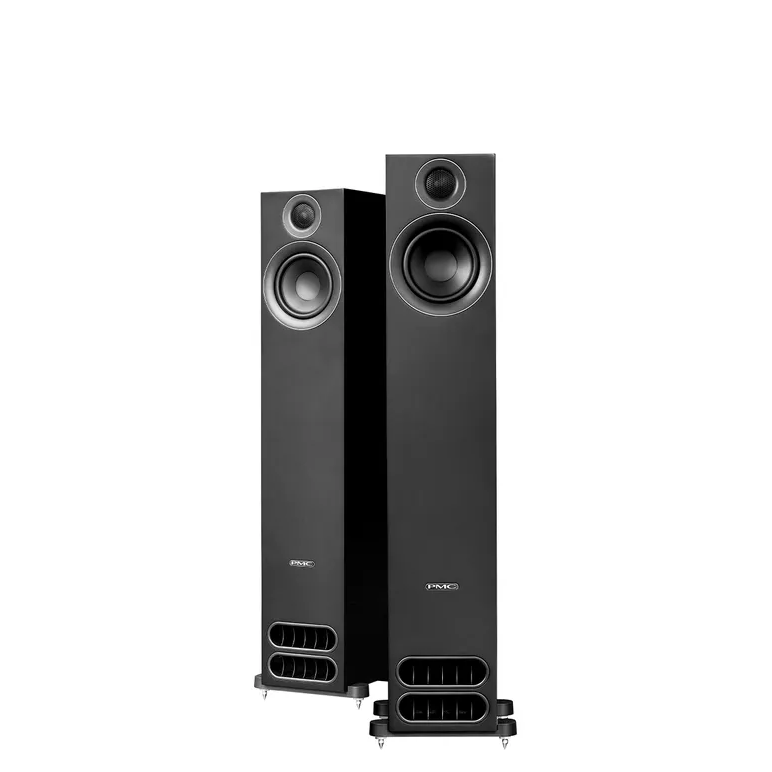
They make look plain, but these floorstanders deliver astonishingly refined and gorgeous sound, making them excellent value.
Load the next 3 products… ↓
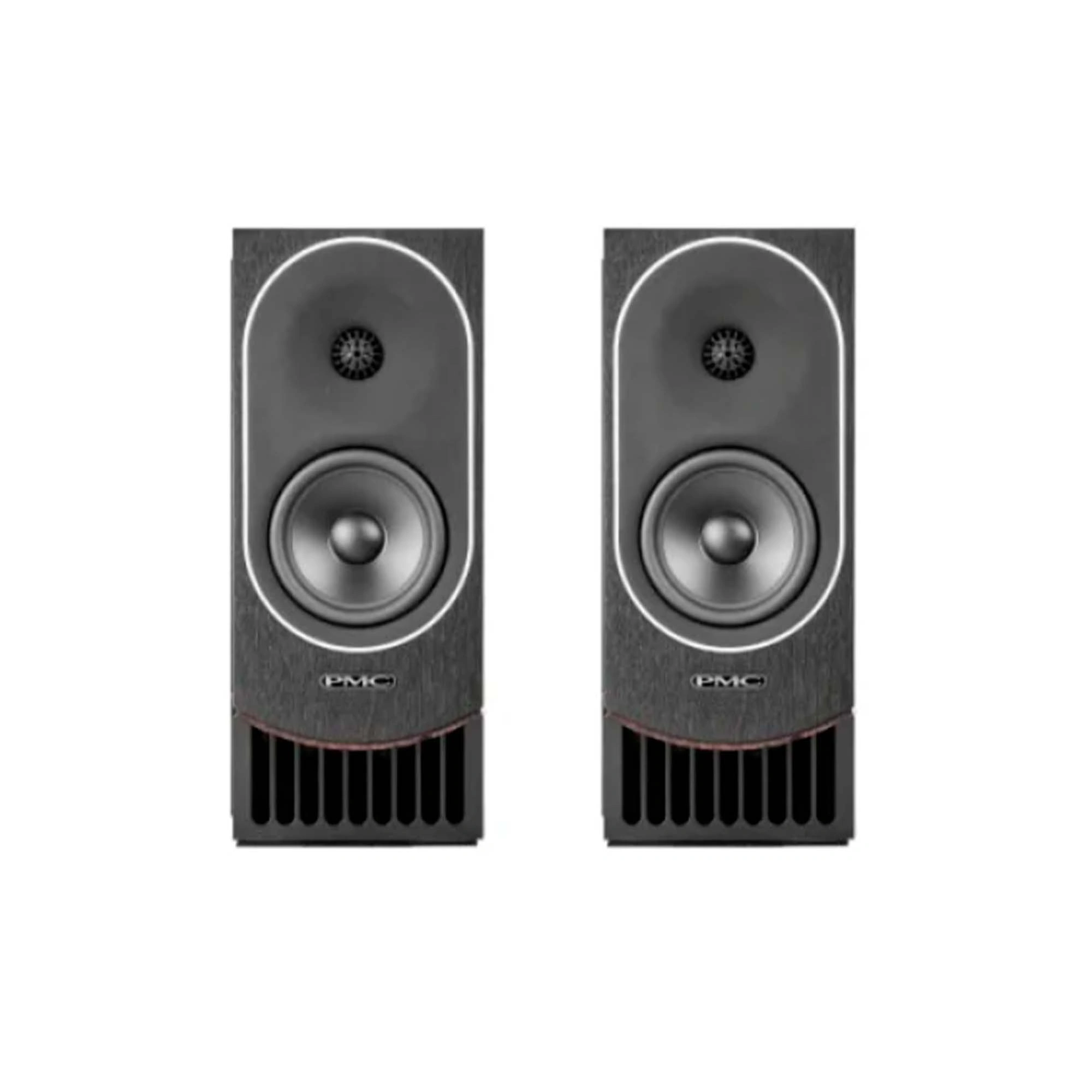
The Prophecy 1 are versatile, engaging and immensely talented speakers.
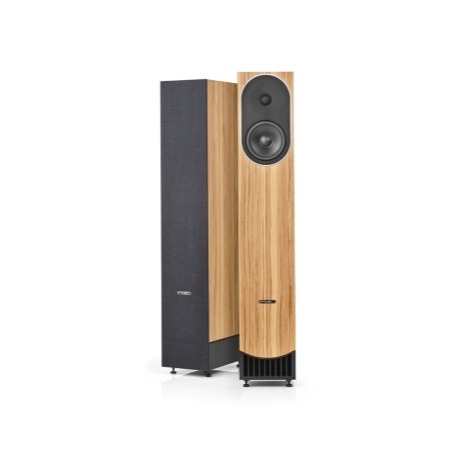
The Prophecy 7 are stunningly talented, excelling across genres and never shying away from having a good time.
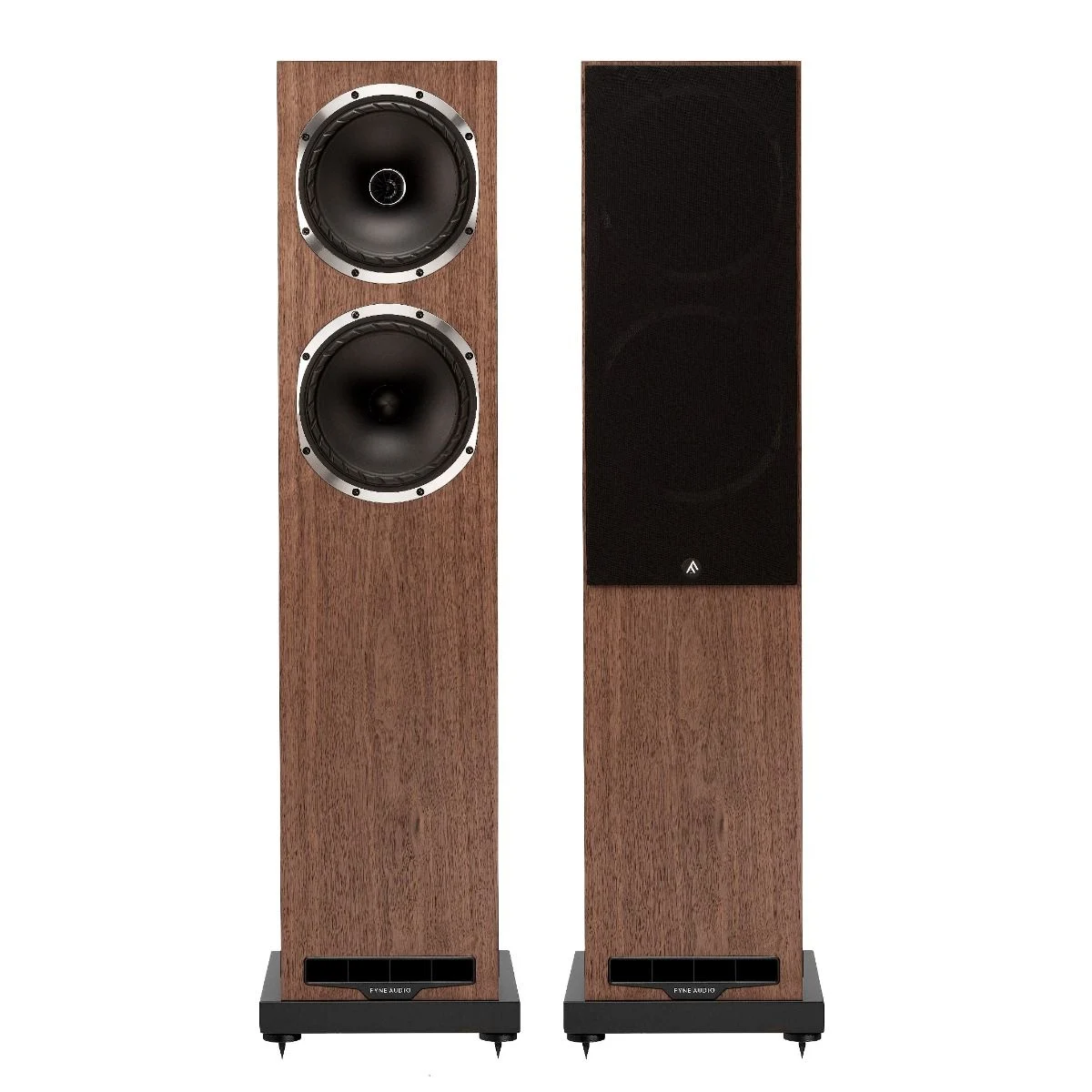
Incredibly authoritative yet strikingly cohesive and balanced, the F502S are remarkably musical towers no matter what you throw at them.

I've been testing and reviewing speakers at What Hi-Fi? for over 13 years, and have listened to speakers of all shapes and sizes in that time. From budget pairs to premium models, the various speakers I have tested over the years have given me the knowledge and experience to know exactly what a buyer should be expecting for their money. Budget doesn't mean you should settle for shoddy build quality, and high-end doesn't mean you have to sacrifice fun for ultimate transparency and refinement. The best speakers should let you enjoy listening to your favourite music to the fullest, and the five-star recommendations in this guide aim to deliver exactly that.
3rd December 2025: We're currently testing new bookshelf speakers from Triangle and Fyne Audio, while our Also Consider list has been updated and refined.
Best speakers overall
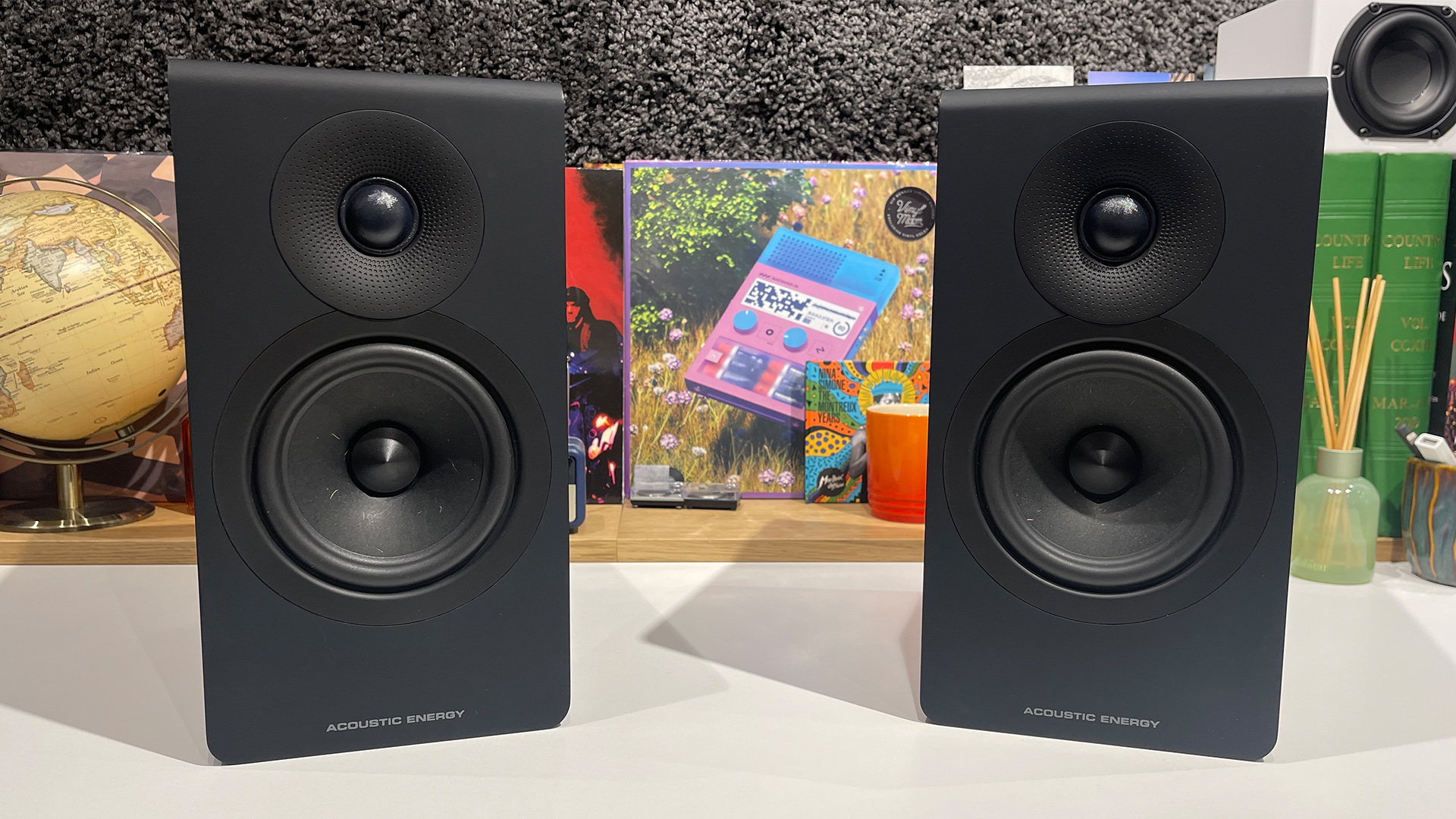
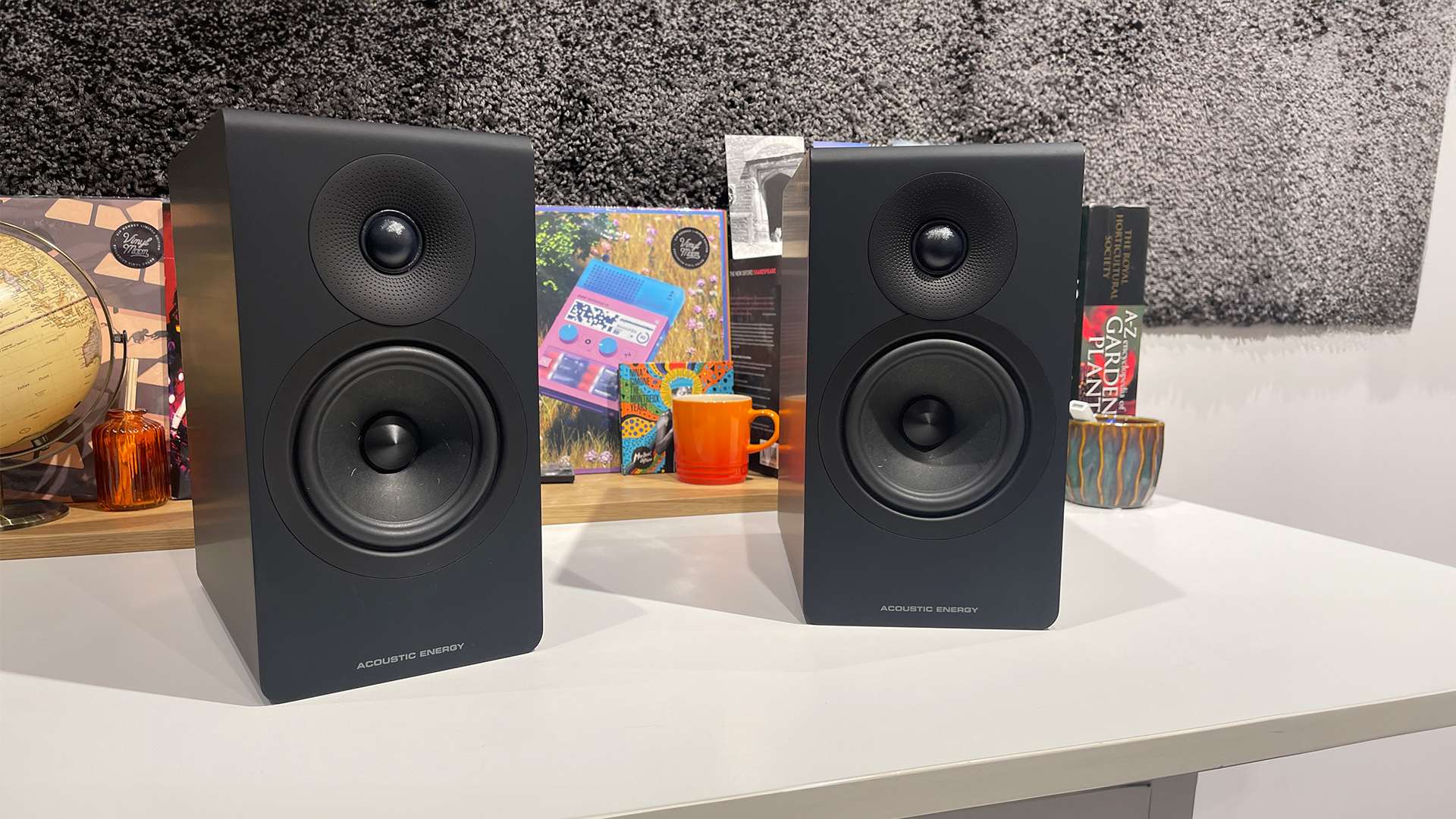
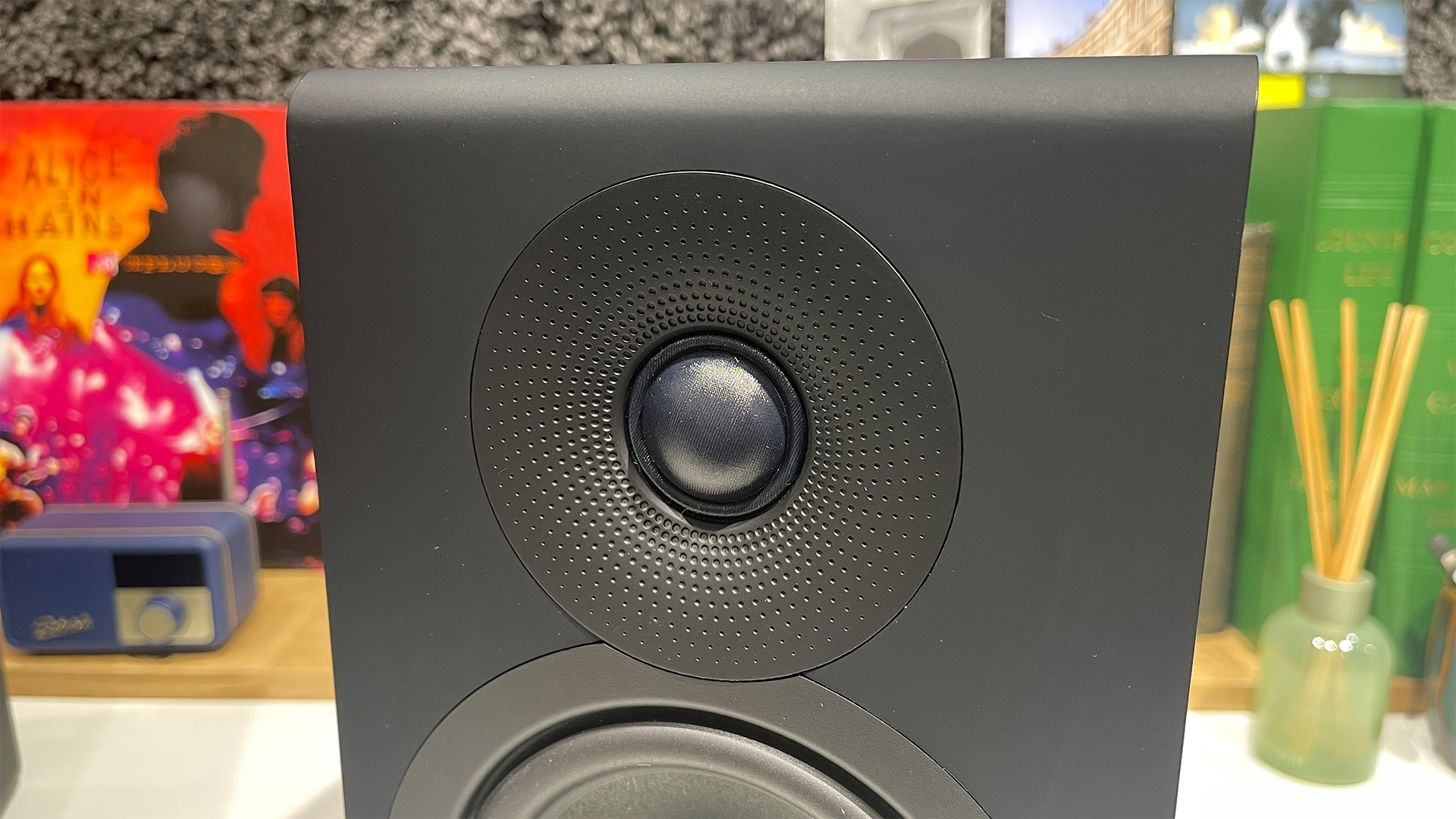
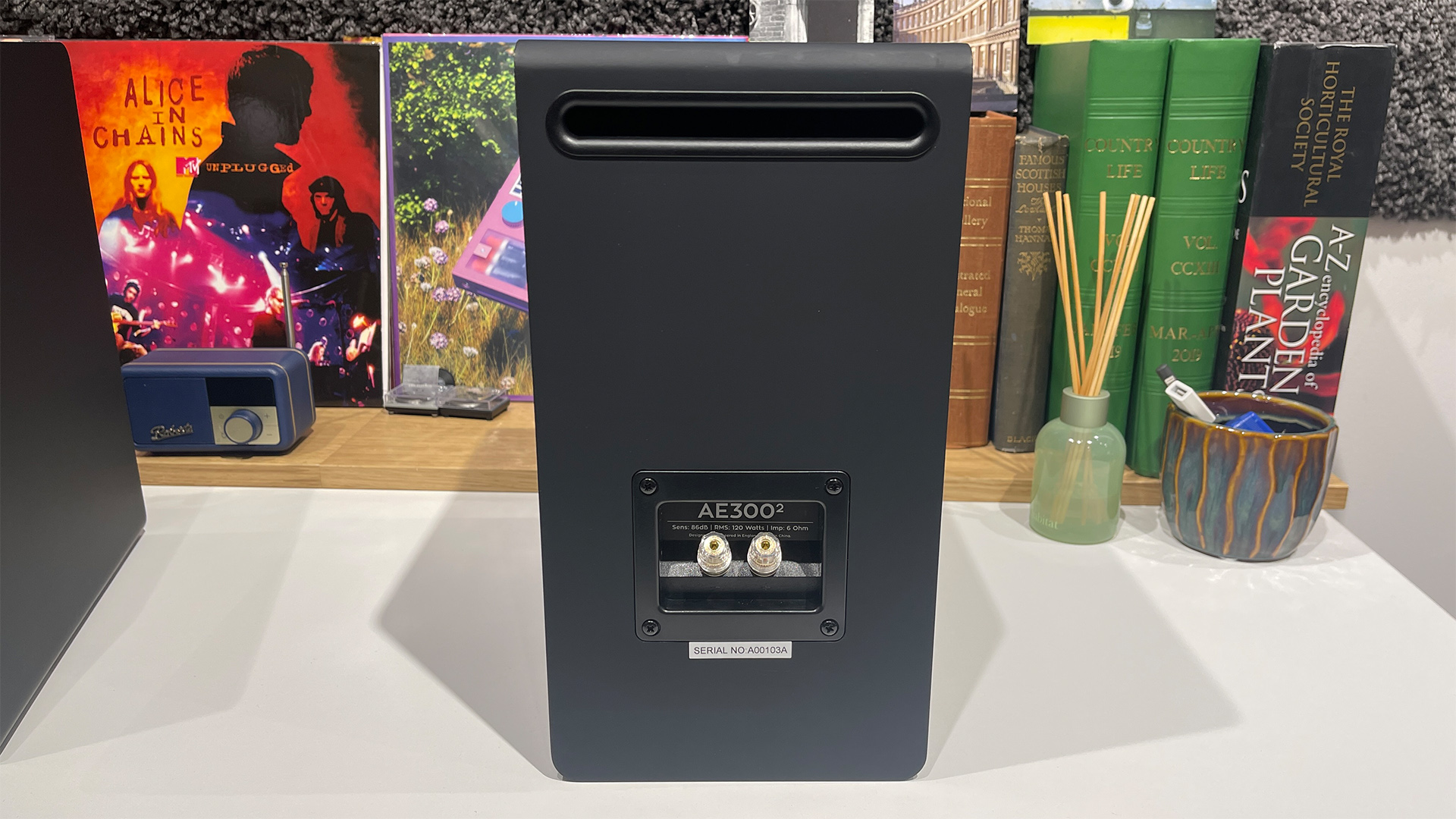
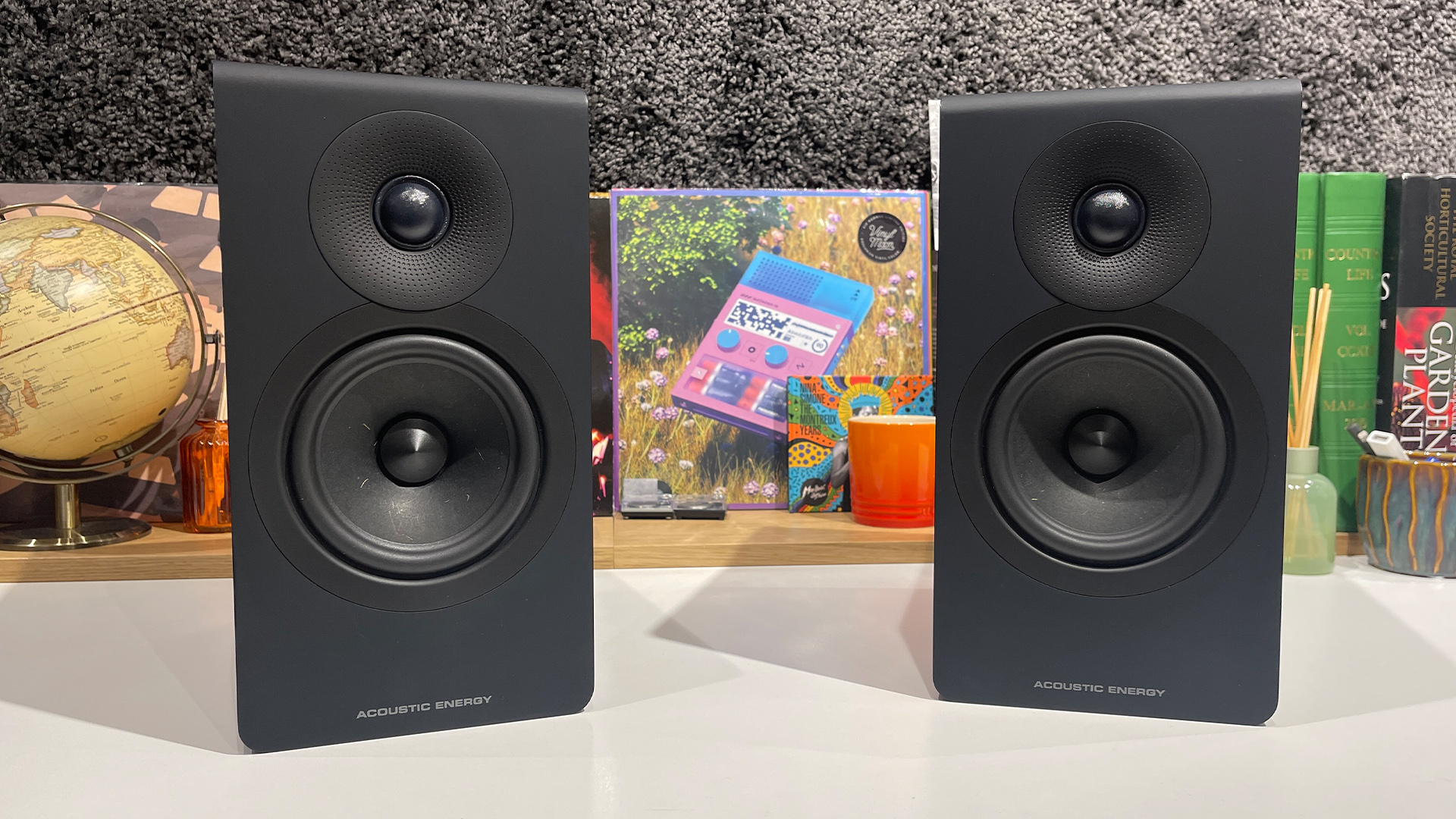
Specifications
Reasons to buy
Reasons to avoid
To make it onto this list, you need to be a very fine pair of speakers, but for us to consider you to be the best overall, you need to be something truly special. Fortunately, the AE300 Mk2 are just that.
The AE300 Mk2 are housed in neatly made but pleasingly compact boxes. Each speaker stands 32cm tall and is relatively slim at just 17cm wide, and while they're visually unobtrusive units, that isn't a byword for boring.
The AE300 Mk2 employ a large 29mm fabric dome tweeter with a 12cm paper/coconut fibre mid/bass, a design that leans heavily on the lessons learnt during the development of Acoustic Energy’s high-end Corinium range.
Don't be put off by the Acoustic Energy units' slightly lower-than-usual impedance. The speaker’s mostly benign impedance curve ensures that any decent price-compatible amplifier will be able to drive them properly, with both the Arcam A5 (£749 / $699) and the Rega Brio Mk7 (£799 / $1095) doing a fine job of playing nice with the AE300 Mk2.
Regardless of partnering equipment, we find so much to be impressed by. These are speakers with poise and control, so that even when we feed them a demanding recording such as Michael Jackson’s Off The Wall, they don’t sound out of their depth. There is an excellent level of detail, but it's presented in a natural and unforced manner.
When listened to against their key rivals, the Acoustic Energy are smoother, more refined than almost anything else at this level, with, to quote from our review, "high-frequency sounds shimmer rather than sizzle". A lovely way to put it.
The AE300 Mk2 aren't the sort of speakers that grab you by the lapels. Instead, they slowly charm you , steadily revealing themselves to be a superb pair that, if you invest a little time, will reward you endlessly.
Read our full Acoustic Energy AE300 Mk2 review
Best budget bookshelf speakers
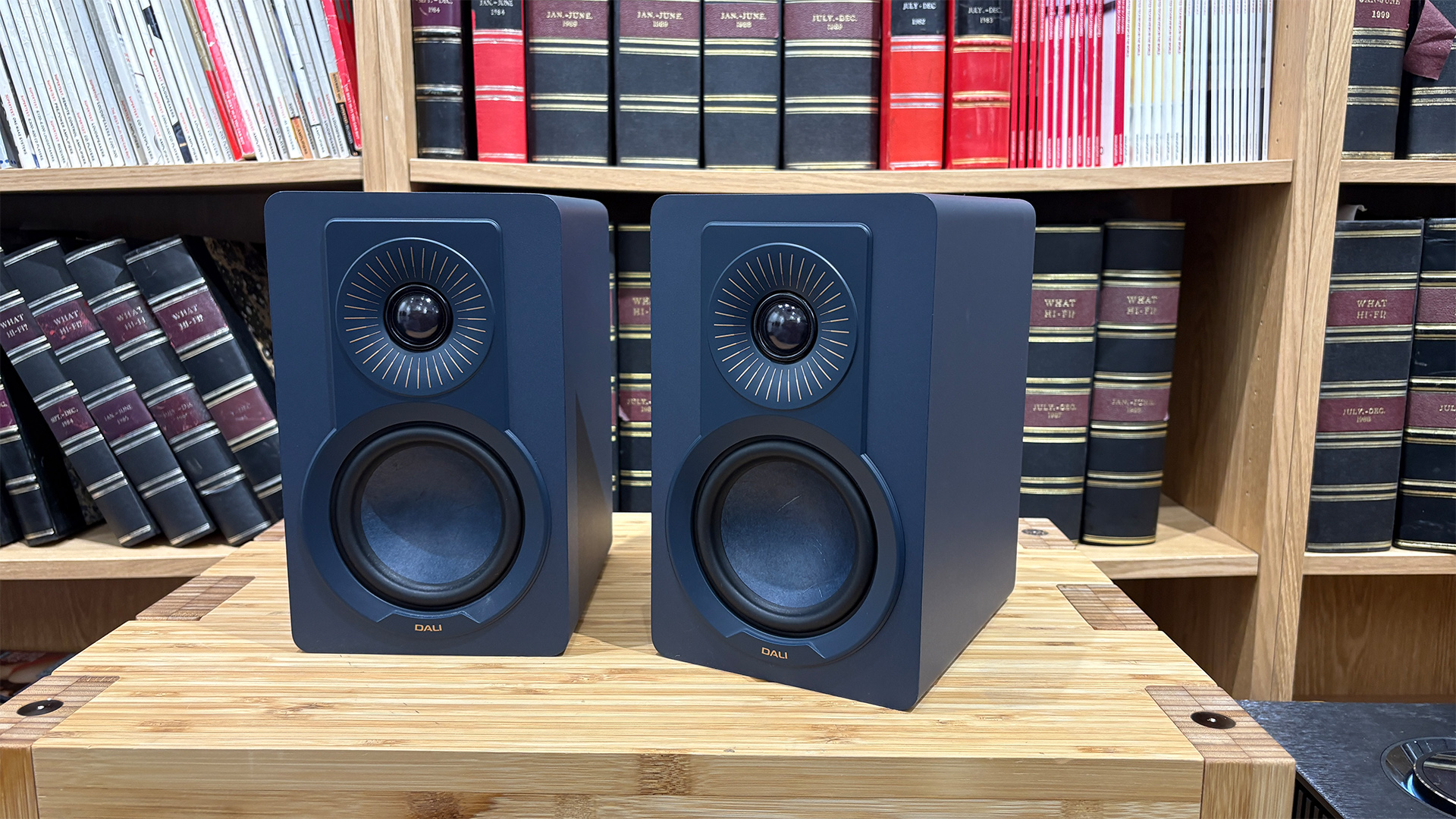
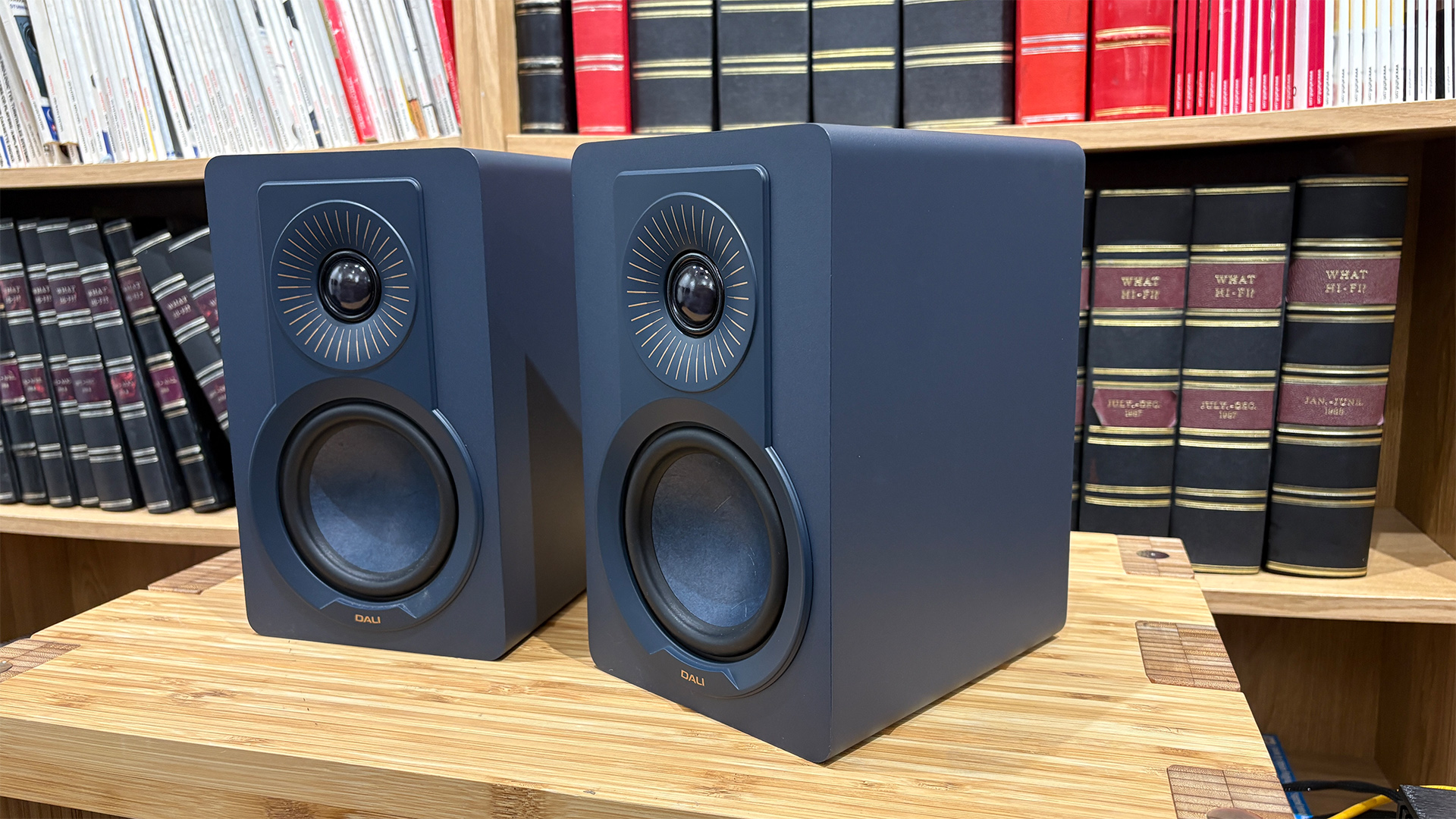
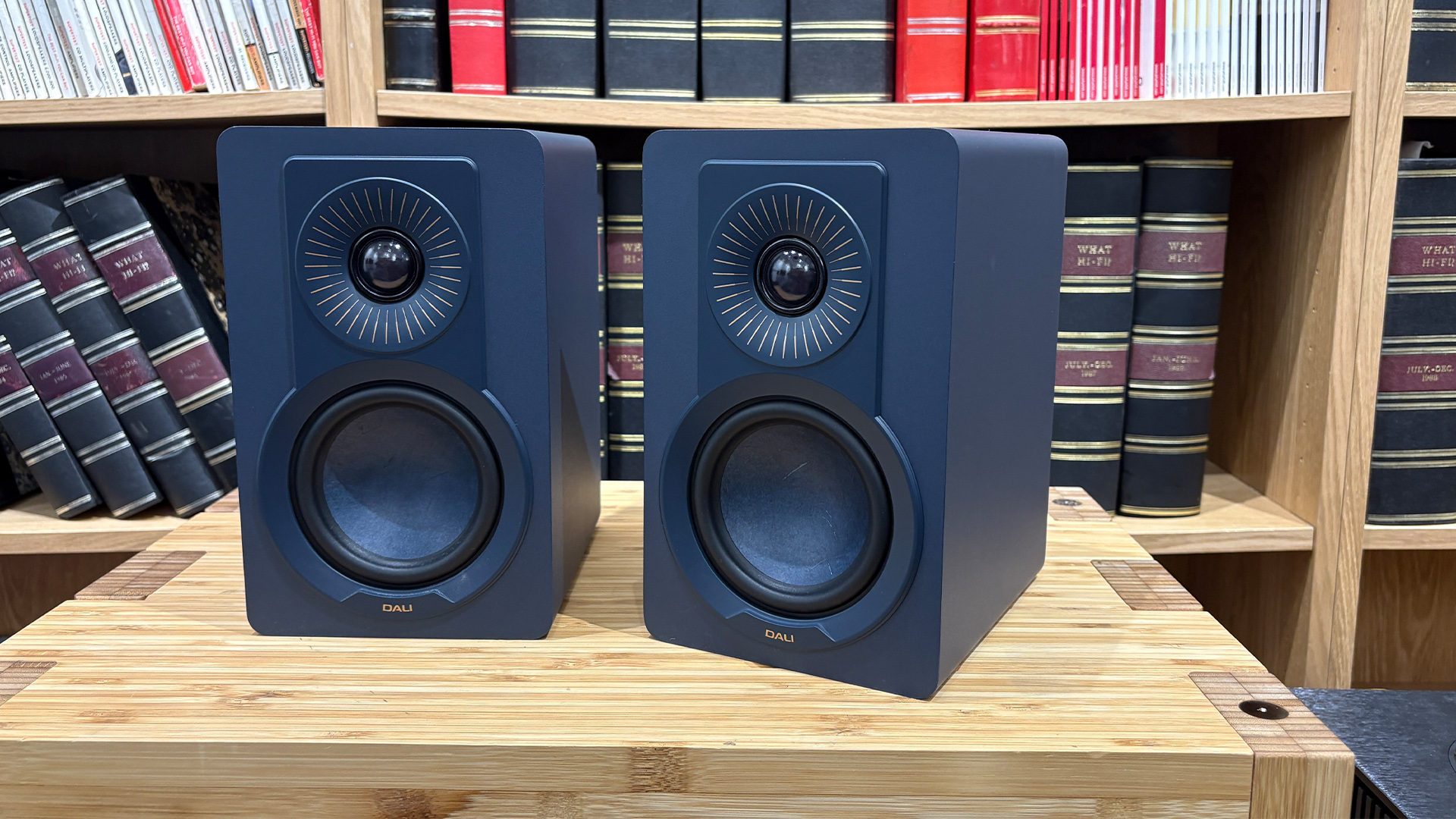
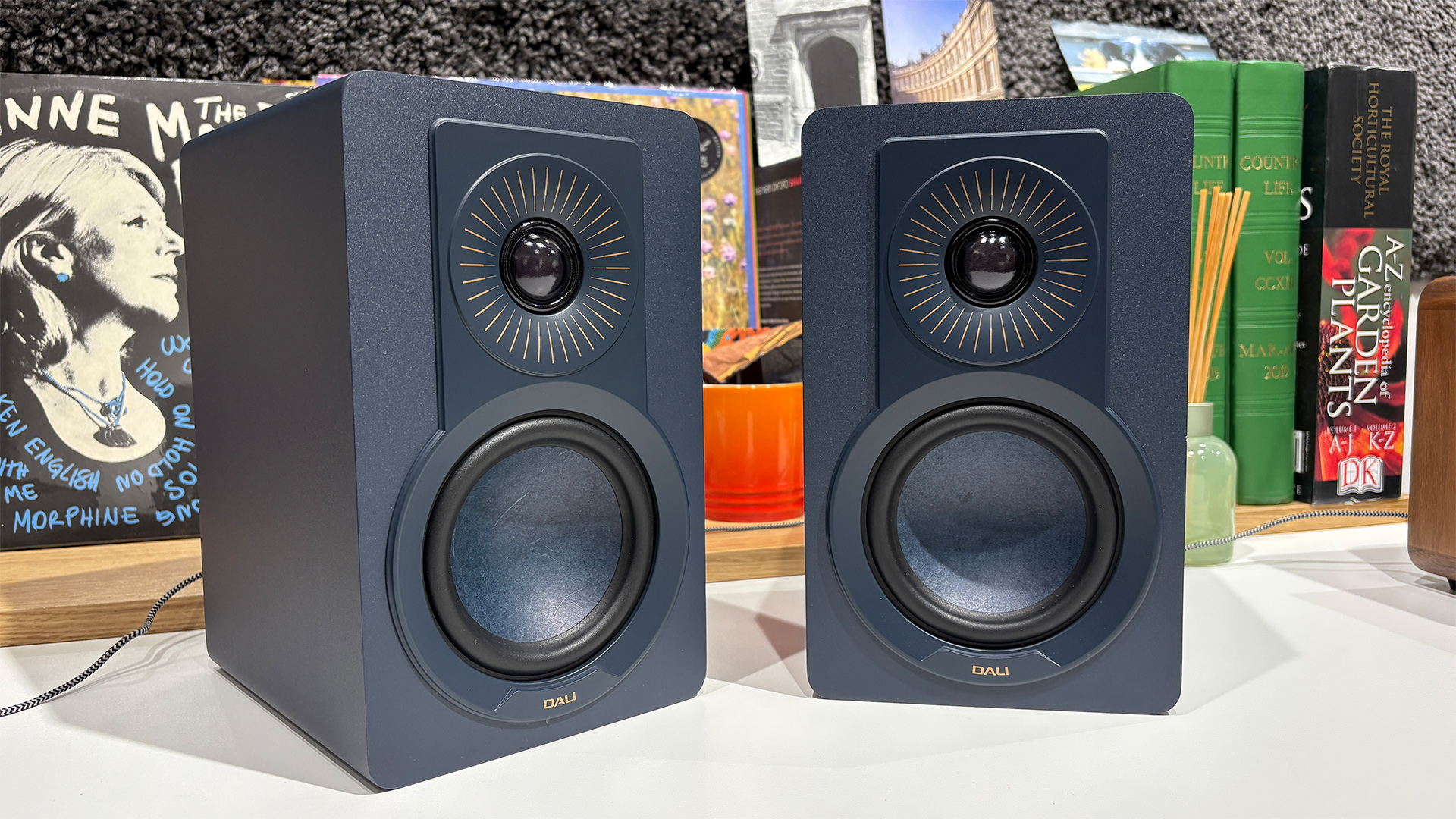
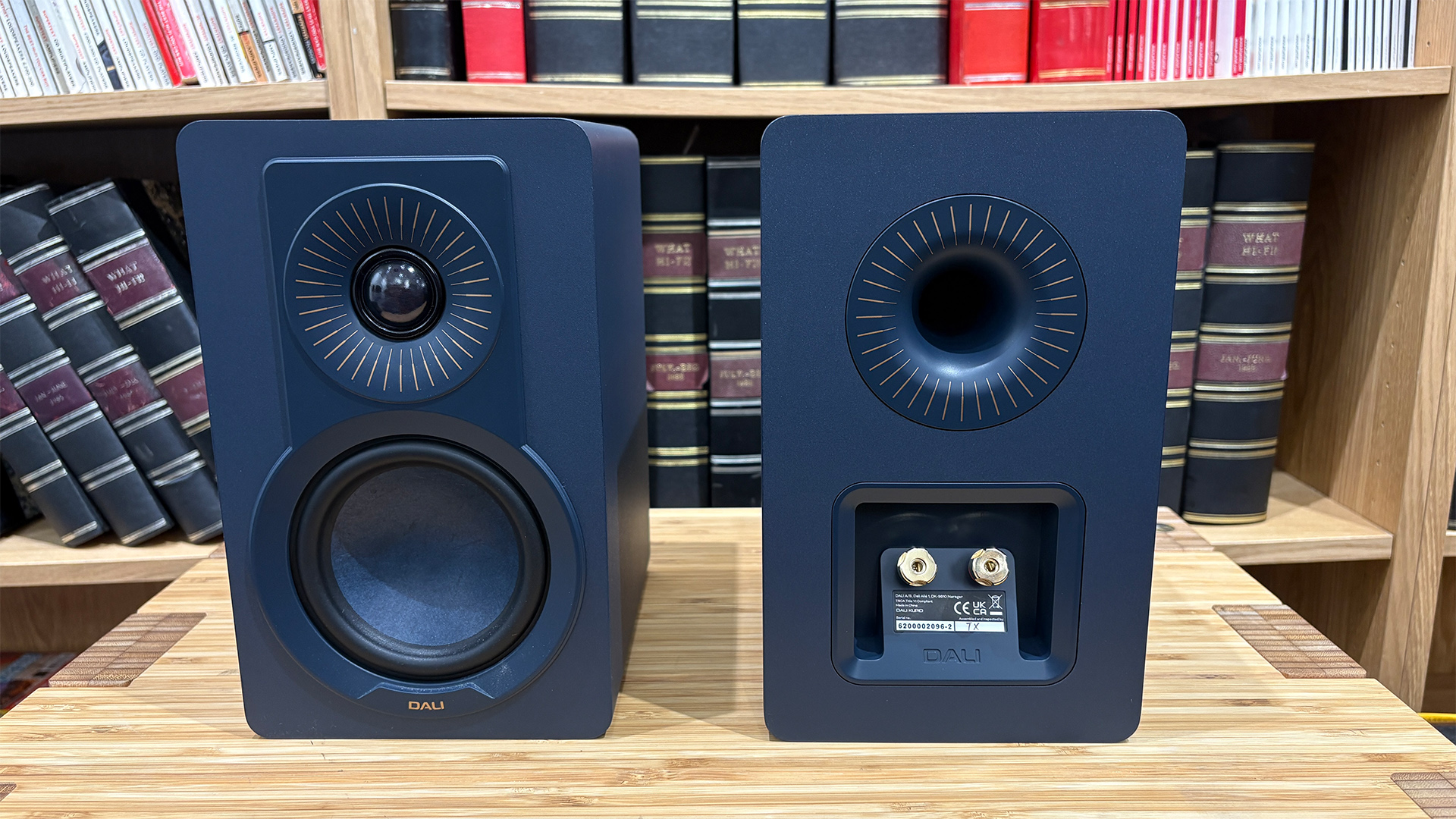
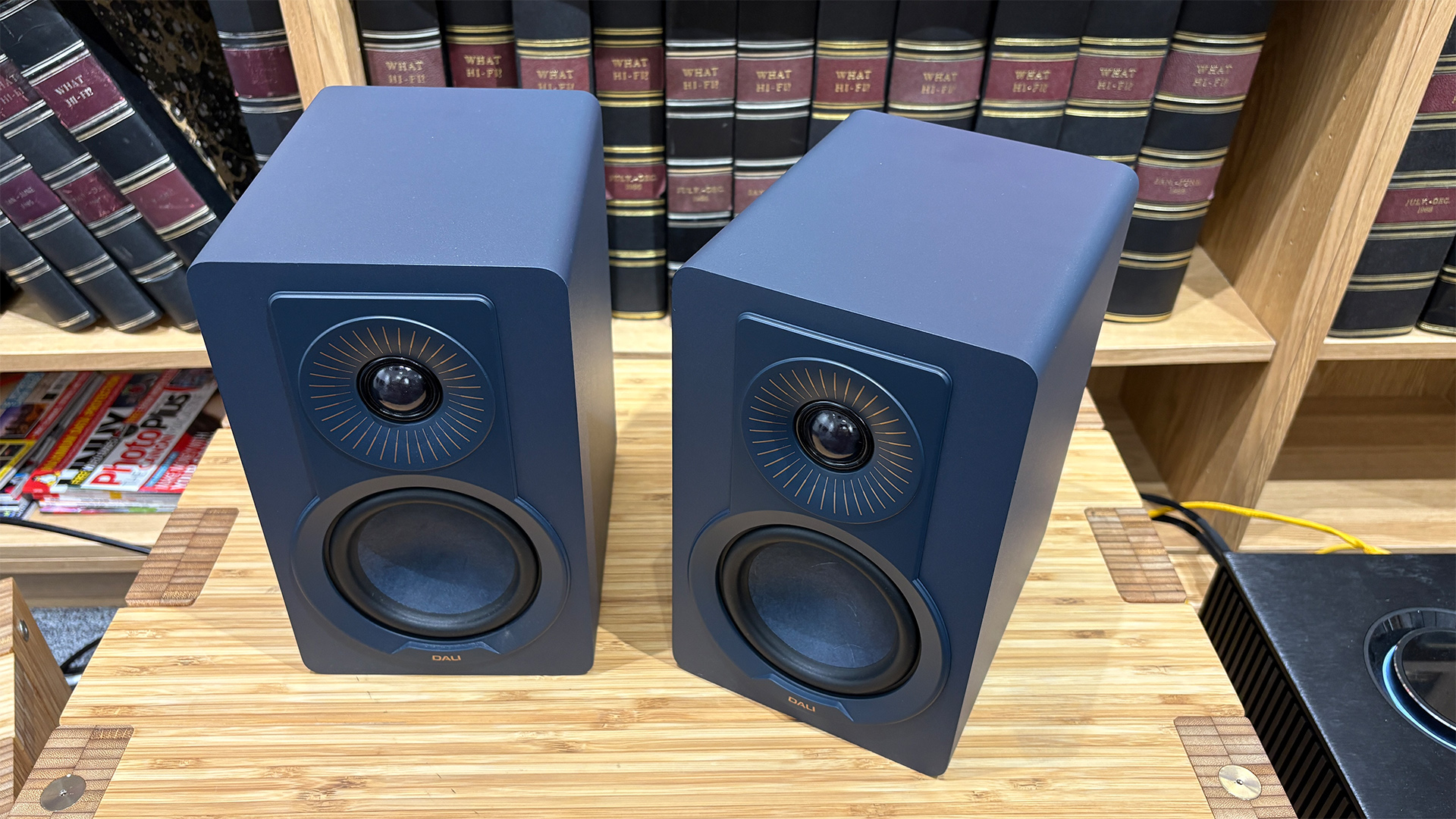
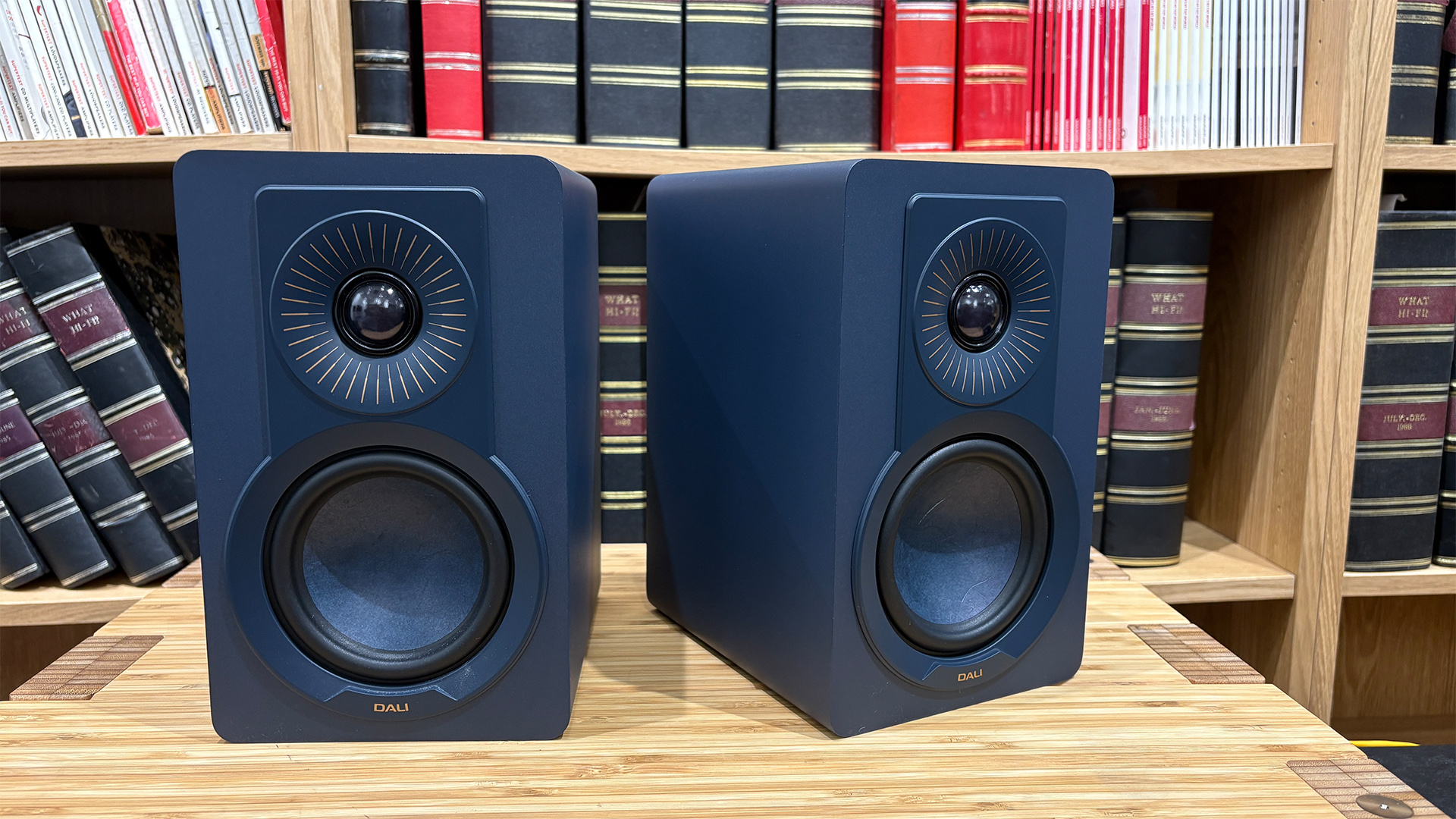
Specifications
Reasons to buy
Reasons to avoid
If you're in the UK (£299) or Australia (AU$599), the Dali Kupid are the most affordable speakers you'll find on this list. They're more expensive for US buyers at $600, but not so much that we don't consider them great value no matter where you get them.
The Kupid are truly compact bookshelf speakers. They've got a small price and a small footprint, weighing in at just 5.8kg, and while they've also got a low sensitivity of 83dB, we didn't find them tough to drive during our rigorous tests.
Their small size actually works to their advantage, as they can be placed on desks, cabinets, bookshelves, TV stands or large windowsills rather than on dedicated speaker stands, making them a perfect pick if you have with limited space. You can even mount them on the wall thanks to their included fixing screws and wall brackets.
Small speakers they may be, but the Kupid aren't shy in how they deliver their sound. The compact units offer a lively, nimble presentation that is packed with enthusiasm, and while you won't get a huge amount of bass, their expressive midrange takes the spotlight and shines as it does so.
They're great with rhythms, and as we stated in our review, the Dalis "exhibit a knack for snappy timing and agile rhythm (and) have a fleet-footed quality that zips along with all kinds of tracks in an engaging manner".
Dynamically, the Kupid can pull out the ebbs and flow of tracks with aplomb, all while revealing subtler moments with a delicate touch. They can bring out the drama of more challenging tunes, and while they may be small, we don't often feel as though the Kupid aren't immersing us in the music we feed them.
As we enthused in our review's verdict: "A great choice for small, modern music systems, the entertaining Dali Kupid will win over many hearts". How romantic.
Read our full Dali Kupid review
Best budget floorstanding speakers
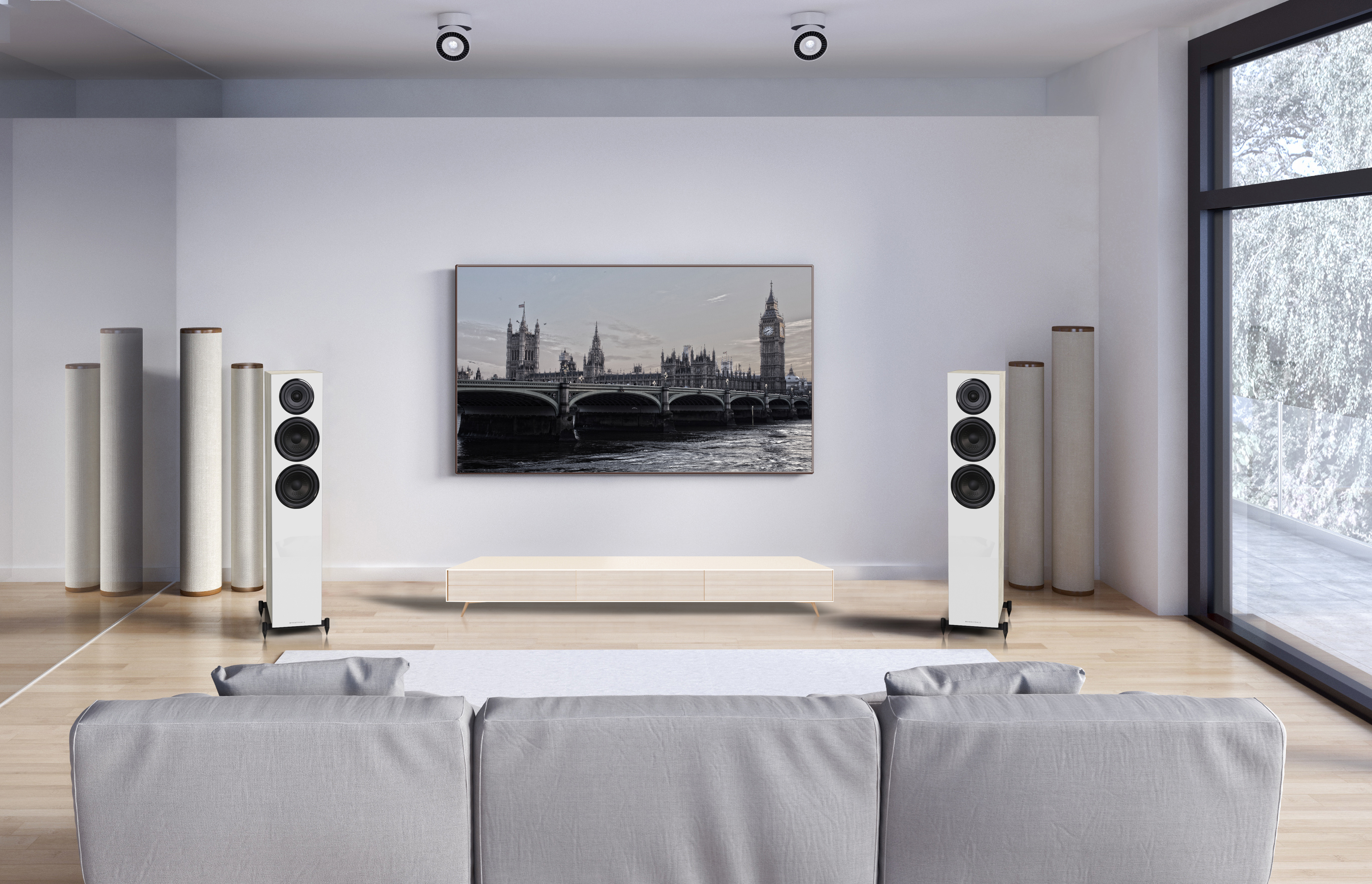
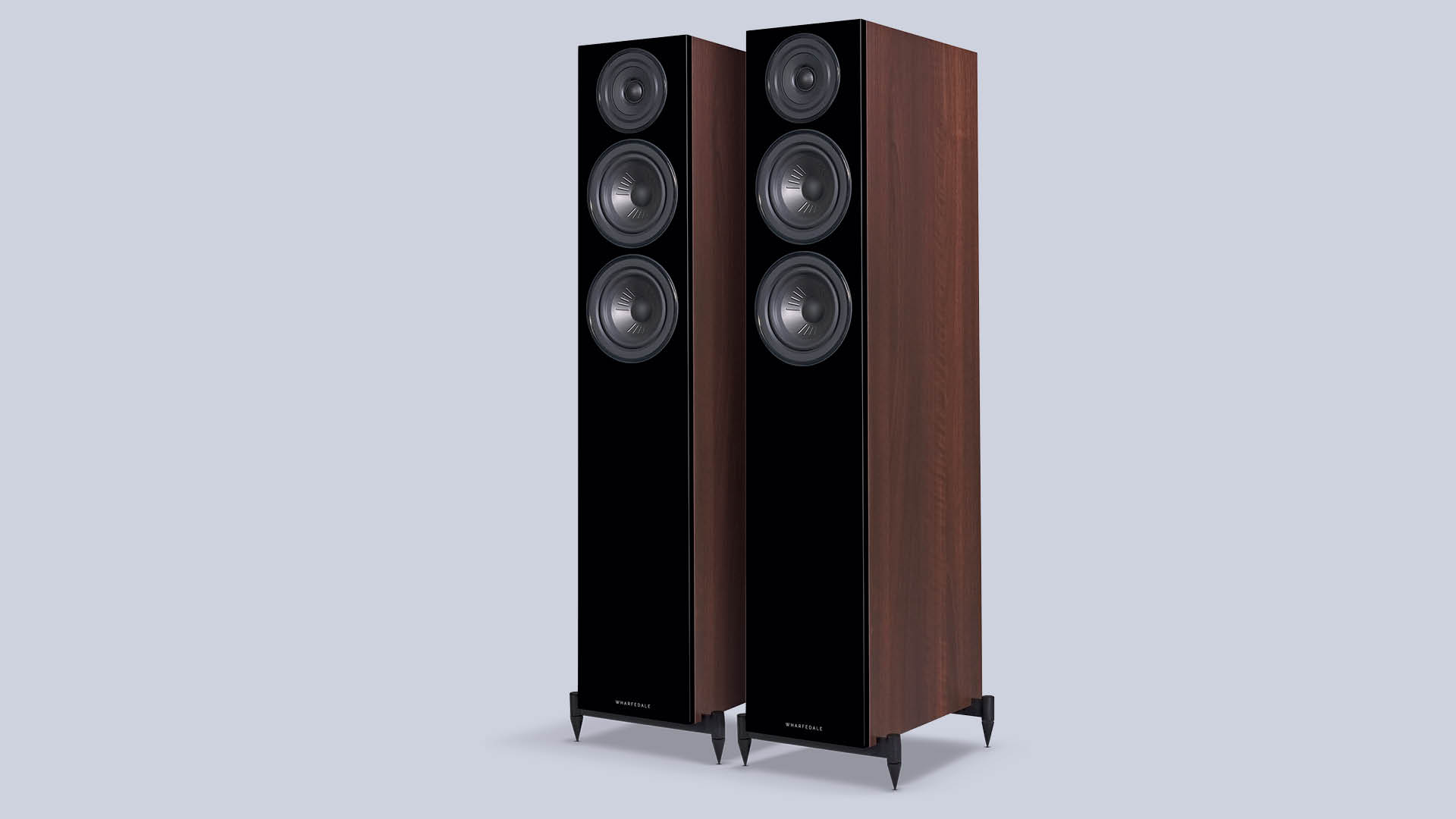
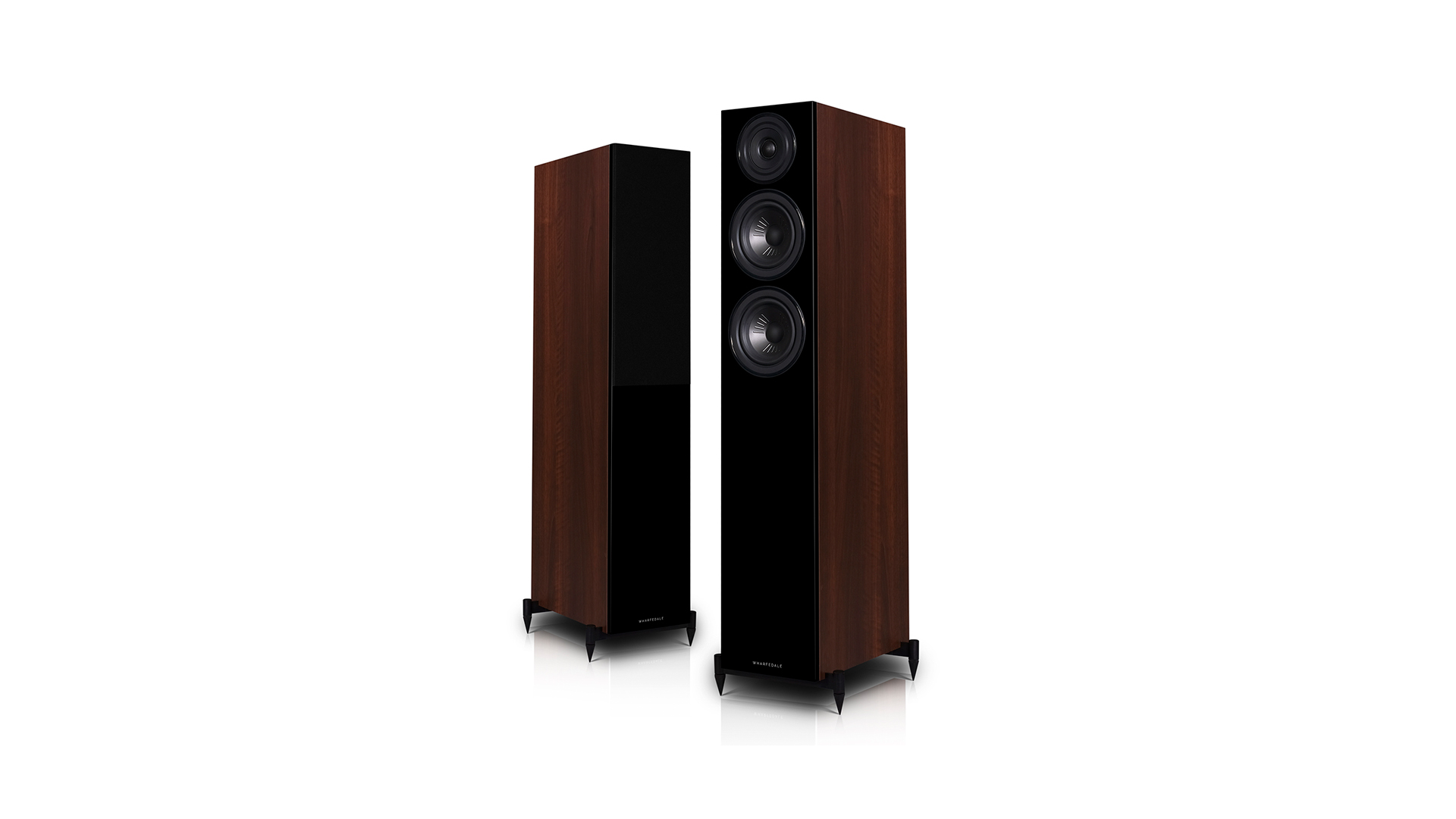
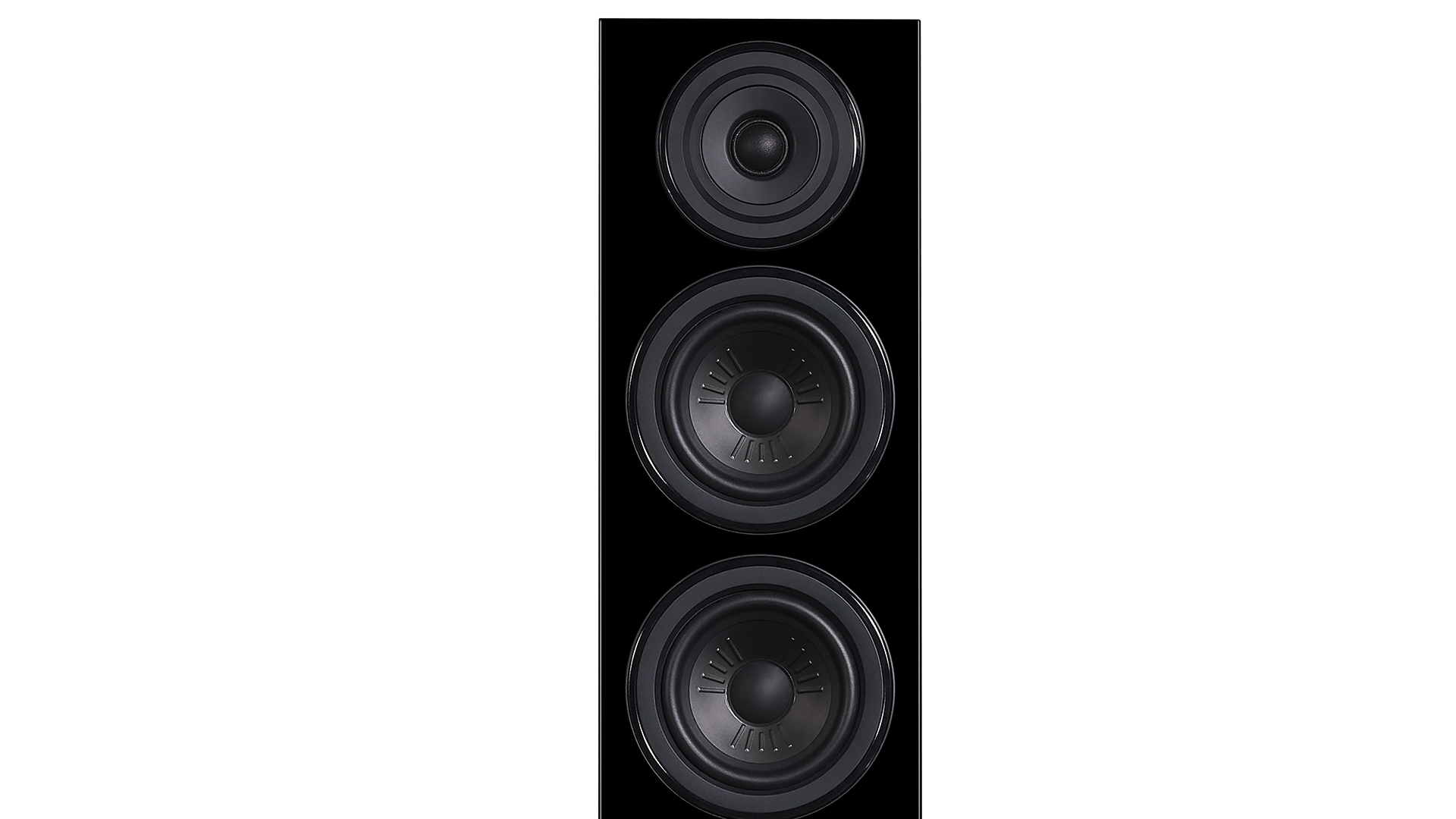
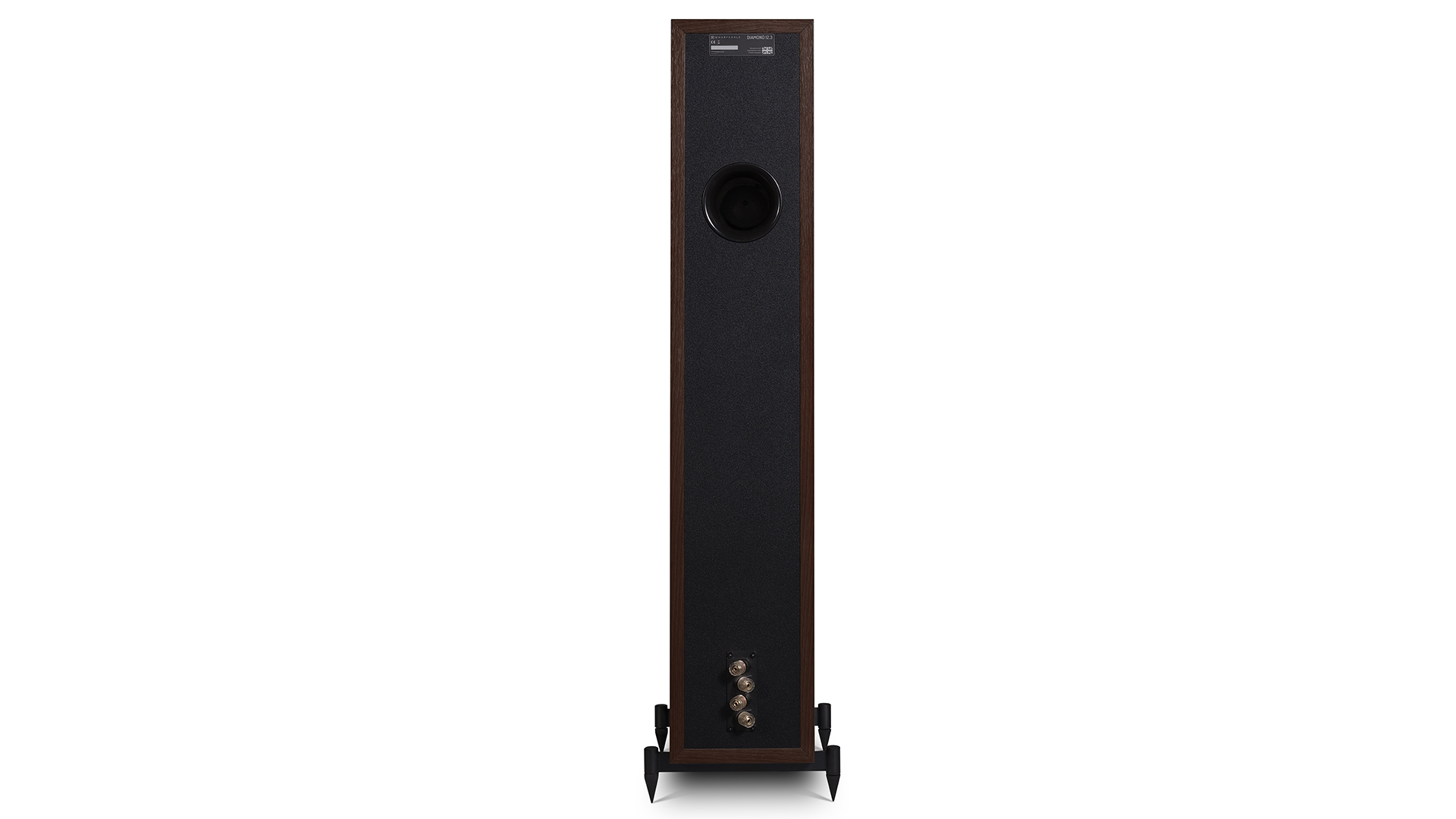
Specifications
Reasons to buy
Reasons to avoid
Wharfedale's Diamond range now features a truly outstanding (and affordable) floorstander. Indeed, we're so impressed by the Wharfedale Diamond 12.3's musical performance that it's a multiple and current What Hi-Fi? Award winner.
At 98cm tall, the Diamond 12.3 aren't a particularly imposing pair of floorstanders, so they'll fit into most spaces. Sonically, they're smooth, even-handed and wonderfully refined for the money. Feed them a poor signal and they’ll round off rough edges and downplay unwanted aggression without sounding like they’re smothering the life out of the music.
In our original review, we said: "Play them louder and these speakers don’t complain. They deliver Hans Zimmer’s raucous The Battle from the Gladiator OST with verve, tracking the brutal dynamics well. There’s punch and power when required, but also a level of subtlety that’s rare to find in a floorstander at this price."
The build quality is top-notch for the relatively modest price tag. The cabinets are crafted with a traditional straight-edge design and have a tidy feet arrangement for stability. These speakers are available in four finishes – black, walnut, white and a classy light oak – which is plenty of choice for most interiors.
If you're looking for reasonably-priced hi-fi floorstanders, the talented Wharfdale 12.3 are a superb buy.
Read the full Wharfedale Diamond 12.3 review
Best mid-price floorstanding speakers
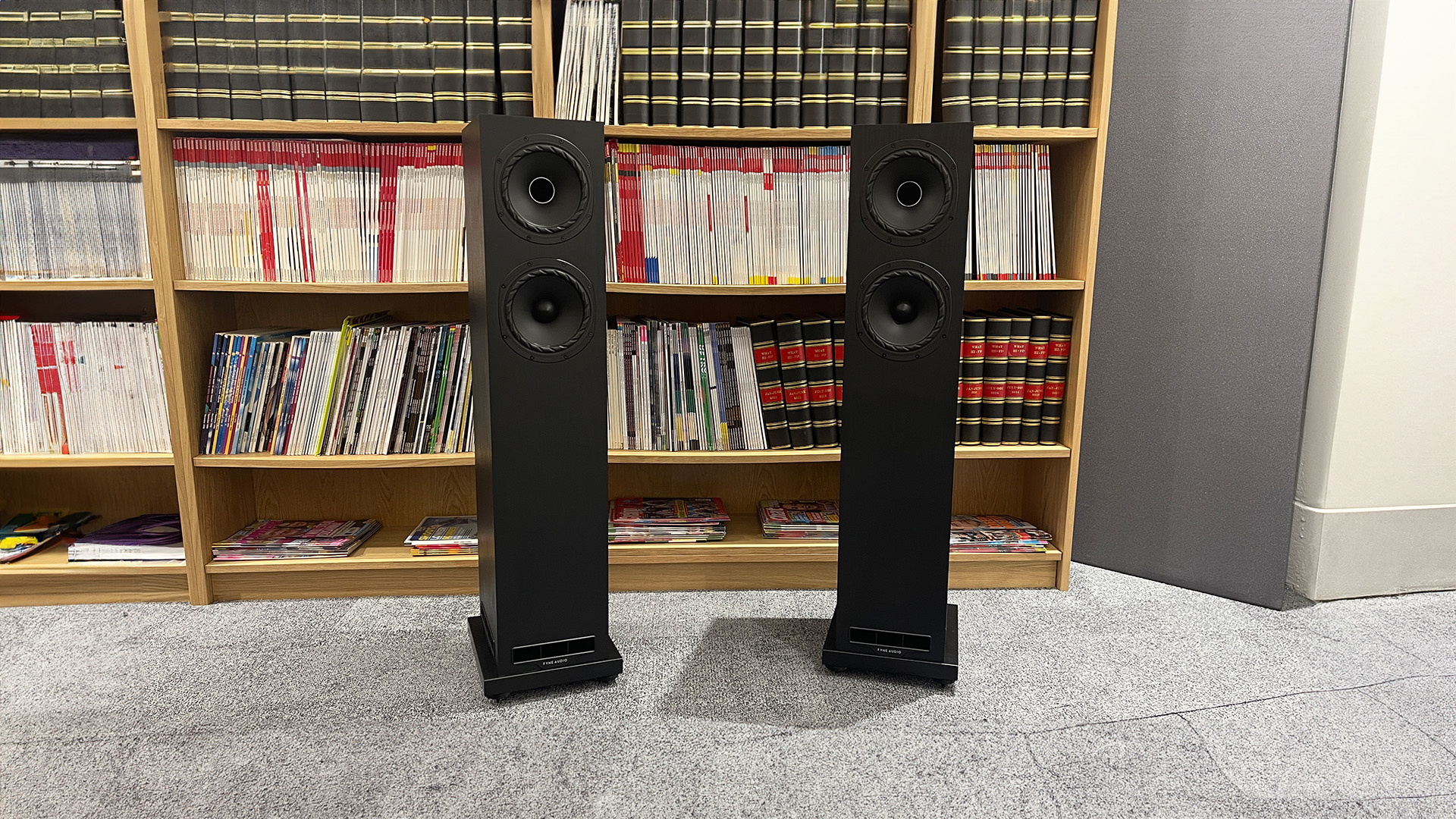
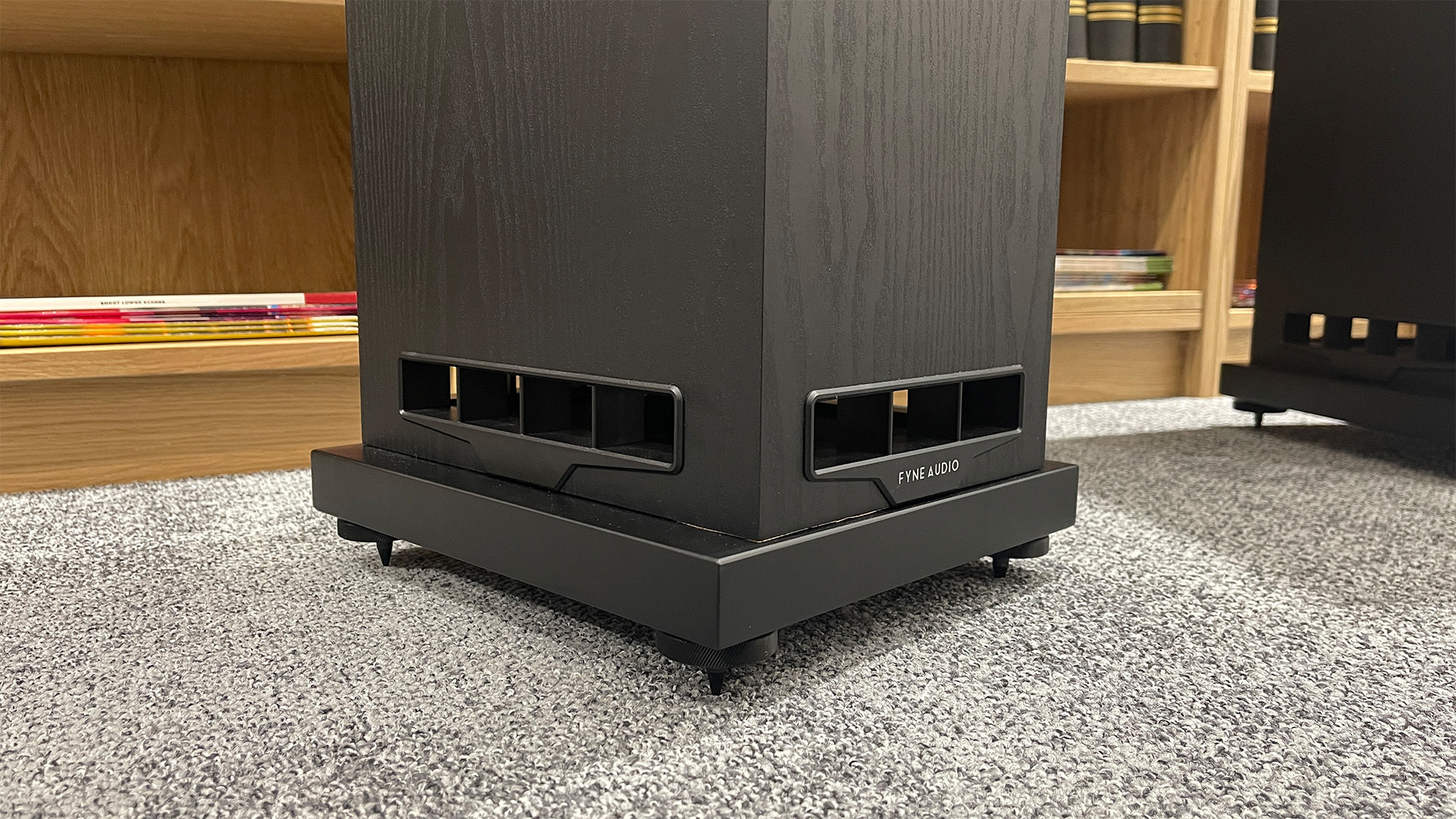
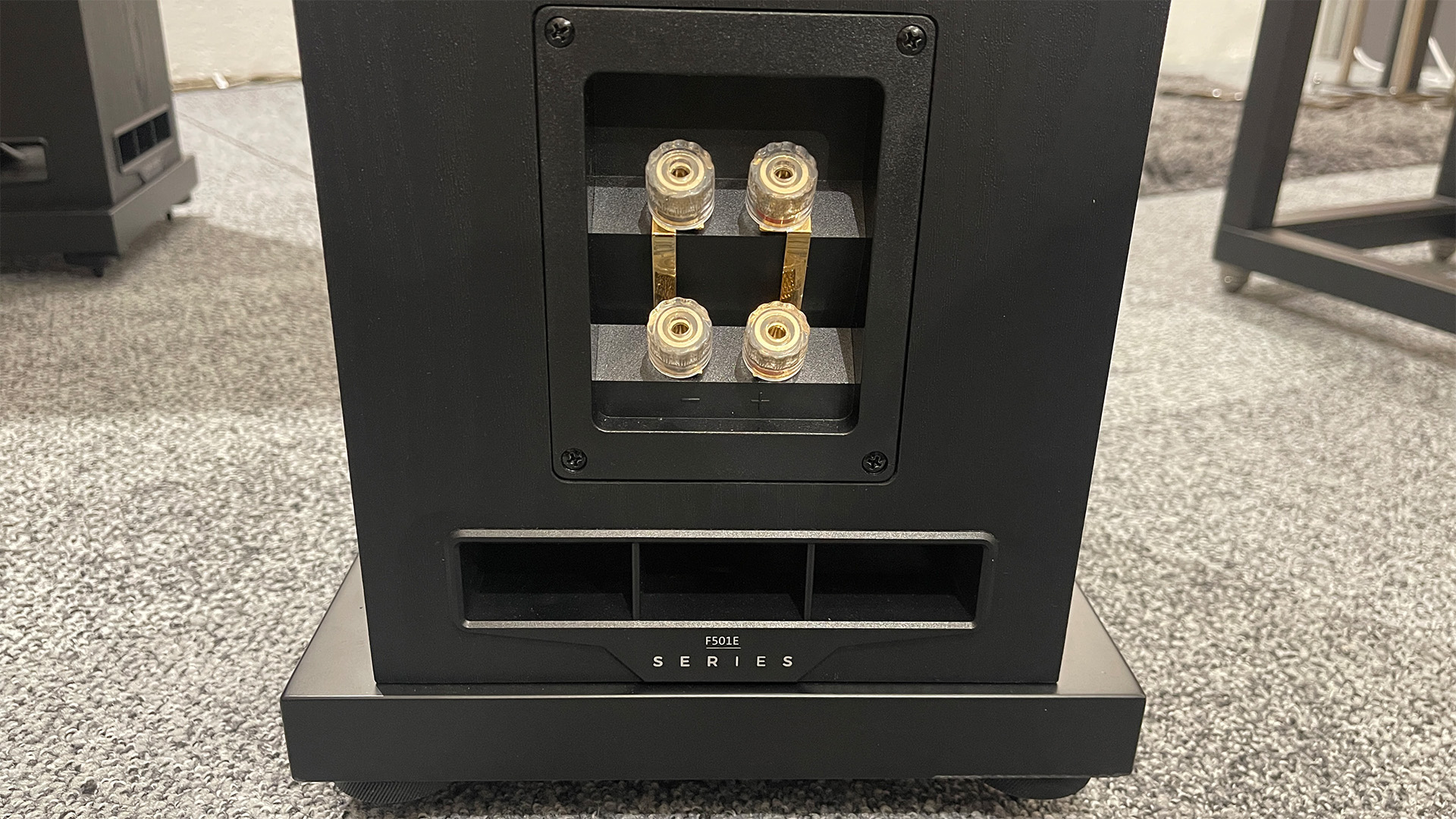
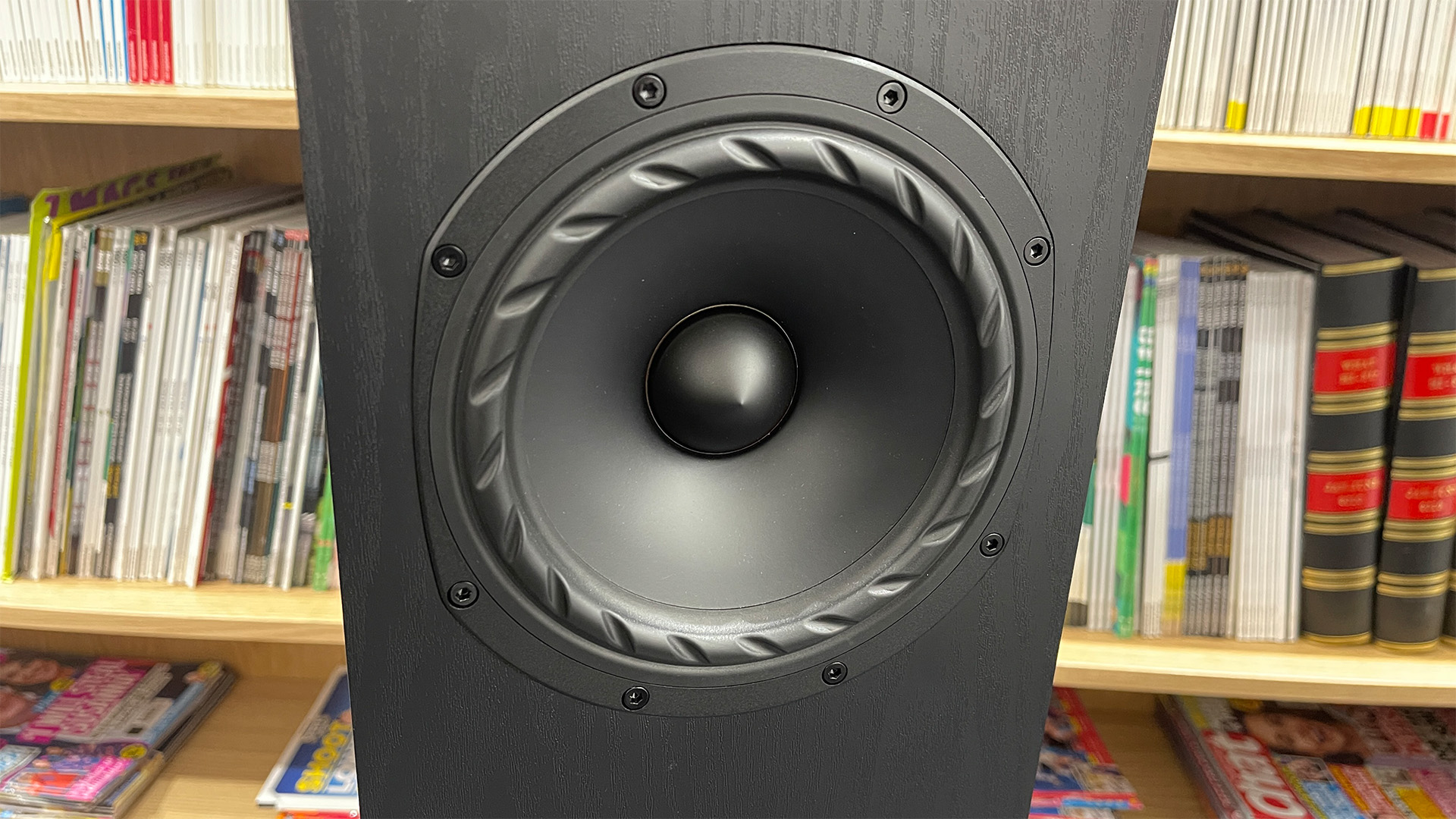
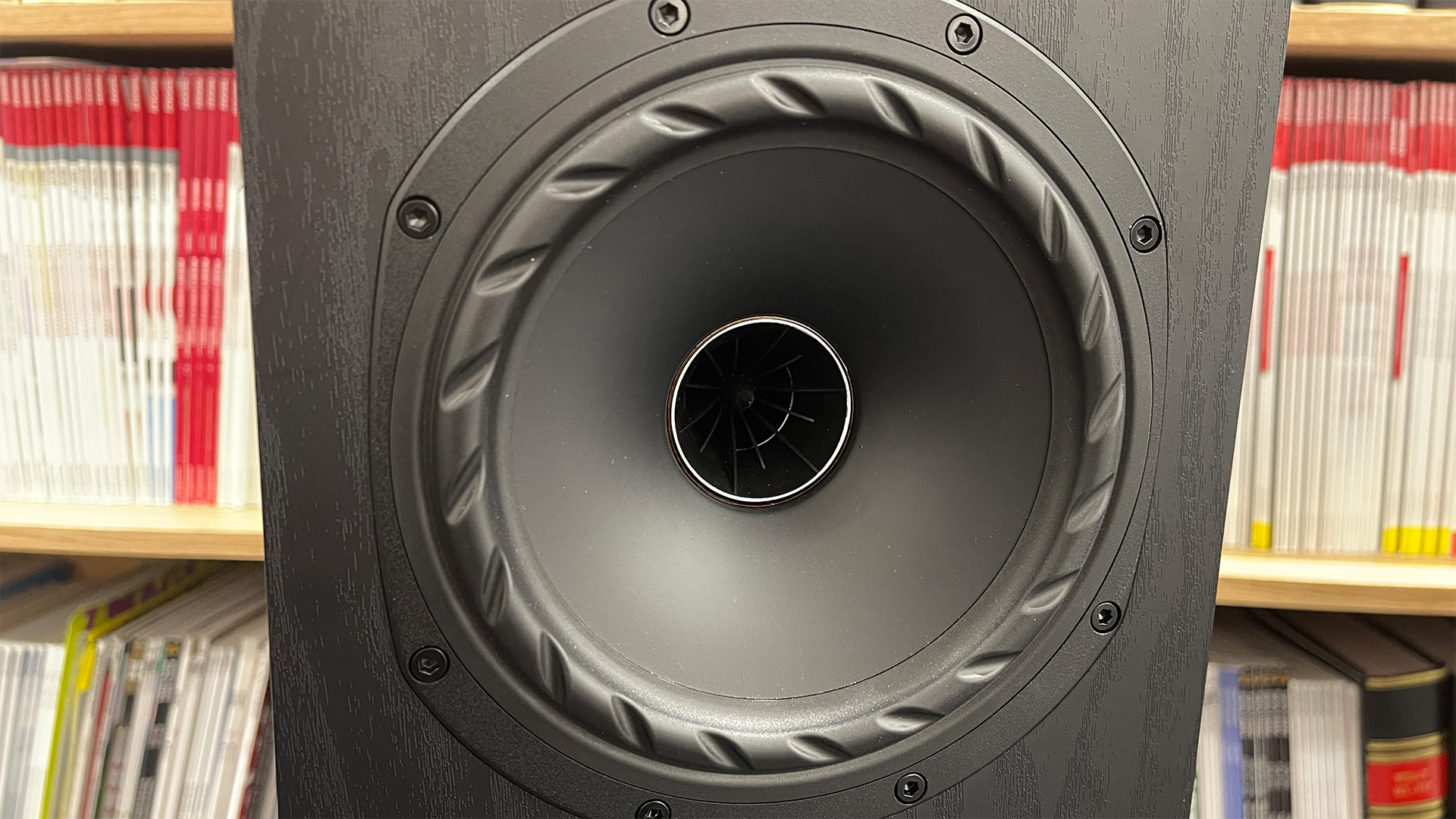
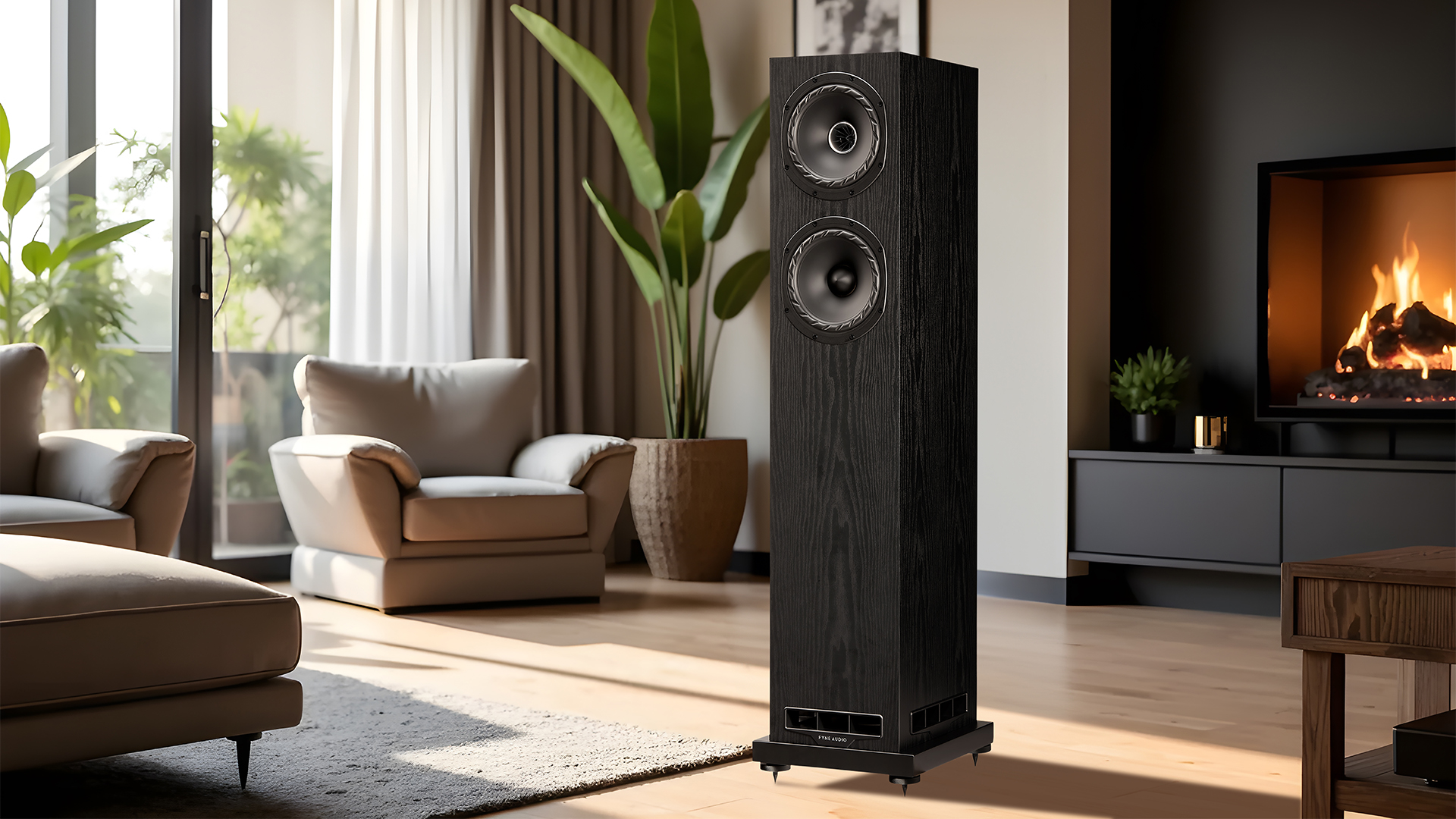
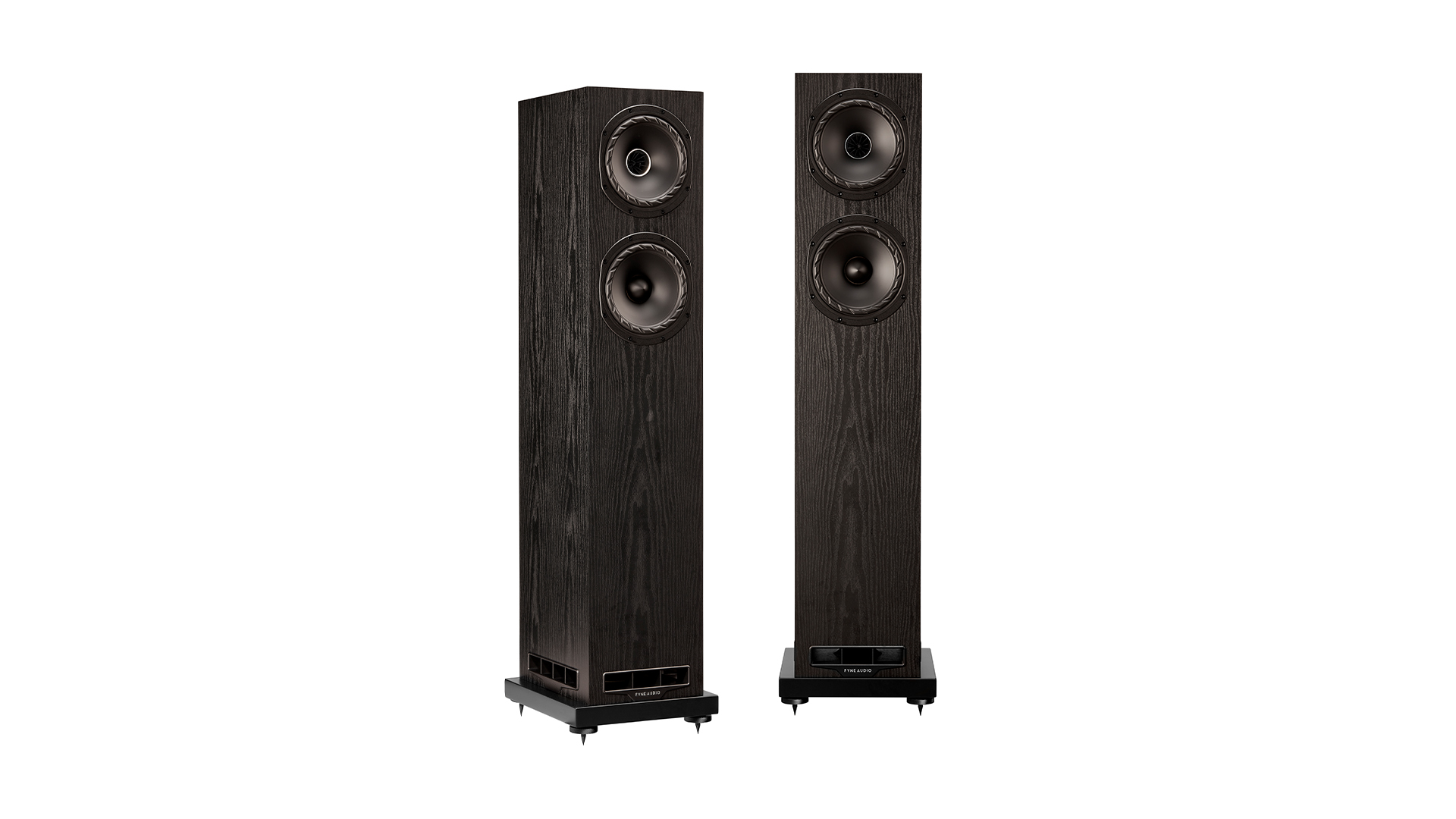
Specifications
Reasons to buy
Reasons to avoid
Fyne Audio's new entry-level floorstanders are aggressively priced. The 501E incorporate the brand's proprietary Isoflare driver technology that we've only seen in more premium models so far, and these floorstanders deliver a performance that outstrips their more established rivals at this midrange price.
Like PMC, the brand has sacrificed visual cosmetics to keep pricing down to this sub-£1000 level, which means you can only get the 501E floorstanders in a single (and somewhat plain) black ash finish.
The build quality is solid, though, and the speakers are peppered with clever technology to ensure they are relatively unfussy with placement and partnering. The Isoflare arrangement – a concentric design where the tweeter sits in the throat of the mid/bass driver – delivers an integrated sound with a very even and wide dispersion.
The low frequencies are spread evenly thanks to a downward port design, vents and Basstrax technology, which disperses bass evenly across a 360-degree spread – allowing these towers to be less fussy about room placement.
The 501E are tremendously fun to listen to, with a fluid and expressive way with all music genres. Rhythm and dynamic shifts are handled with control and subtlety, with instruments and voices sounding natural.
The overall sound is crisp and clear, with a nicely balanced tonality – the top end is refined and doesn't get harsh or bright with challenging material, while the bass remains taut and tuneful while packing ample punch.
We said in our review that the F501 deliver a "forthright performance with vocals that captures nuances and subtle shifts in intensity superbly. The rival Q Acoustics 5050 sound a touch disinterested and mechanical in contrast."
These are wonderfully insightful and capable floorstanders, balancing sophistication with muscularity, being able to communicate intimate recordings as well as full-blown orchestral crescendos with conviction. For their asking price, we couldn't ask for better. We are entertained, and we think you will be too.
Read the full Fyne Audio F501E review
Best premium standmount speakers
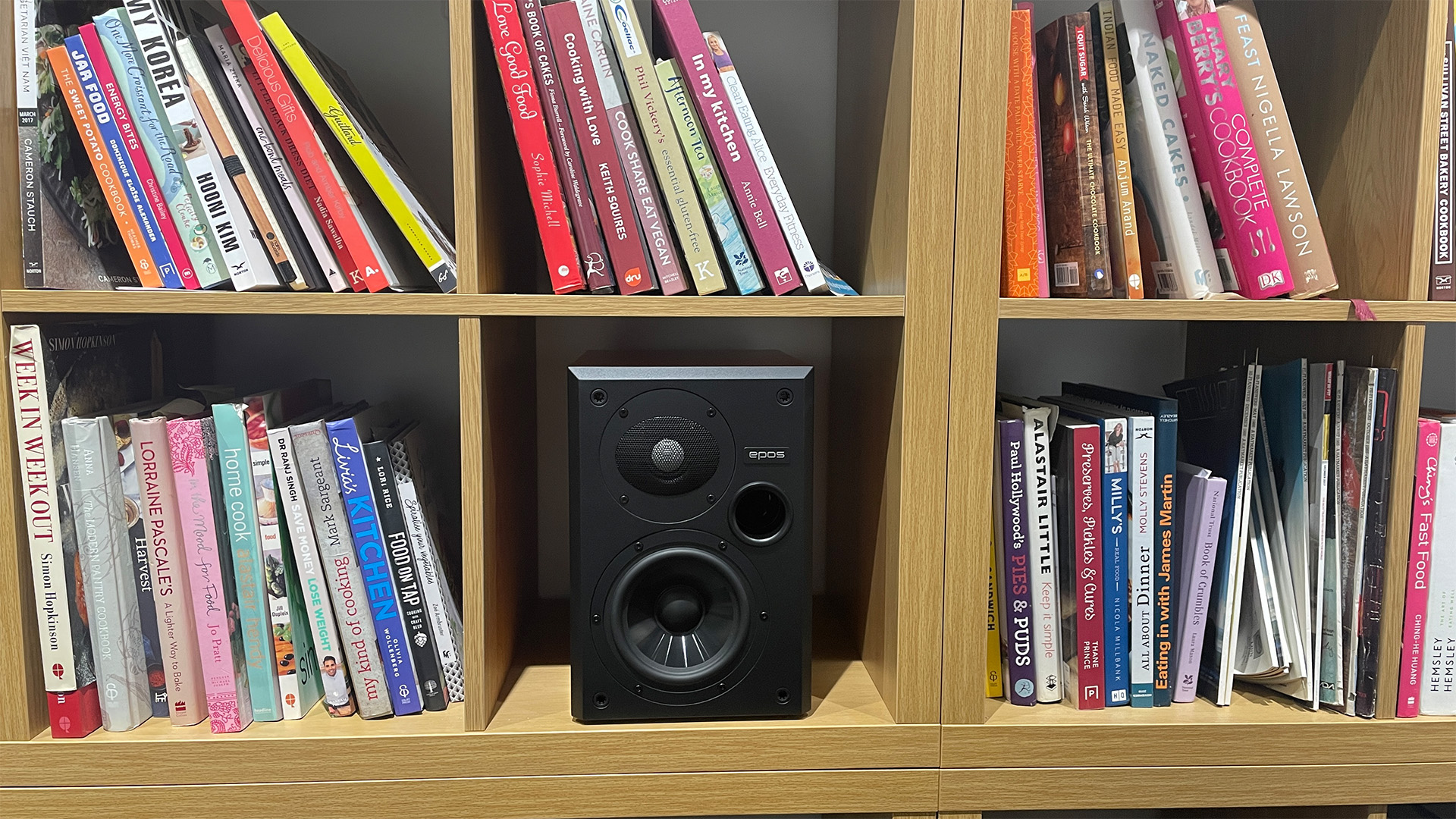
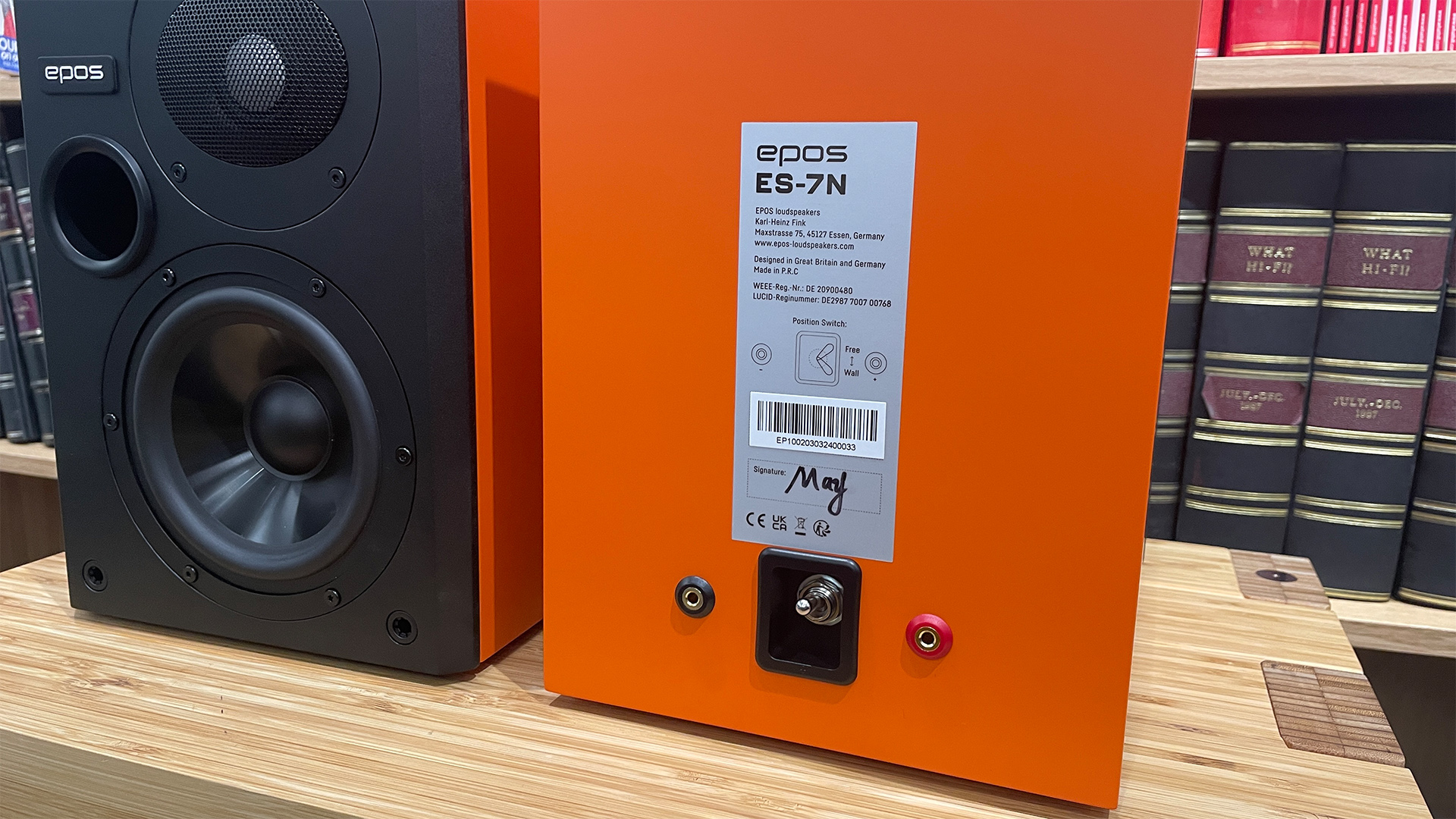
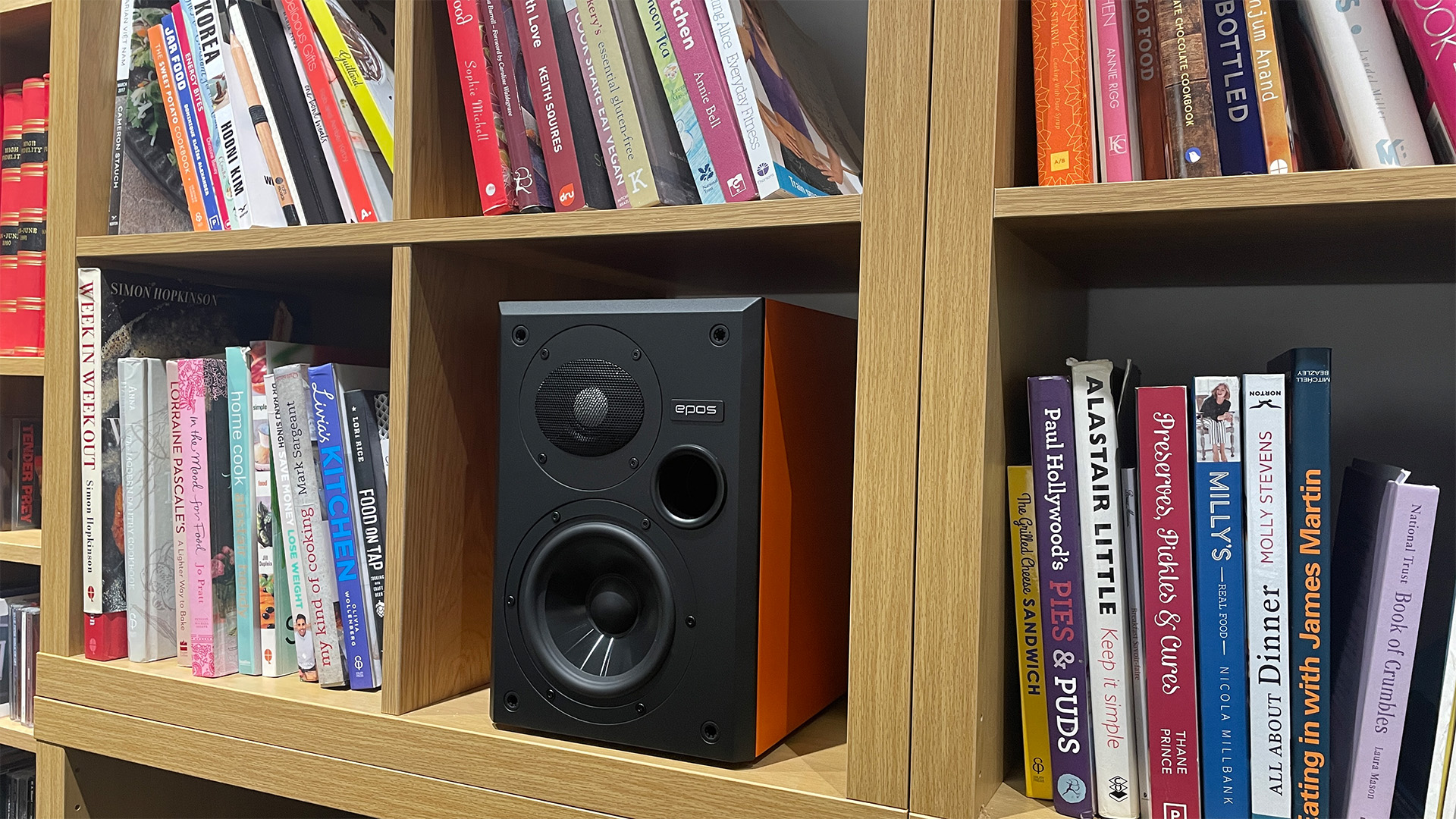
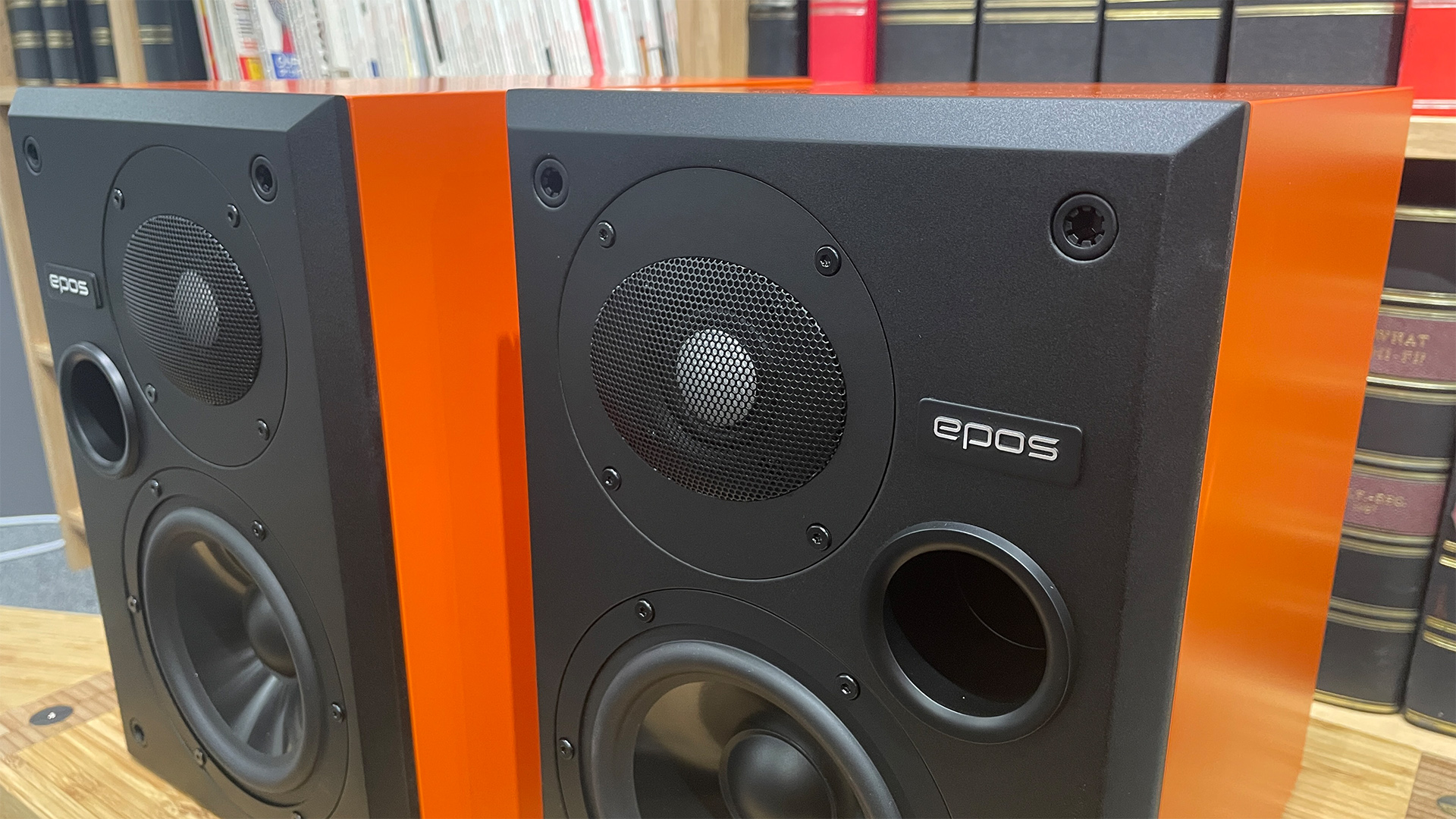
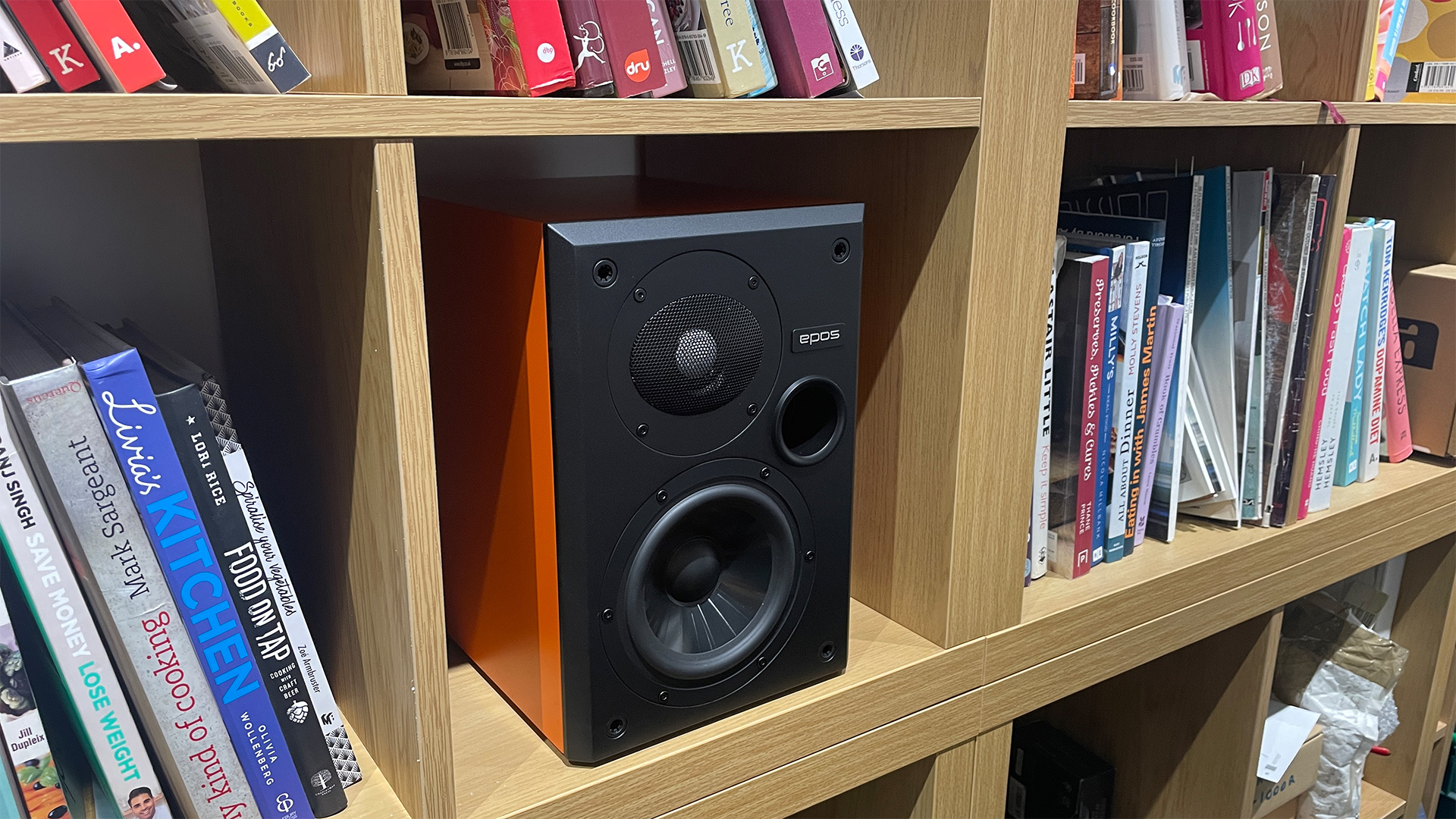
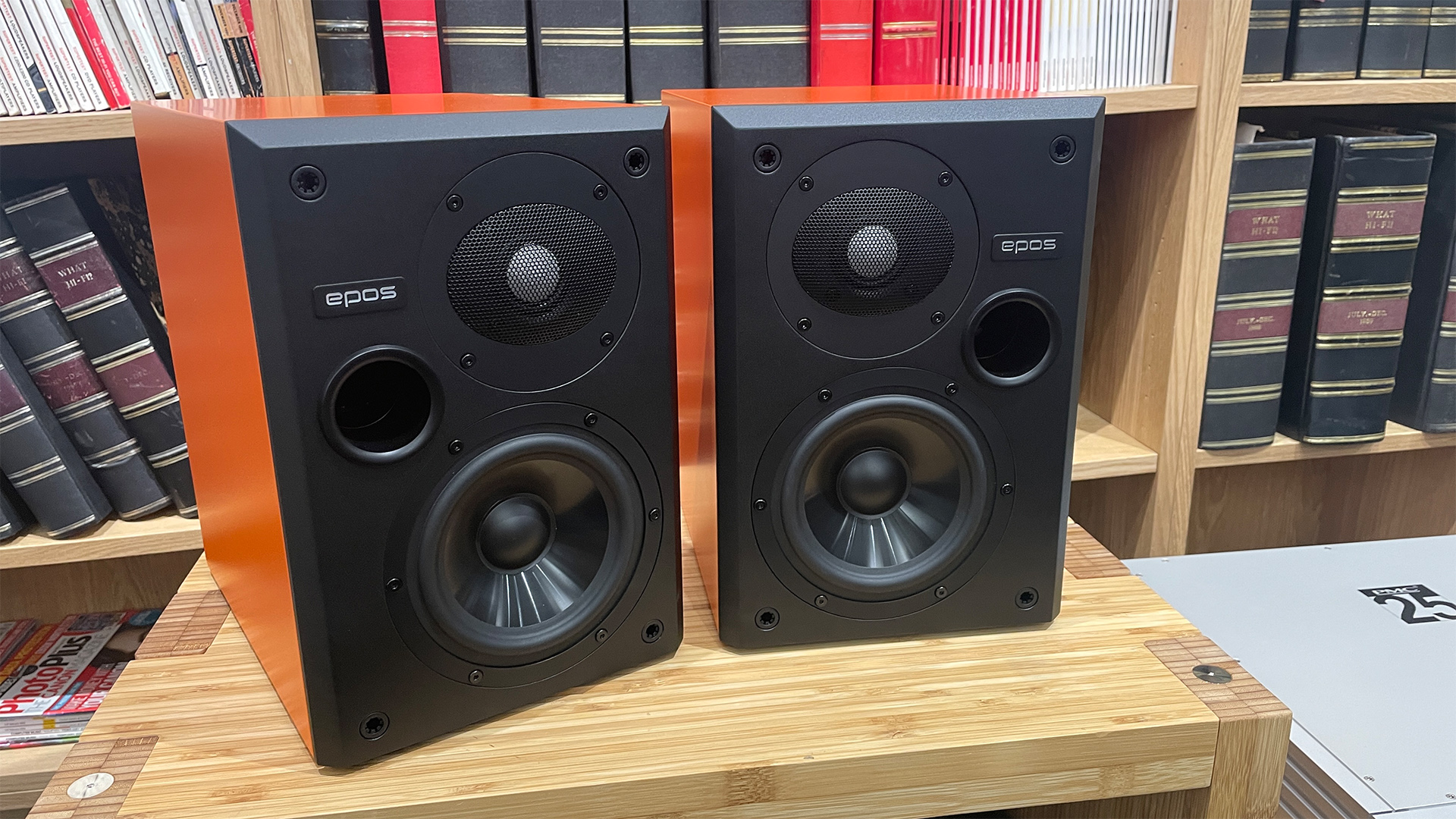
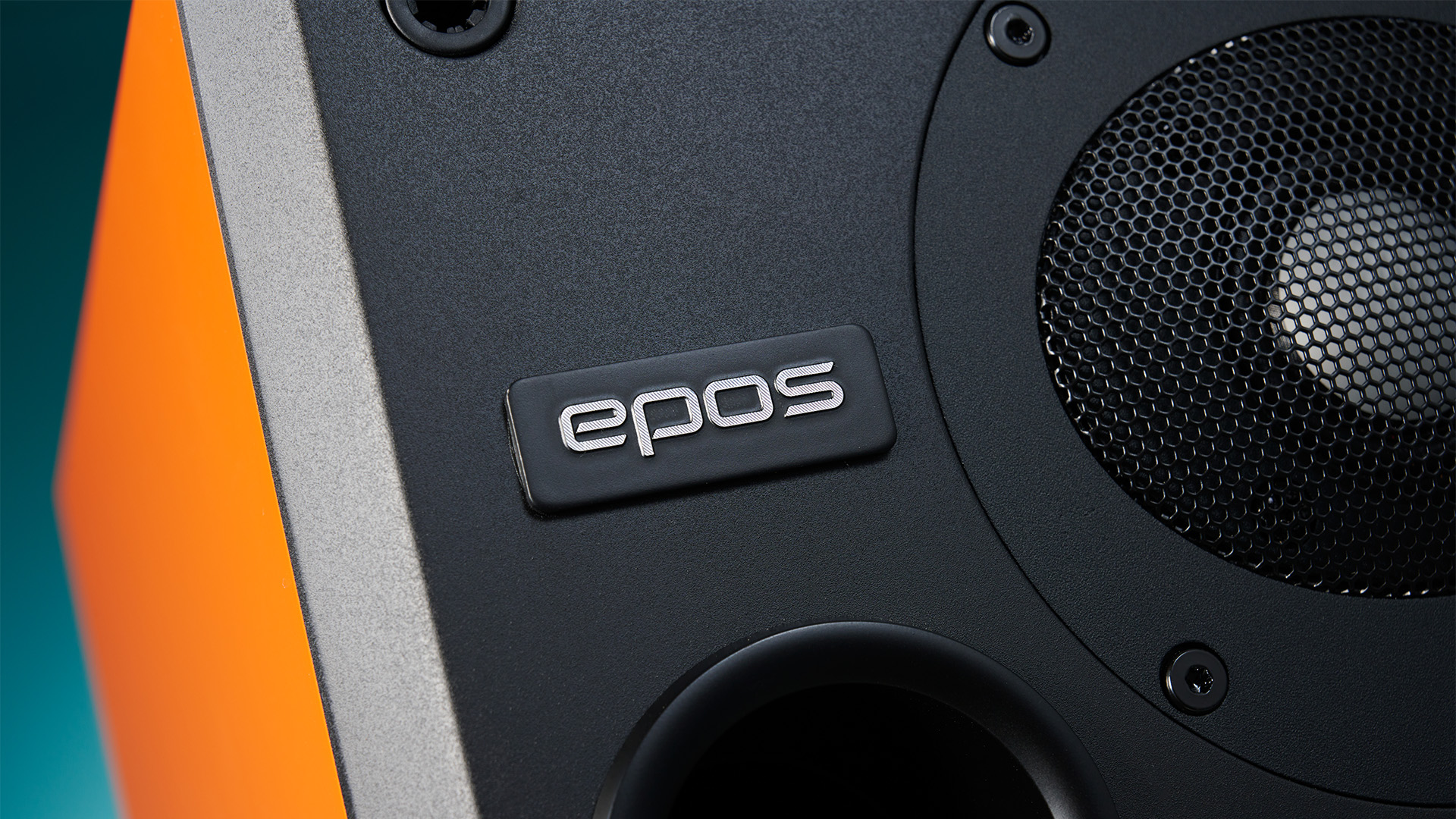
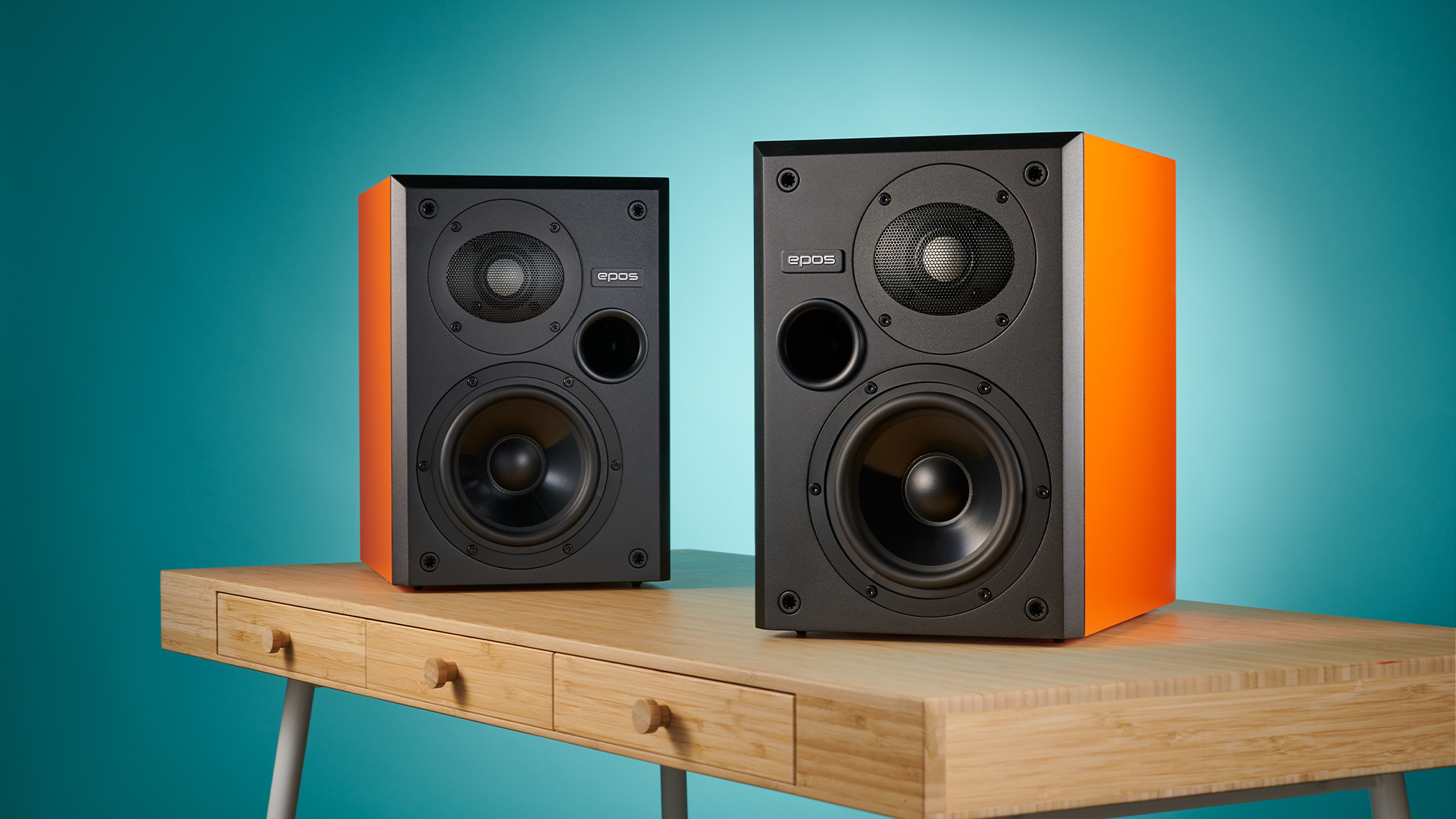
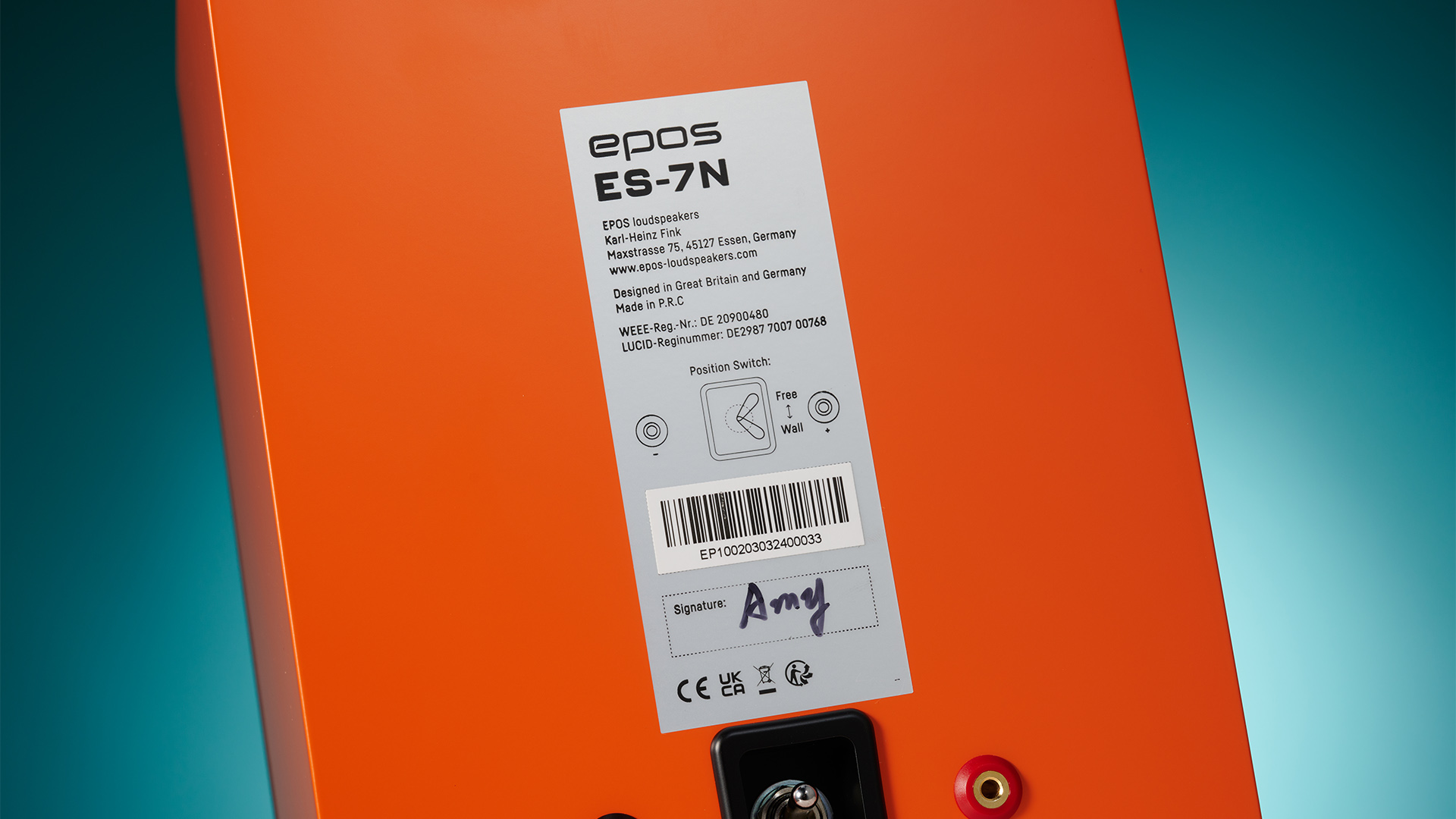
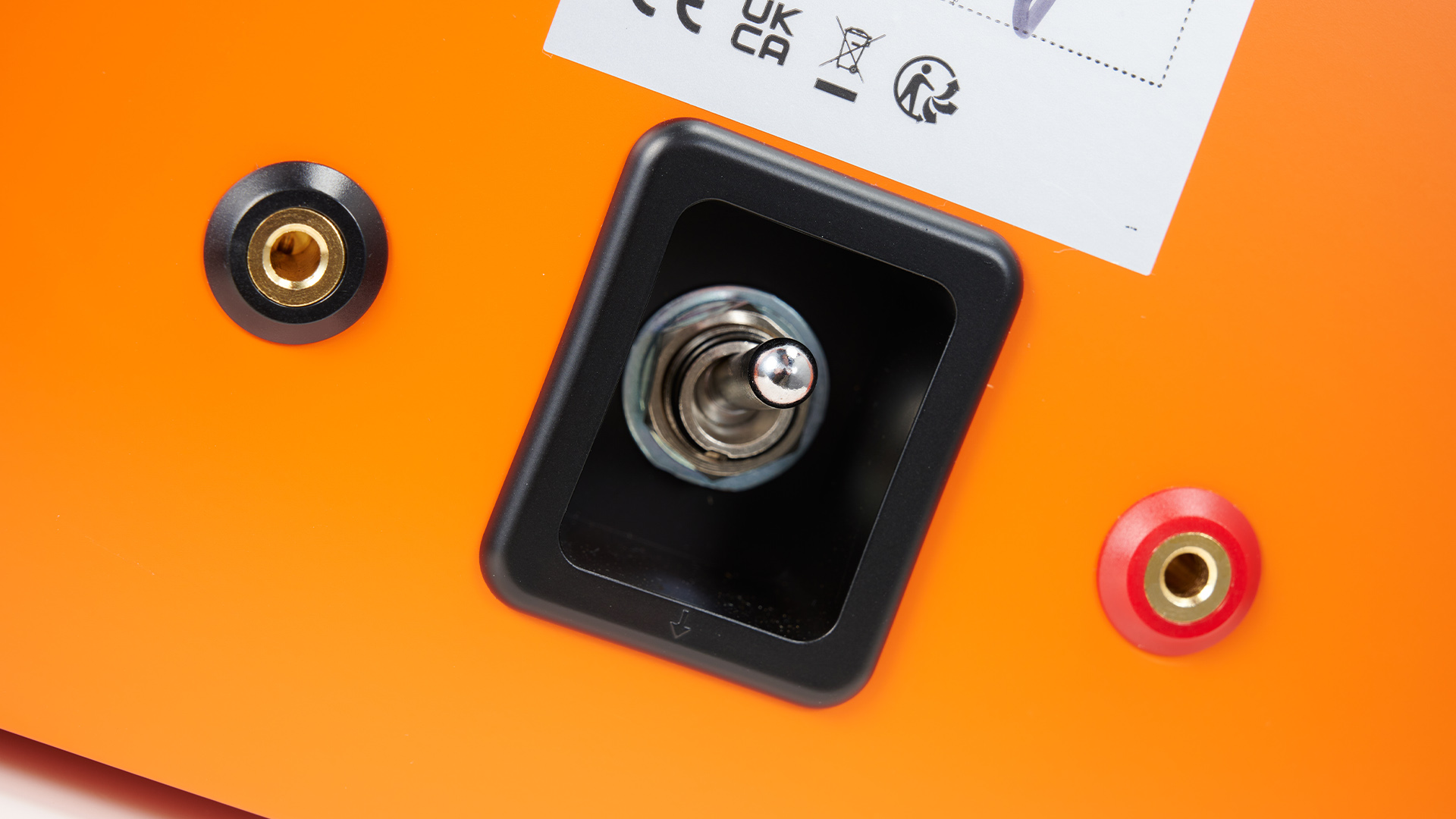
Specifications
Reasons to buy
Reasons to avoid
While we (and most manufacturers) would advise you to place standmounter or bookshelf speakers on dedicated stands, Epos has made things a little more flexible. Recognising that it's not always viable for people to accommodate stands in their space, Epos has optimised its ES-7N small speakers so they sound their best even when placed inside a bookshelf.
Flip a switch at the back of these petite speakers and the speakers will adjust their performance accordingly when placed up against a wall or corner to remain evenly balanced.
It's impressive just how close to the free-standing (away from wall, on stands) performance these speakers get when placed inside our IKEA Kallax bookshelf, and while there is a slight drop in clarity and stereo imaging, it remains a fantastic presentation overall.
In fact, even though these are small boxes that won't compete with larger designs – such as KEF's R3 Meta, which offer deeper bass, bigger and more dynamic sound – what these Epos speakers do so well with music gets us smiling with joy and our feet tapping. They're incredibly talented.
As we said in our review: "The ES-7N are bold and confident performers that resolve high levels of detail and organise it in a cohesive and musical way. Play Kendrick Lamar’s Not Like Us and the Epos kick like a mule. They sound taut and punchy with music such as this, delivering the song’s jumpy rhythm track in a wonderfully surefooted manner.
There is plenty of drive here and the speakers are great at conveying the music’s varying momentum."
Voices are delivered with impassioned nuance and clarity, and bass notes are – for such small cabinets – taut, solid and grippy. We love the similarly-priced Neat Petite Classic's fun, peppy presentation, but the Epos are even more precise and controlled when it comes to rhythmic agility.
They are just as considerate with more classical or intimate recordings, and they pair well with a variety of amplifier partners, from the budget Rotel A8 to the premium Naim Nait XS3.
The Epos ES-7N are charming performers. They are small, hugely capable and surprisingly unfussy in use. That they recognise not everyone will be able to position their speakers perfectly and sound just as good when placed inside bookshelves is a rare talent that should be celebrated.
If your budget can stretch this high and you have a small space to work with, these are highly recommended.
Read the full Epos ES-7N review
Best premium floorstanding speakers

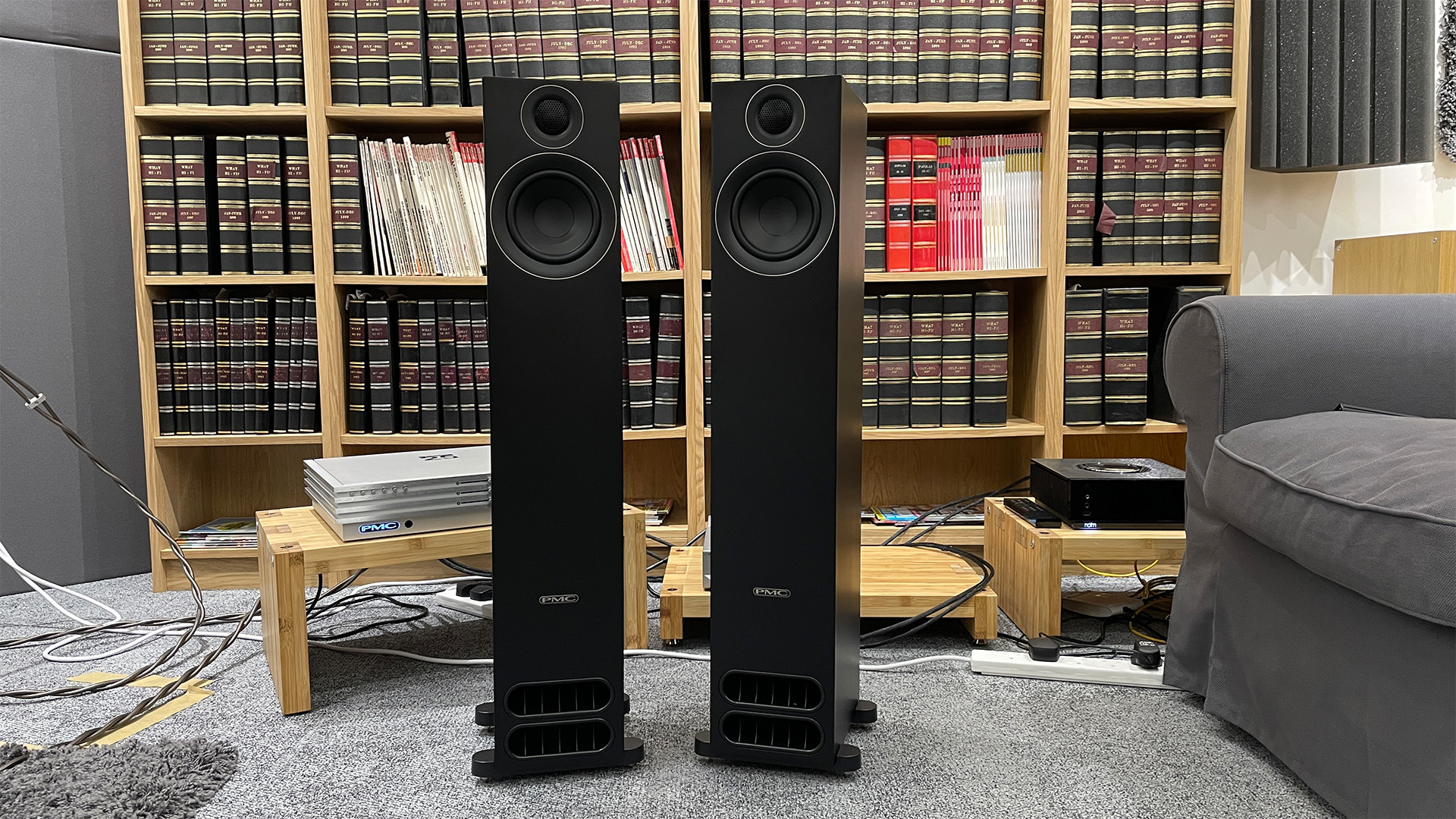
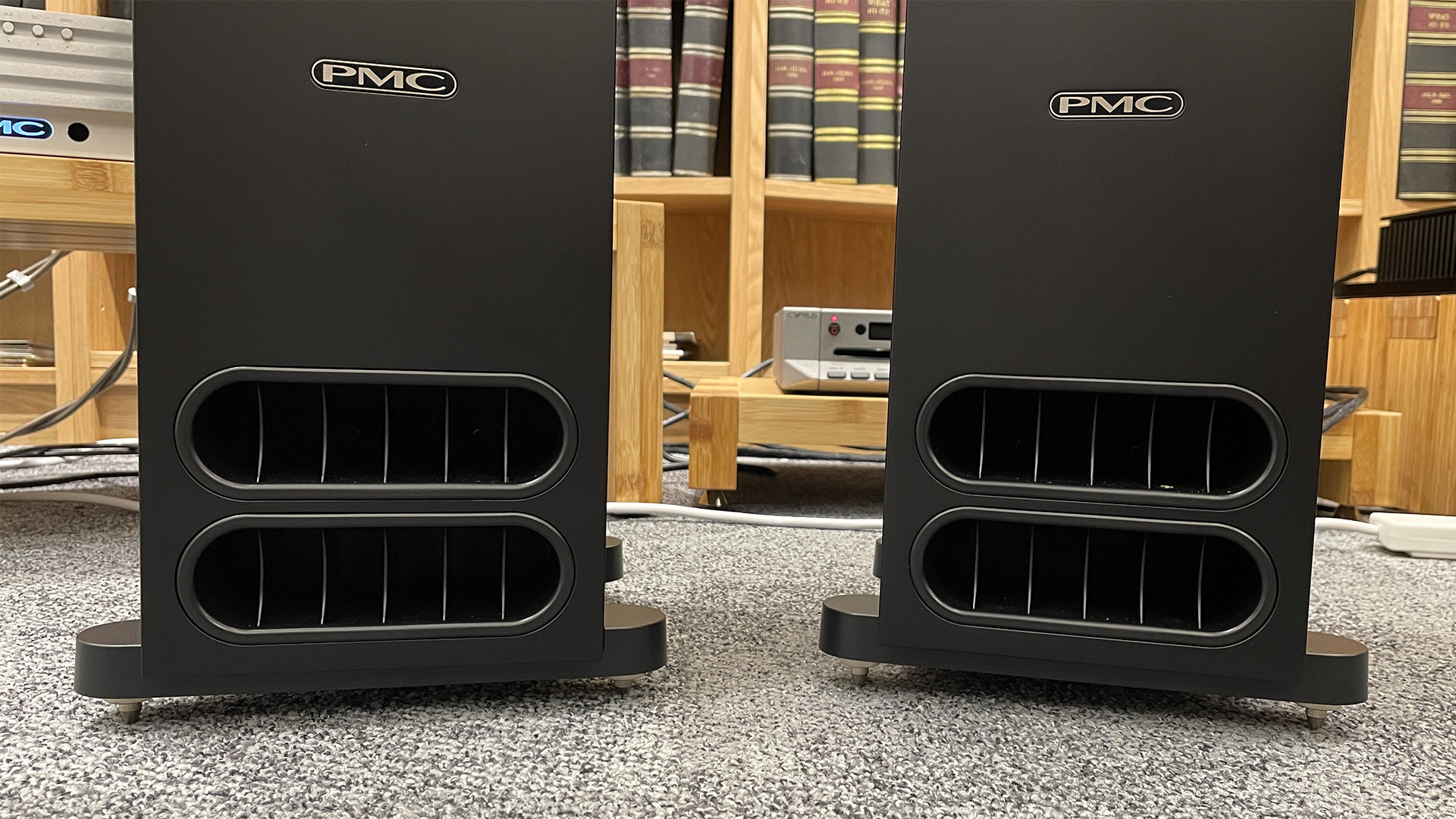
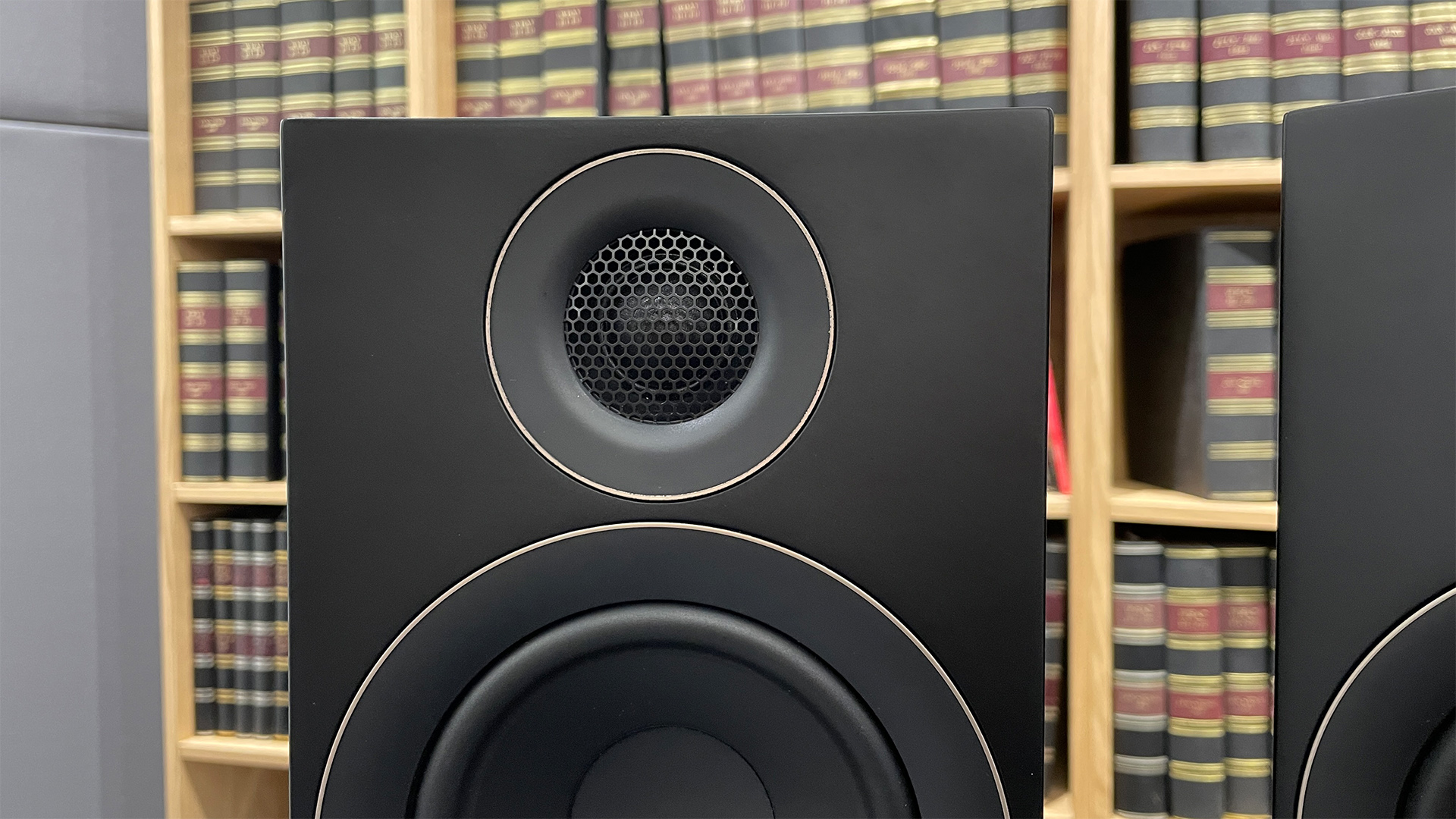
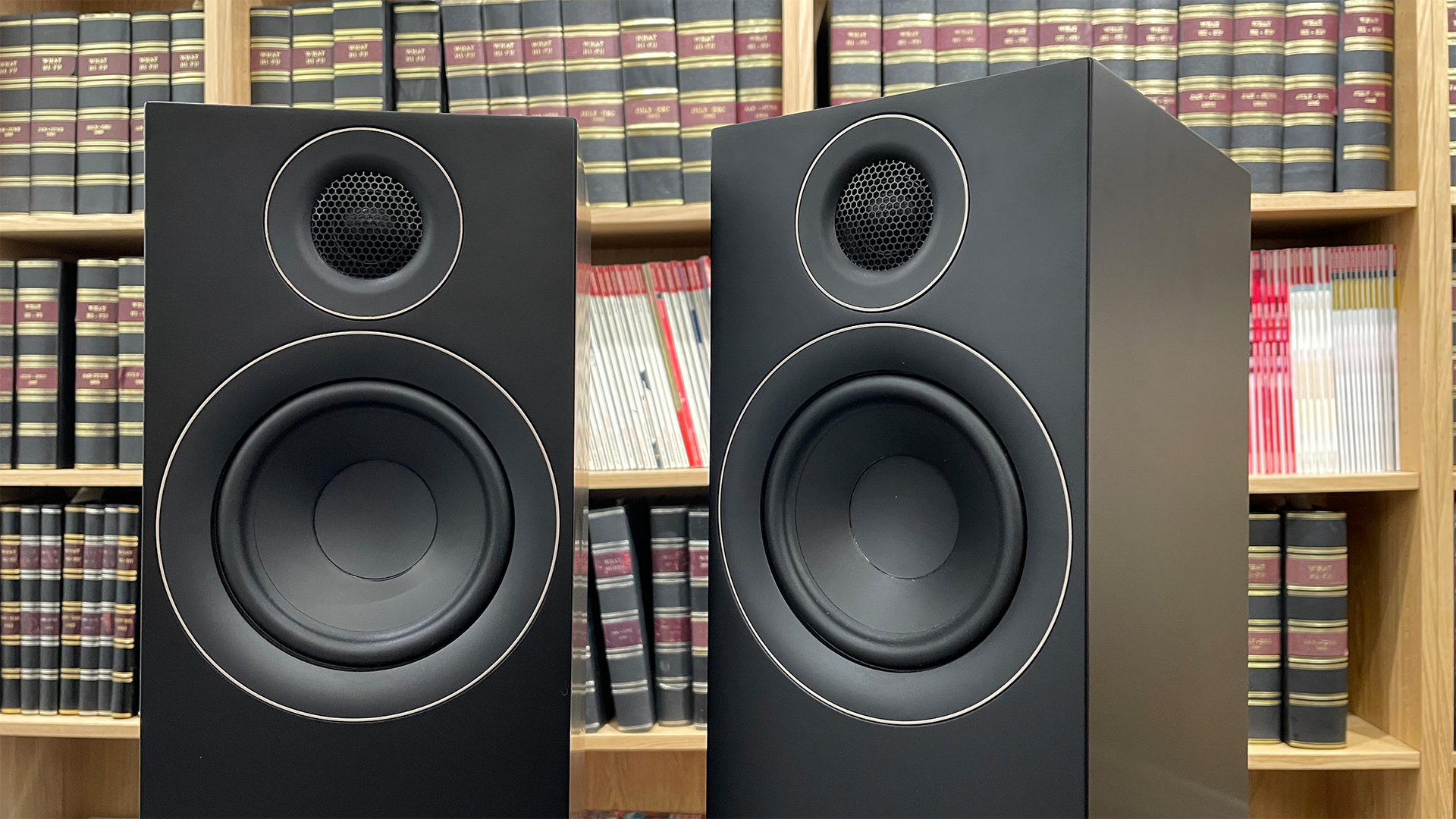
Specifications
Reasons to buy
Reasons to avoid
PMC has something of a reputation for high-end hi-fi, and while the superb Prodigy 5 have wound up as our best premium floorstanders on this list, they're actually miraculously good value.
The priority with the Prodigy 5, much like their five-star Prodigy 1 standmount siblings, has been to eke out as much sound-per-pound punch as possible, letting considerations over design and aesthetic flourishes fall away in the pursuit of the best audio you can get for the price.
And boy has the effort paid off. PMC has hit the sweetest of sweet spots with the Prodigy 5. The speakers balance subtle details and musical flourishes with a heightened sense of presence, poise and confidence. In terms of sonic performance, we didn't hear many better new speakers in the last year, and it was the Prodigy 5's musical chops that really earned them a current What Hi-Fi? Award.
The Prodigy 5 are adept at giving the best of all worlds without a hint of sonic sacrifice. While comparatively priced rivals substitute space for precision or dynamics for subtlety, PMC’s unassuming towers are truly comprehensive performers.
There's so much scale and breadth to them, yet they never seem to sacrifice the intimacy or nuance of a piece. It's a remarkable trick, and one that had us wanting to test more and more tracks to see what the Prodigy 5 could do with them.
All in all, a marvellous success story. Worthy Award-winners, indeed.
Read our full PMC Prodigy 5 review
Best high-end standmount speakers
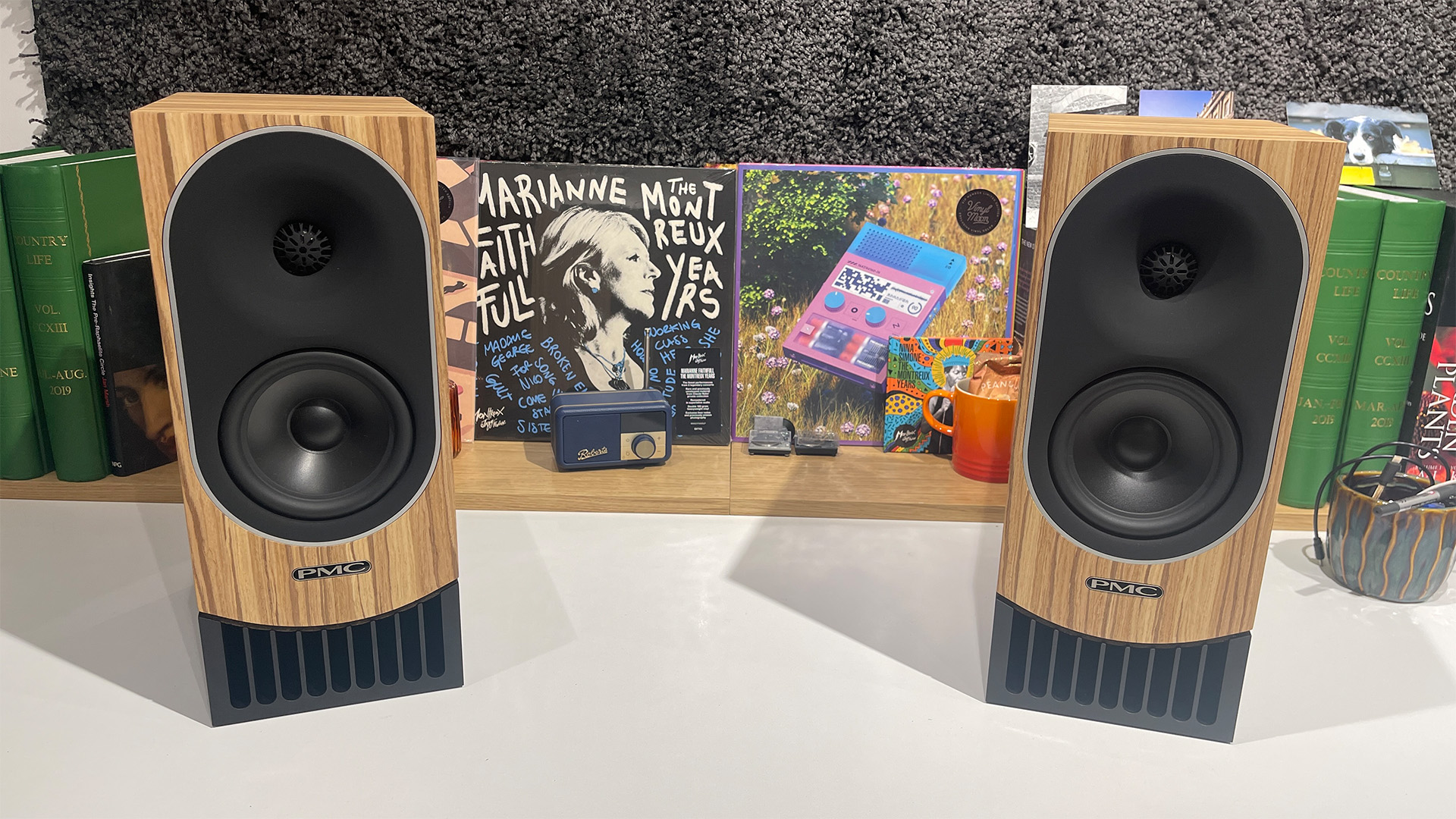
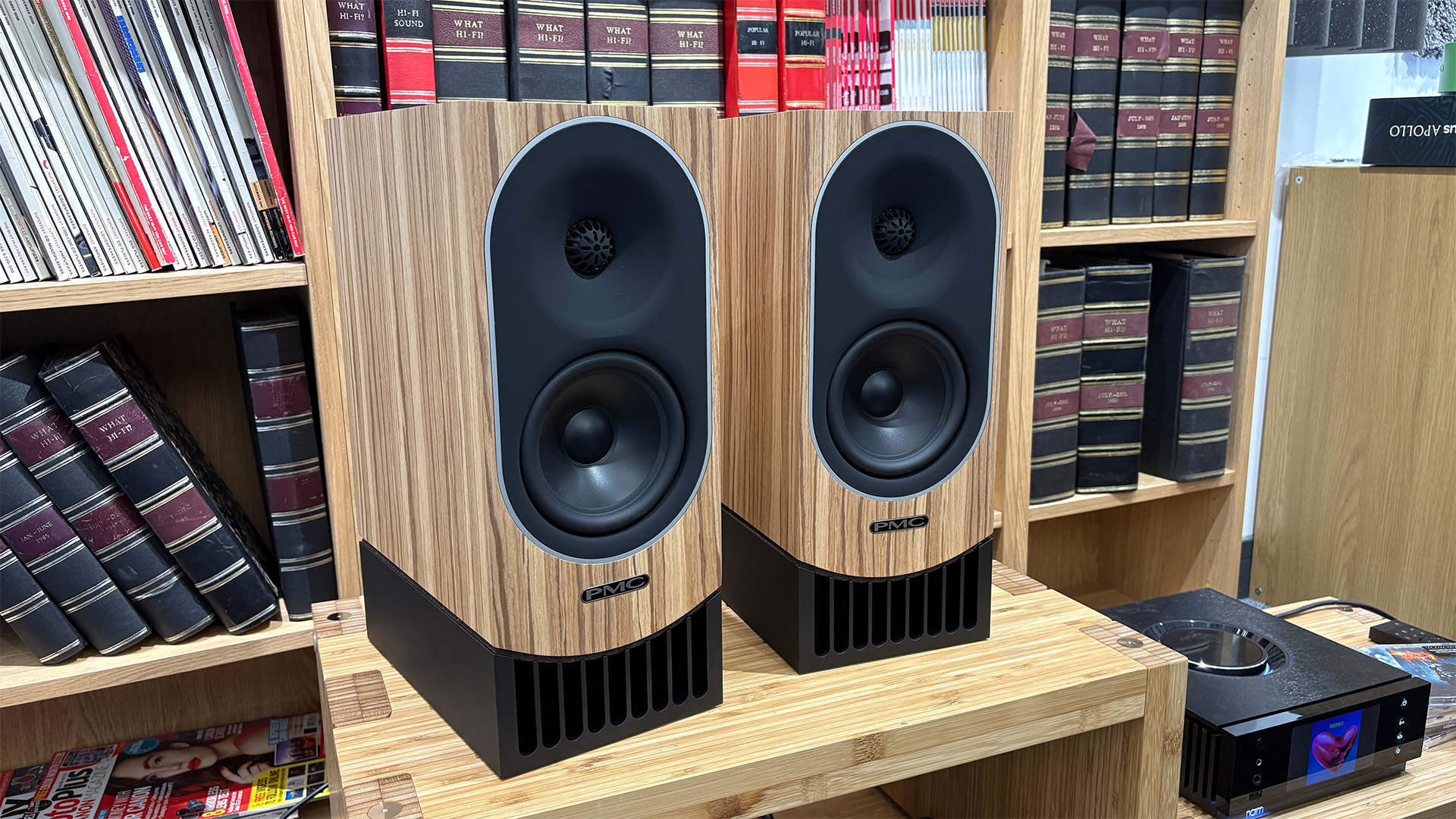
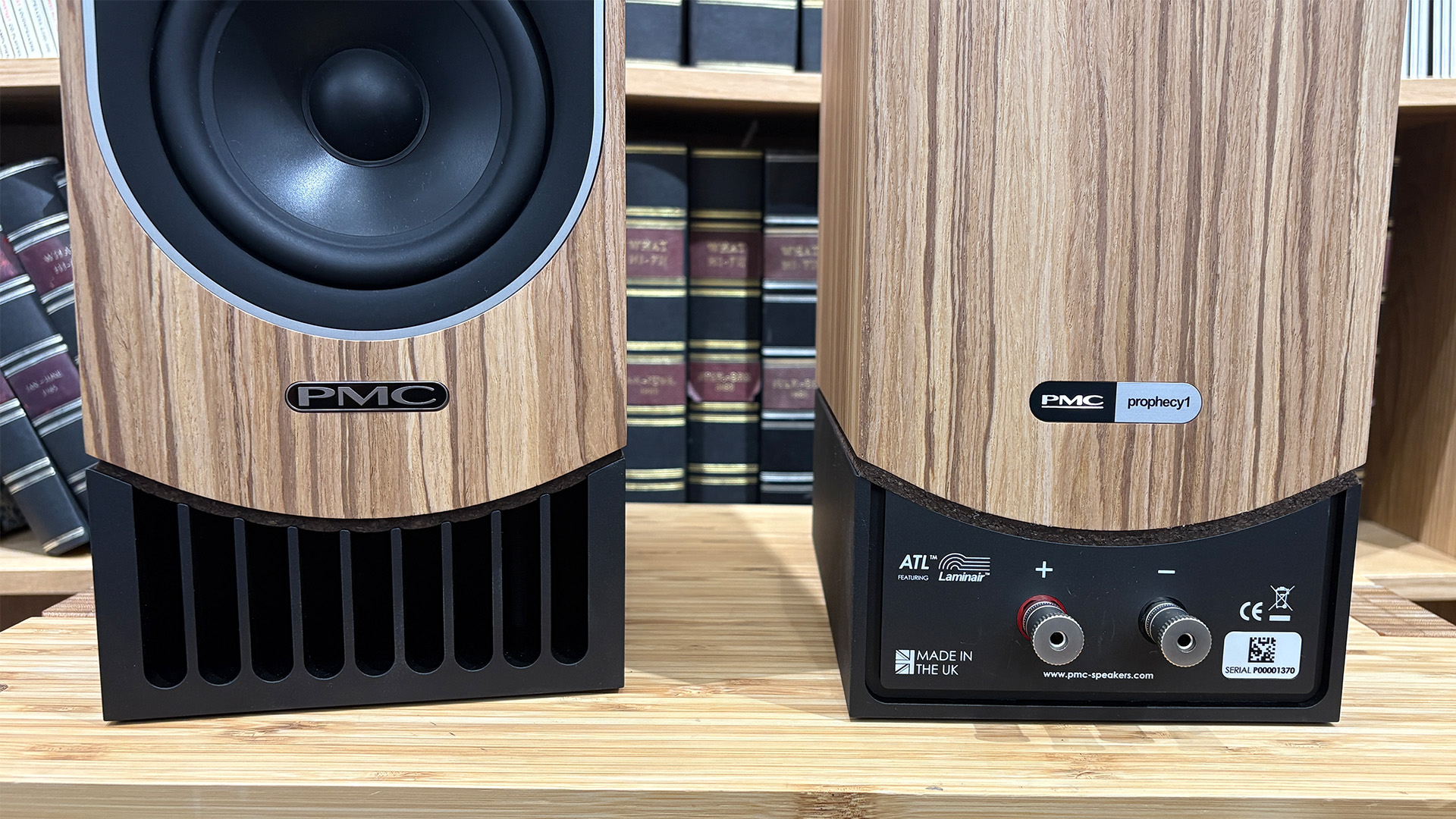
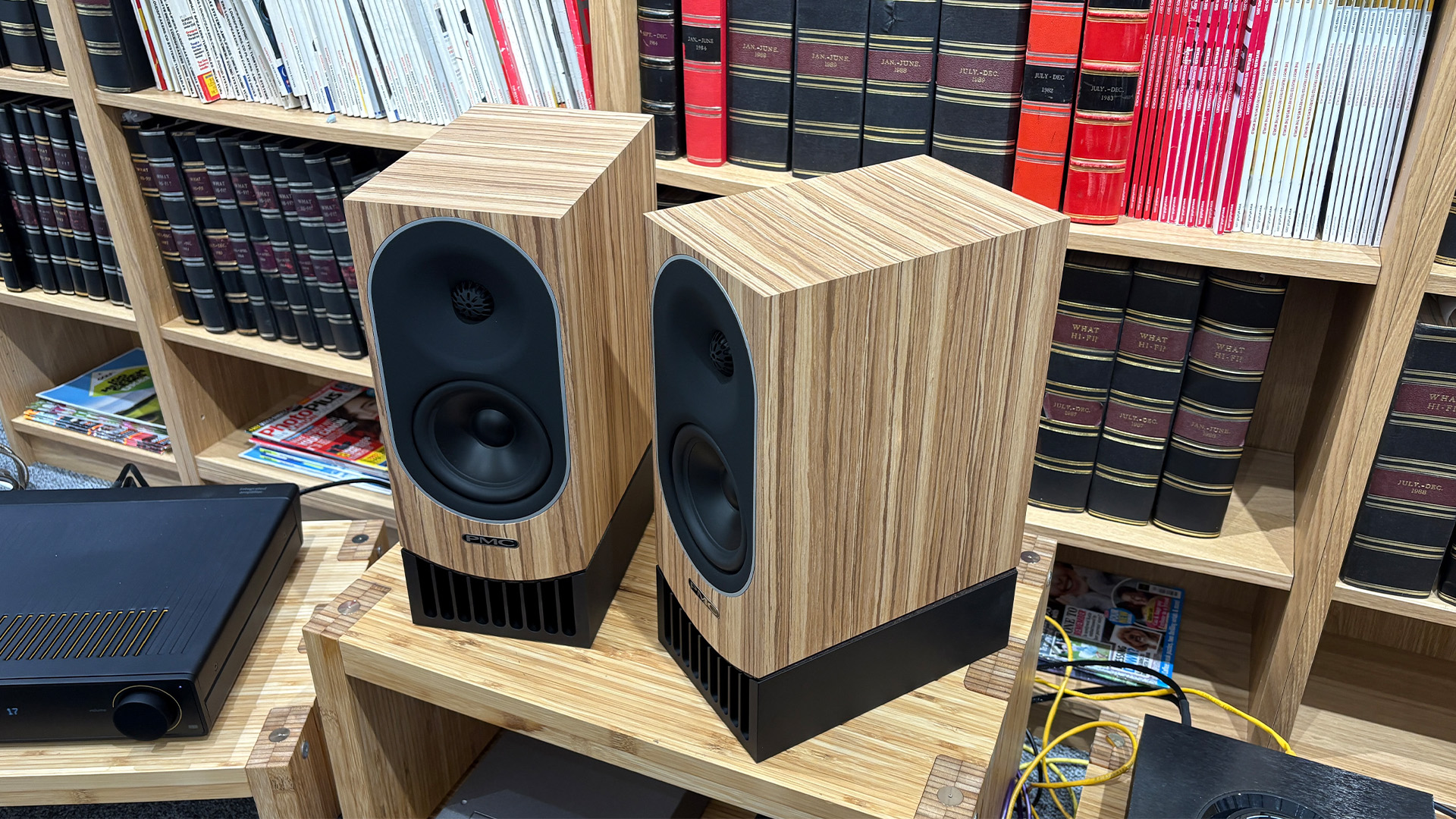
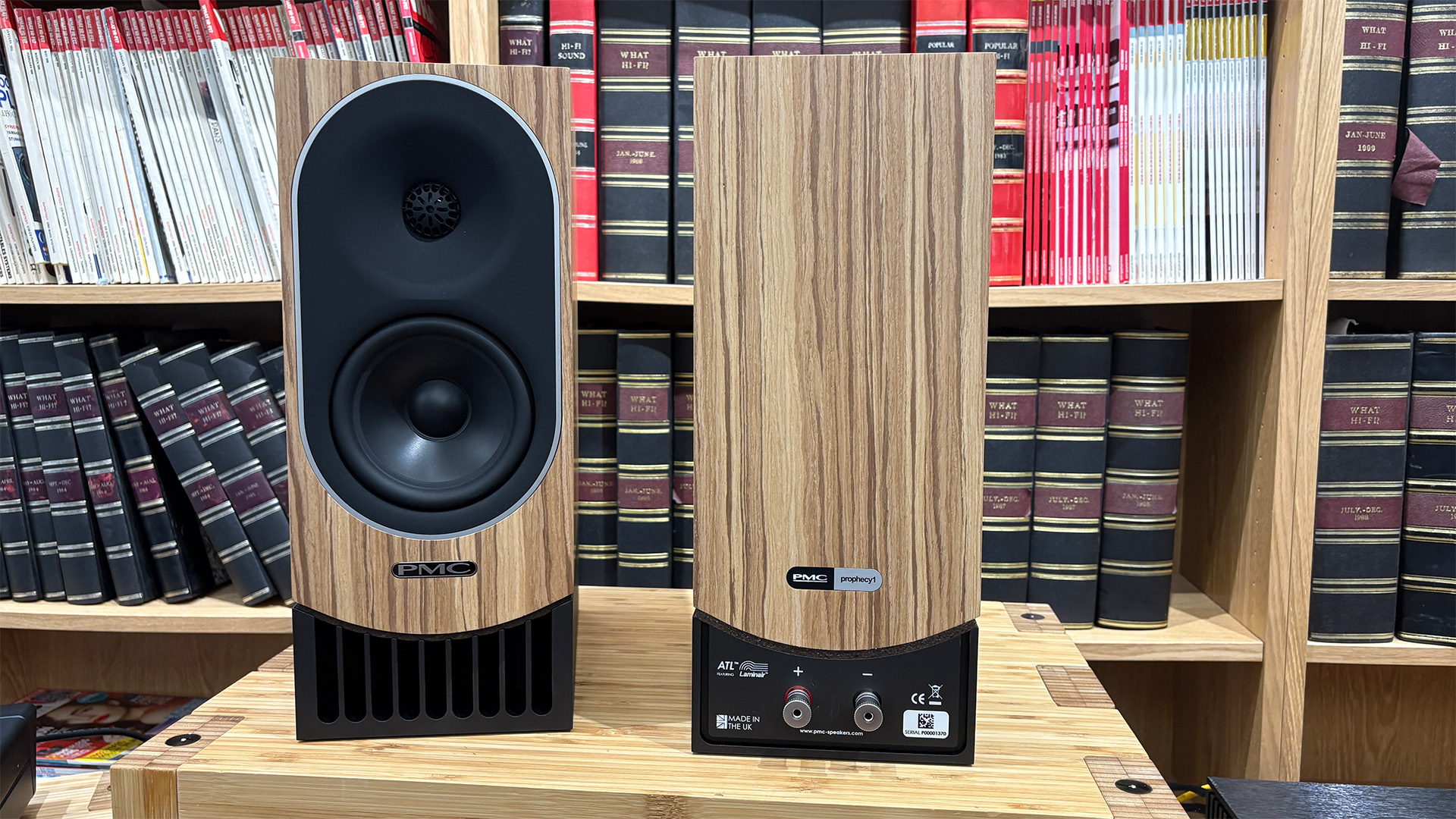
Specifications
Reasons to buy
Reasons to avoid
The Prophecy 1 may be the babies of PMC's Prophecy range, but their performance is a long way from lagging behind the rest of their esteemed siblings. Just as we're keen on the Prophecy 5 floortanders, we find the standmounted Prophecy 1 to be a delight no matter what we throw at them.
The high-end standmounts stick to PMC’s tried and trusted transmission line configuration, wherein the rear-firing output from the 12.5cm mid/bass travels down a folded path inside the cabinet so that most of the sound gets absorbed and only the lowest frequencies emerge from the vent at the speakers' base.
This low-frequency sound is in phase and, if properly tuned, fills in below the point where the mid/bass’s output starts to tail off. The tweeter used here is the very same 27mm soft dome unit we so liked in the Prophecy 7 floorstanders, another five-star candidate on this list.
All of this adds up to a winning combination for PMC. The Prophecy 1 are outstanding speakers, offering class-leading precision and clarity wedded to a precise, articulate handling of dynamics. In terms of getting you close to the original intention of the recording, they're pretty much in a class of one for the price you'll pay.
To quote from our review, the PMC boxes "have the kind of free-flowing dynamics that seem a little out of place in such a compact design, and can deliver the sledgehammer crescendos of a piece like Mars with unusual composure and punch. Even when pushed, these standmounts sound controlled, where others begin to crack."
At this level, the Prophecy 1 tick almost all of the key boxes. Pair them with a talented system and we doubt many rivals will be able to keep up.
Read our full PMC Prophecy 1 review
Best high-end floorstanding speakers
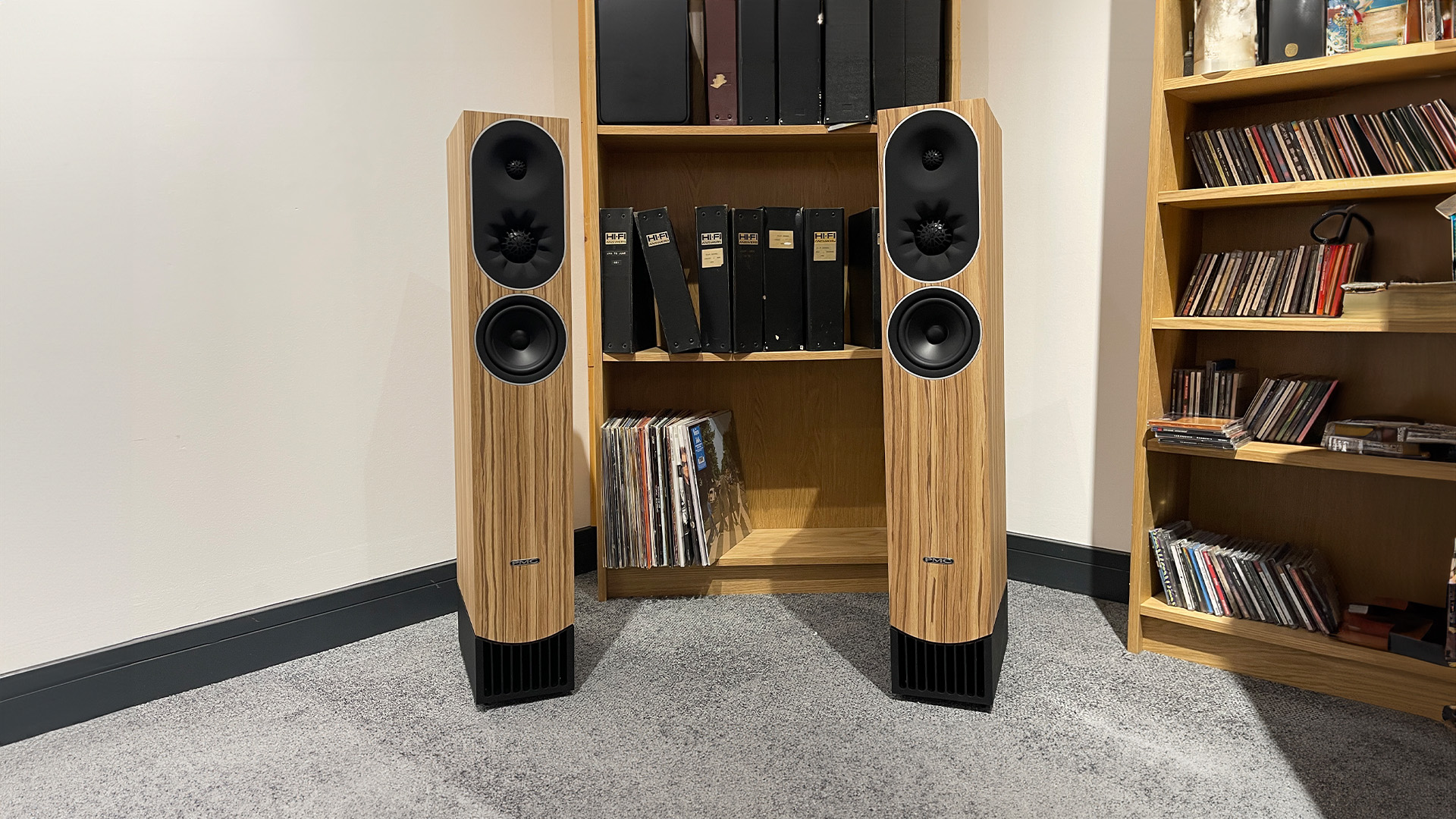
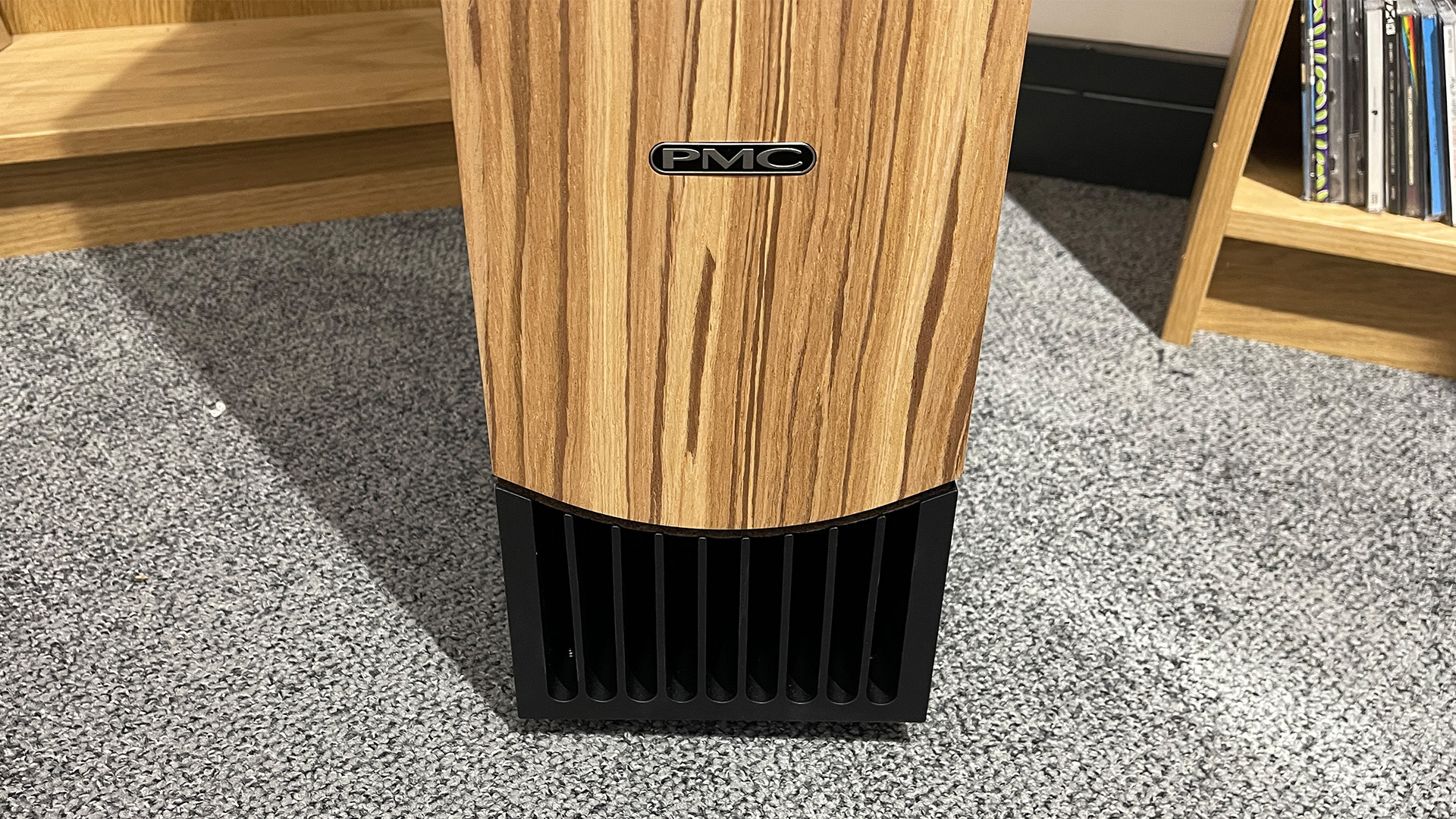
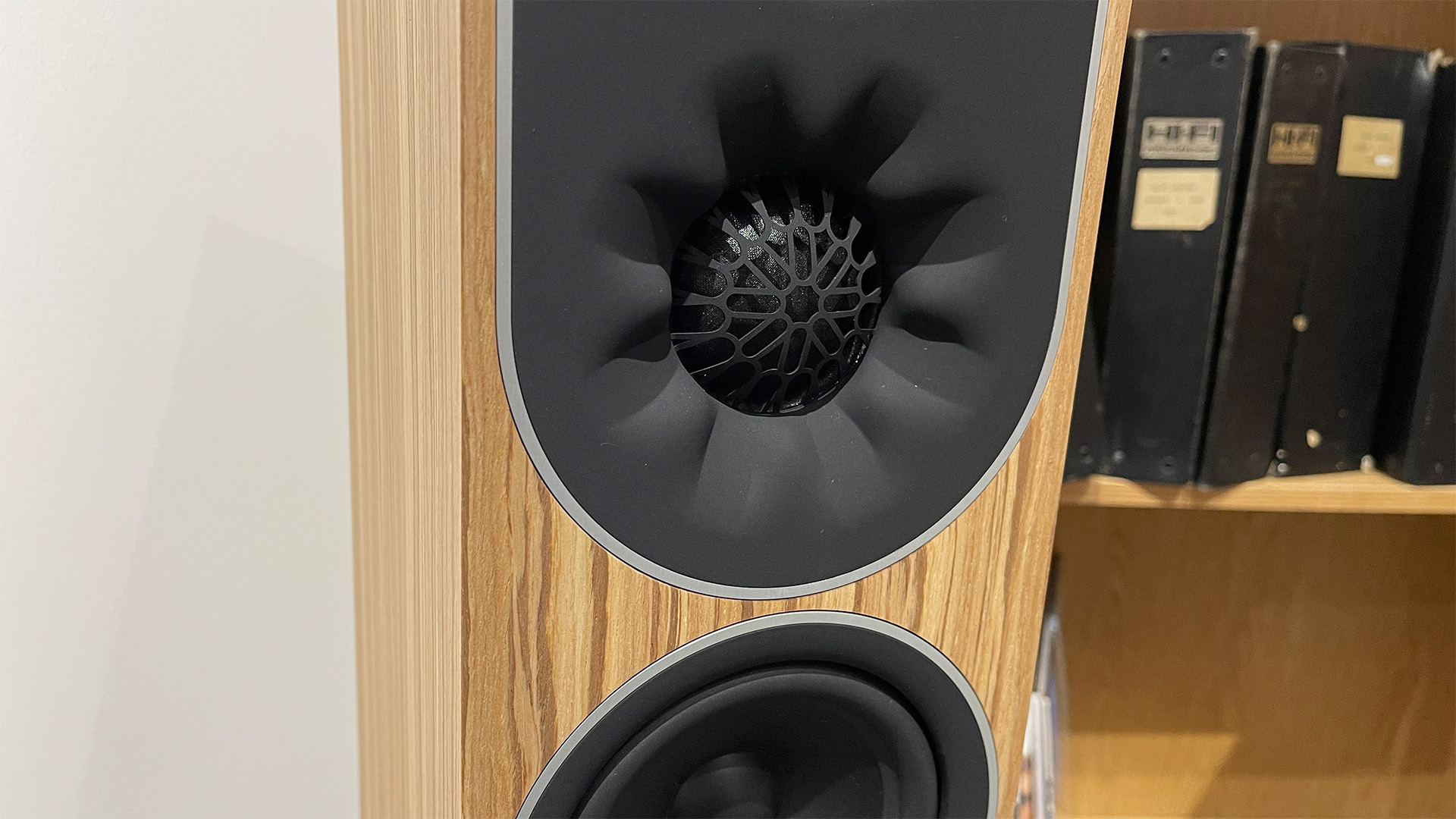
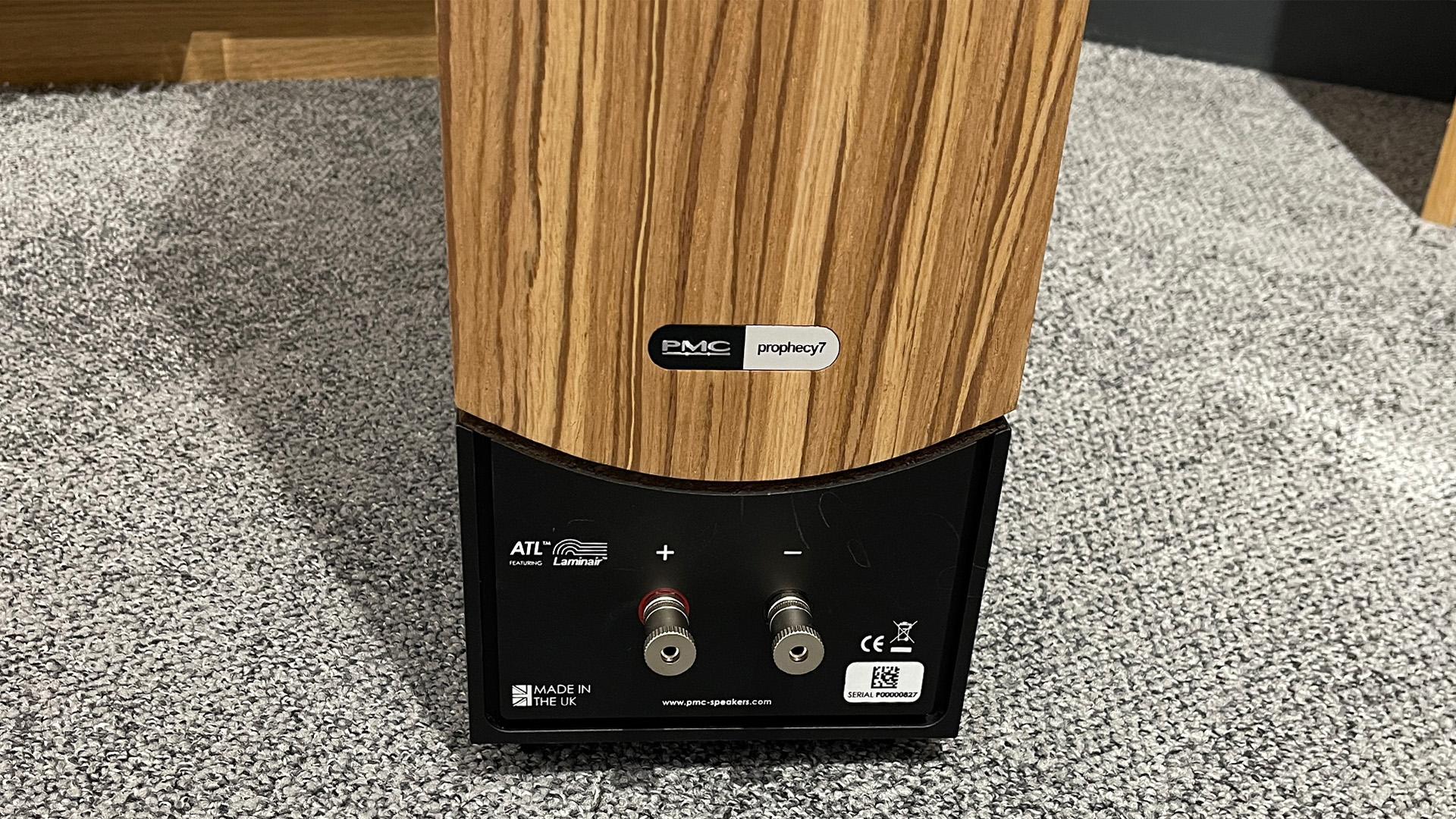
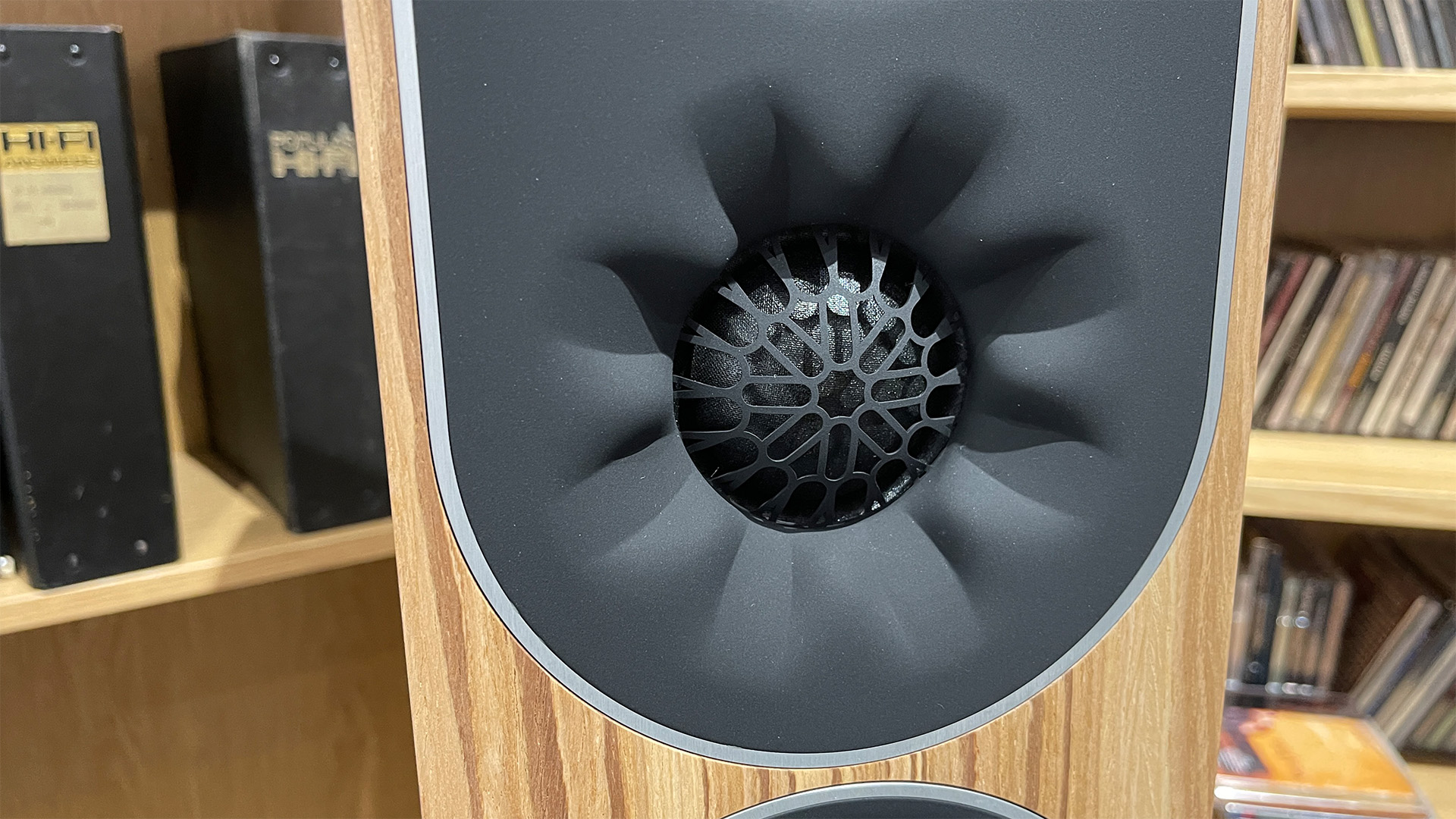
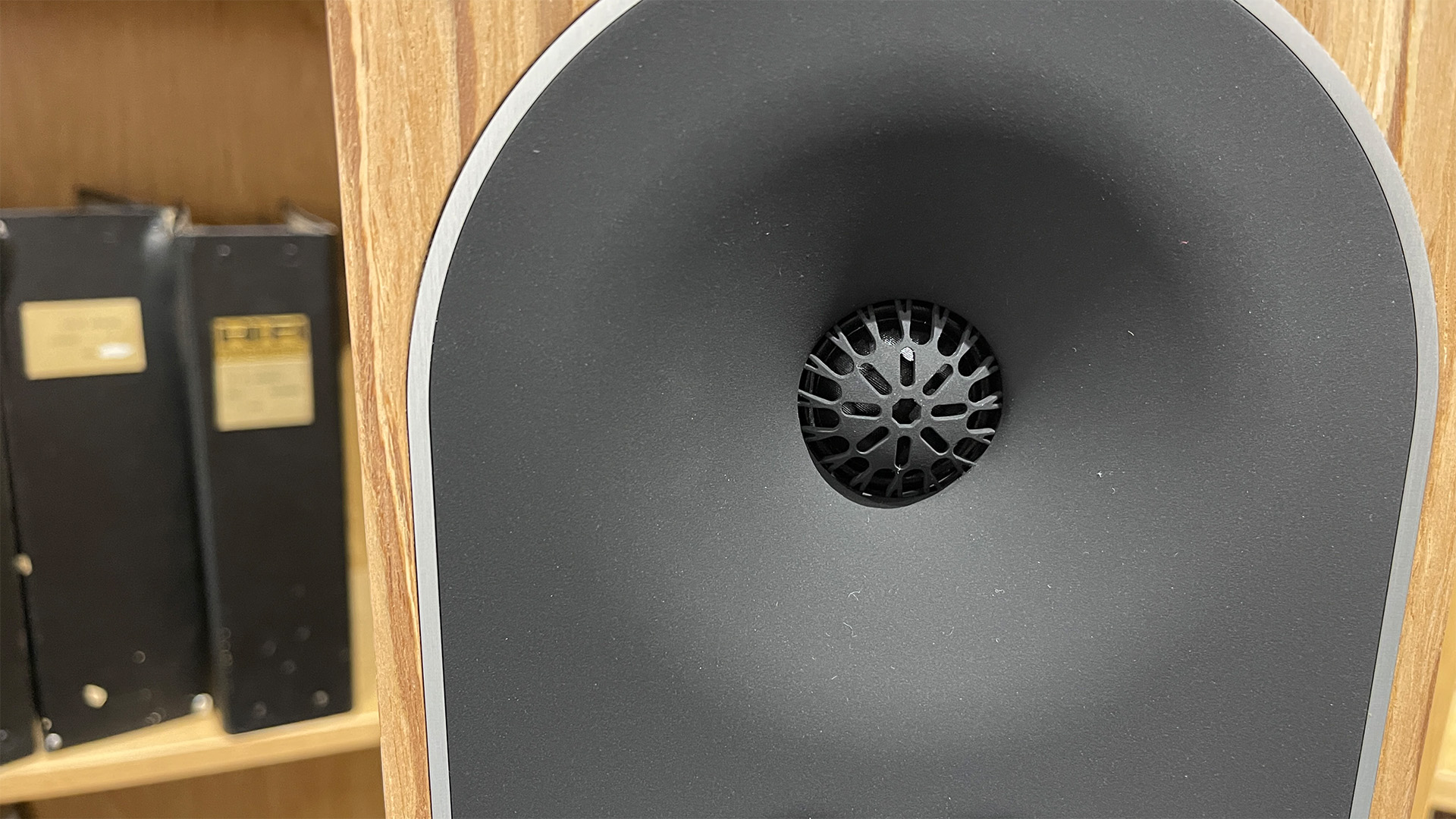
Specifications
Reasons to buy
Reasons to avoid
The Prophecy 7 are the middle floorstander in the PMC's Prophecy range. The Prophecy line replaces the long-running Twenty 5i series that has formed the core of PMC’s home speaker output for years, so expectations were high for a brand making a big transition away from its established series of loudspeakers.
The Prophecy 7 employ a three-way design, with a woofer augmented by one of the brand’s special 'transmission line' systems, the same tech you'll have read about if you checked out our Prophecy 1 standmount entry above.
If you didn't, it's a folded, damped path inside the speaker cabinet that takes the rear-firing sound from the bass driver and absorbs all but the lowest frequencies, which then exit through a vent at the base of the front panel.
As with the Prophecy 1, the results are exceptional. Rarely have we heard such a clear, clean and well-integrated sound at this level, not to mention such an impressively spacious soundstage from what are still relatively compact speakers.
They're so well judged, too. As we stated in our review, "Tonally, these floorstanders are superbly balanced, sounding neutral without falling into the trap of being cool or aloof. That’s a difficult trick, judging by the number of ‘neutral’ products we hear that sound lifeless and boring".
Add in a knack for dynamics and plenty of punch and attack and you've got something rather remarkable on your hands.
Any downsides to be wary of? The Prophecy 7 are best suited to mid-sized rooms rather than massive spaces, but if you have an area that's right for them, they're a special pair of loudspeakers.
If you have the money, they're very easy for us to recommend.
Read our full PMC Prophecy 7 review
Best floorstanding speakers for large rooms
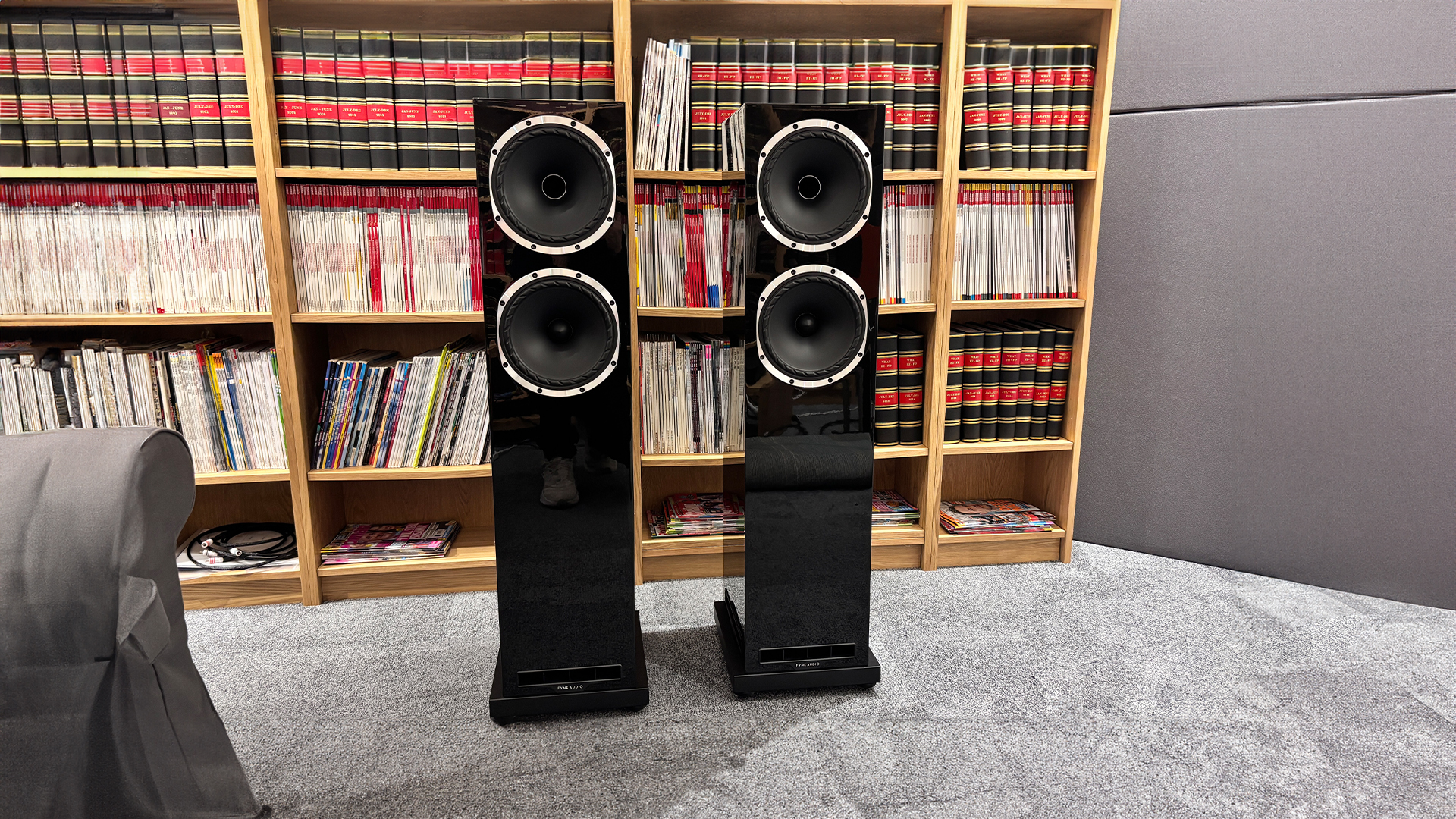
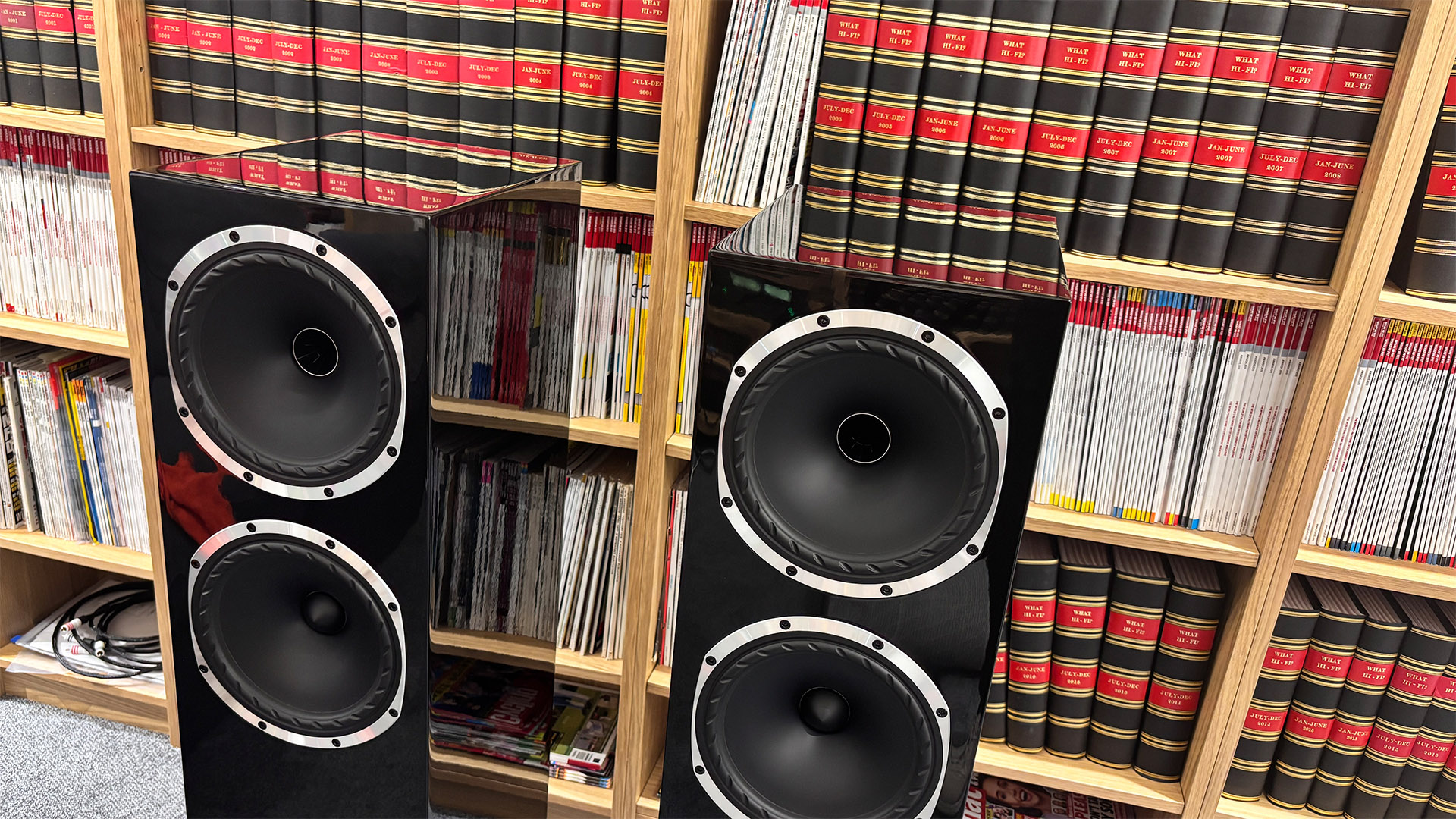
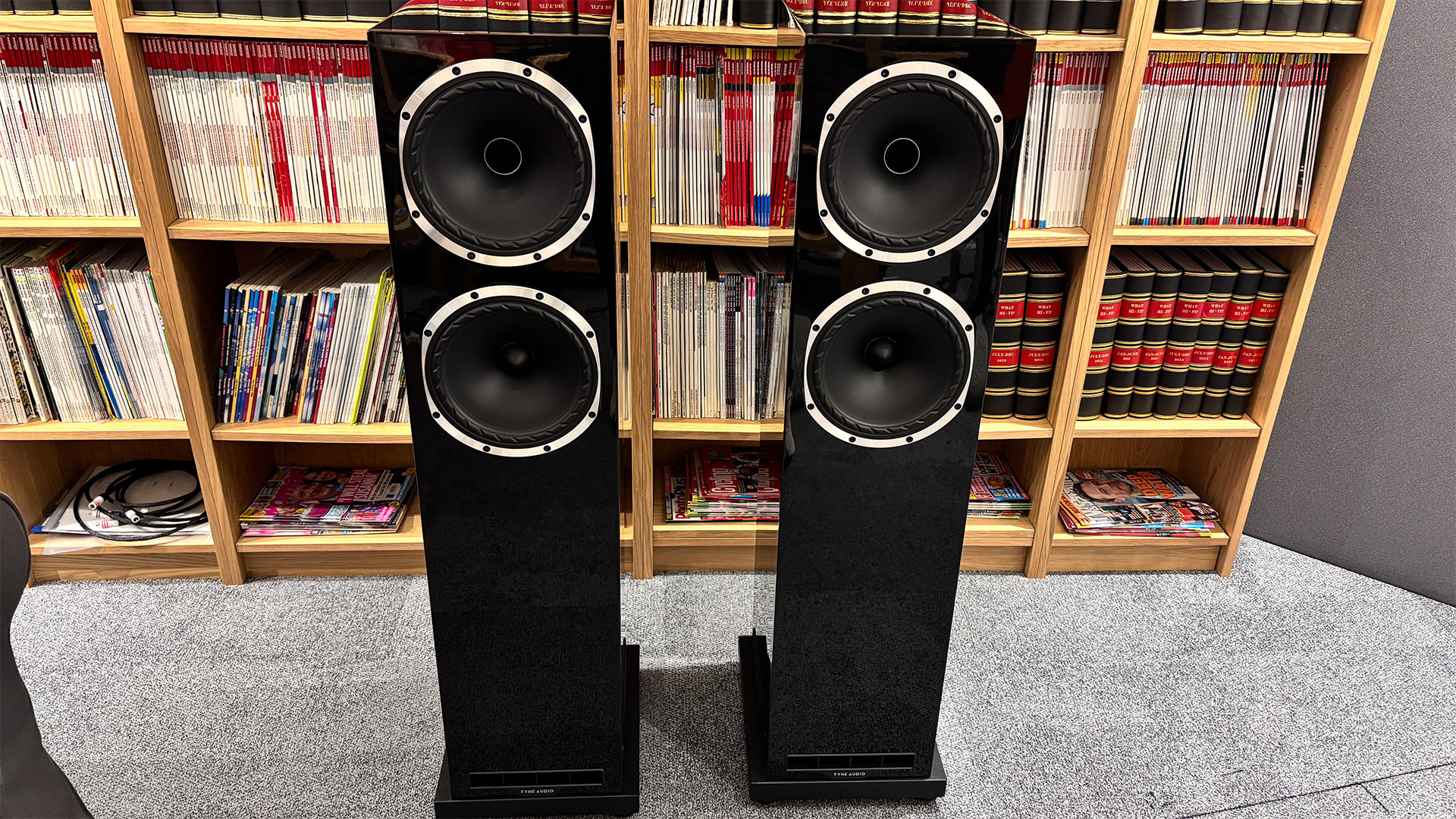
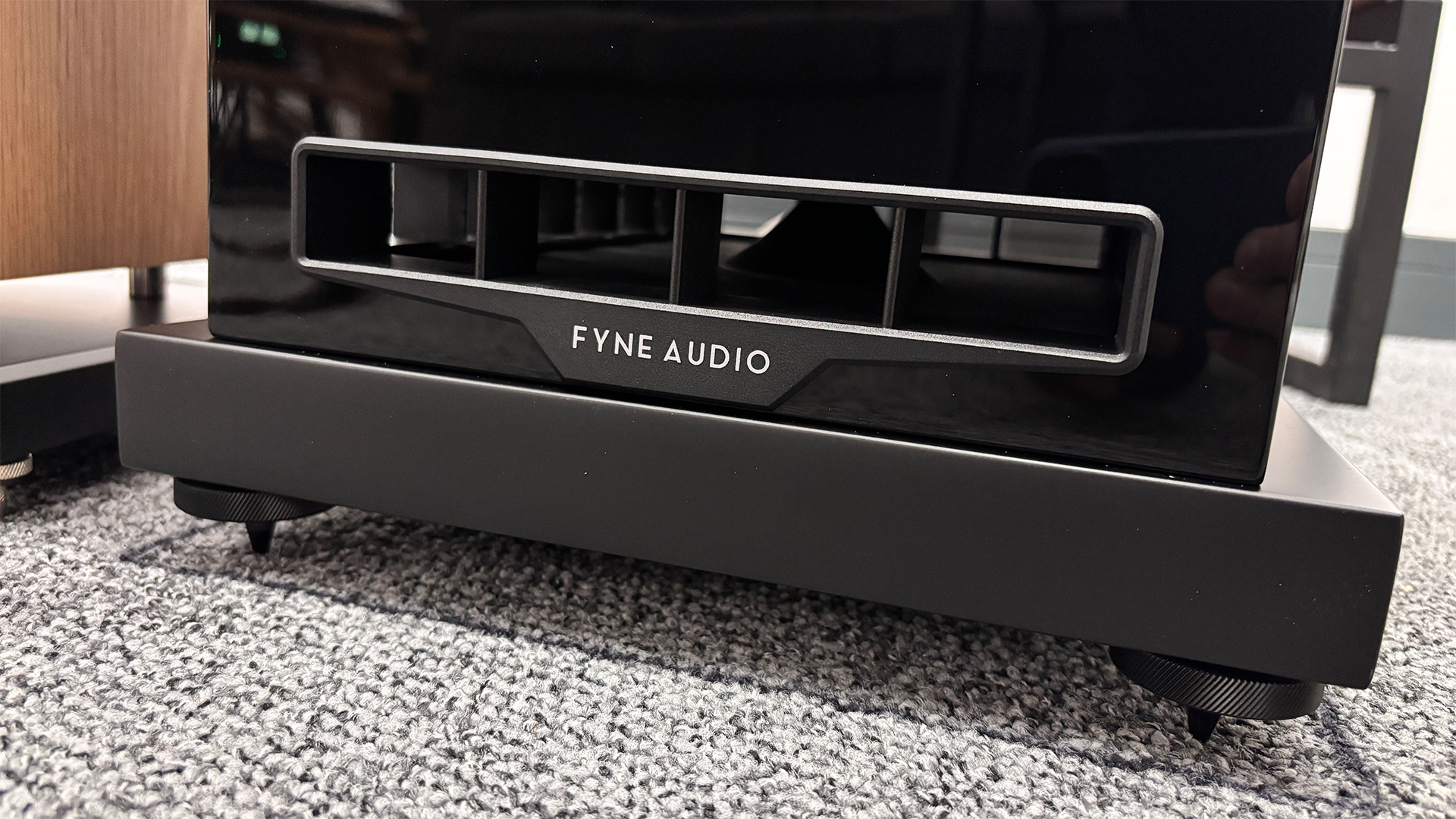
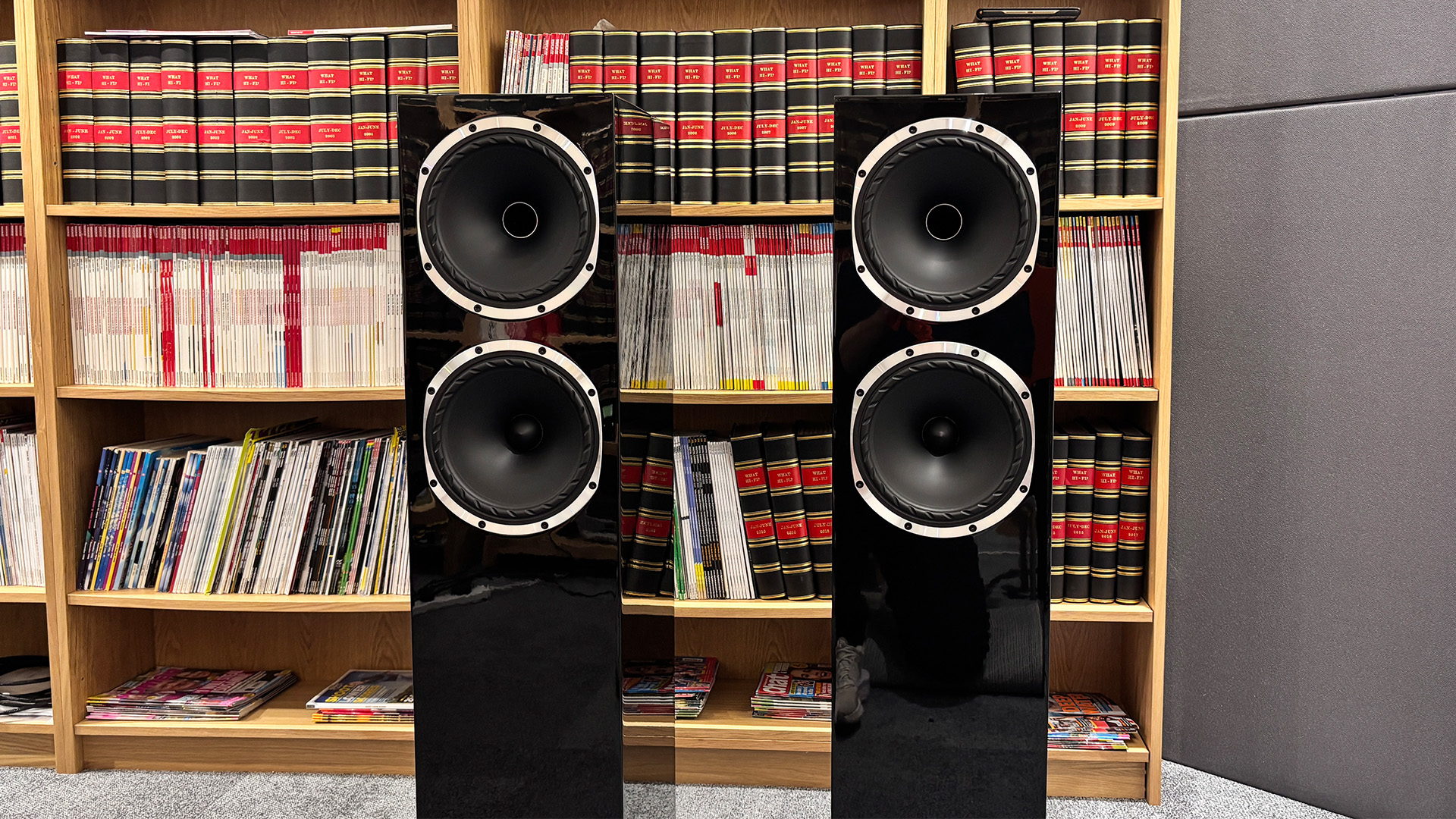
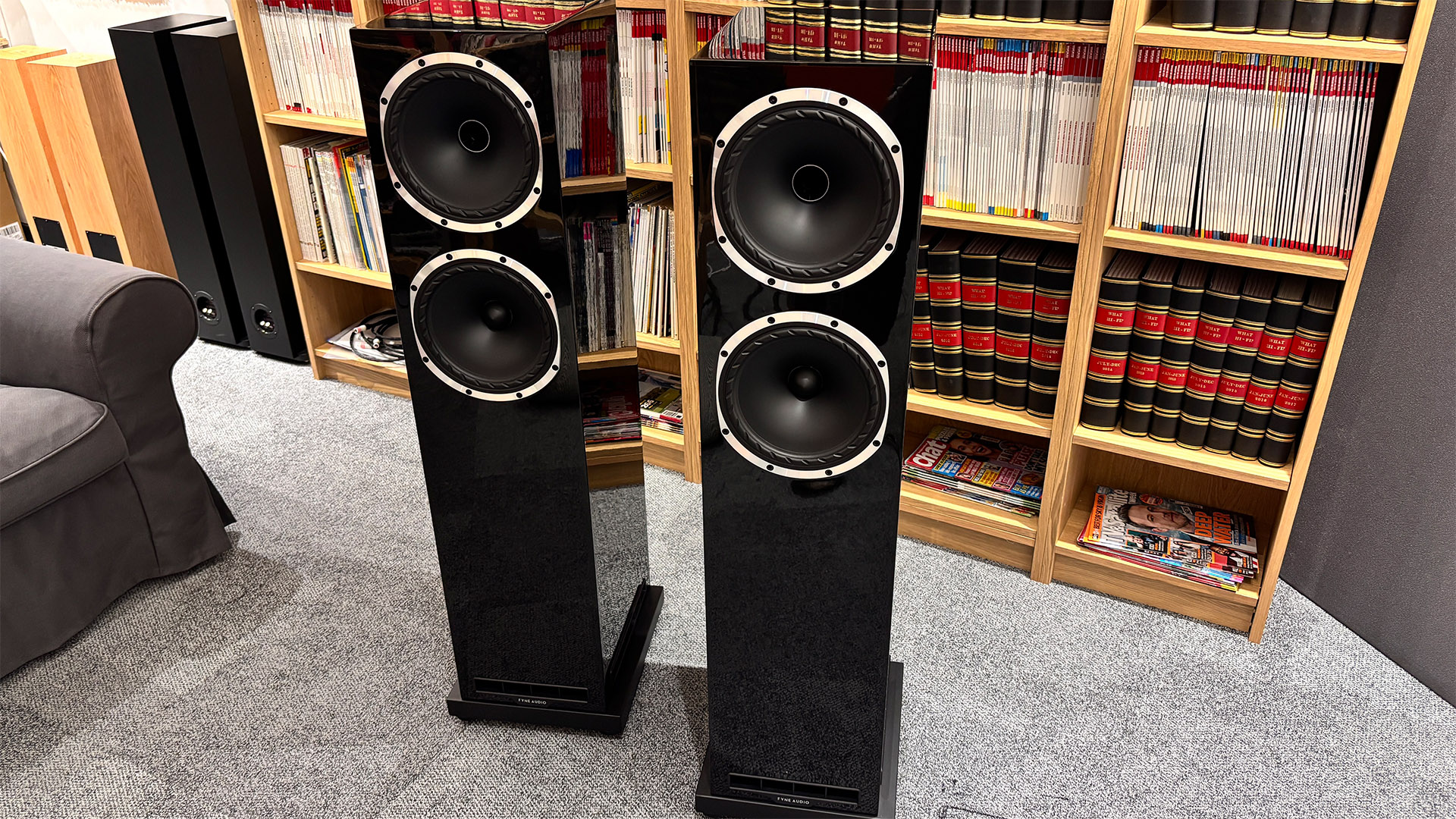
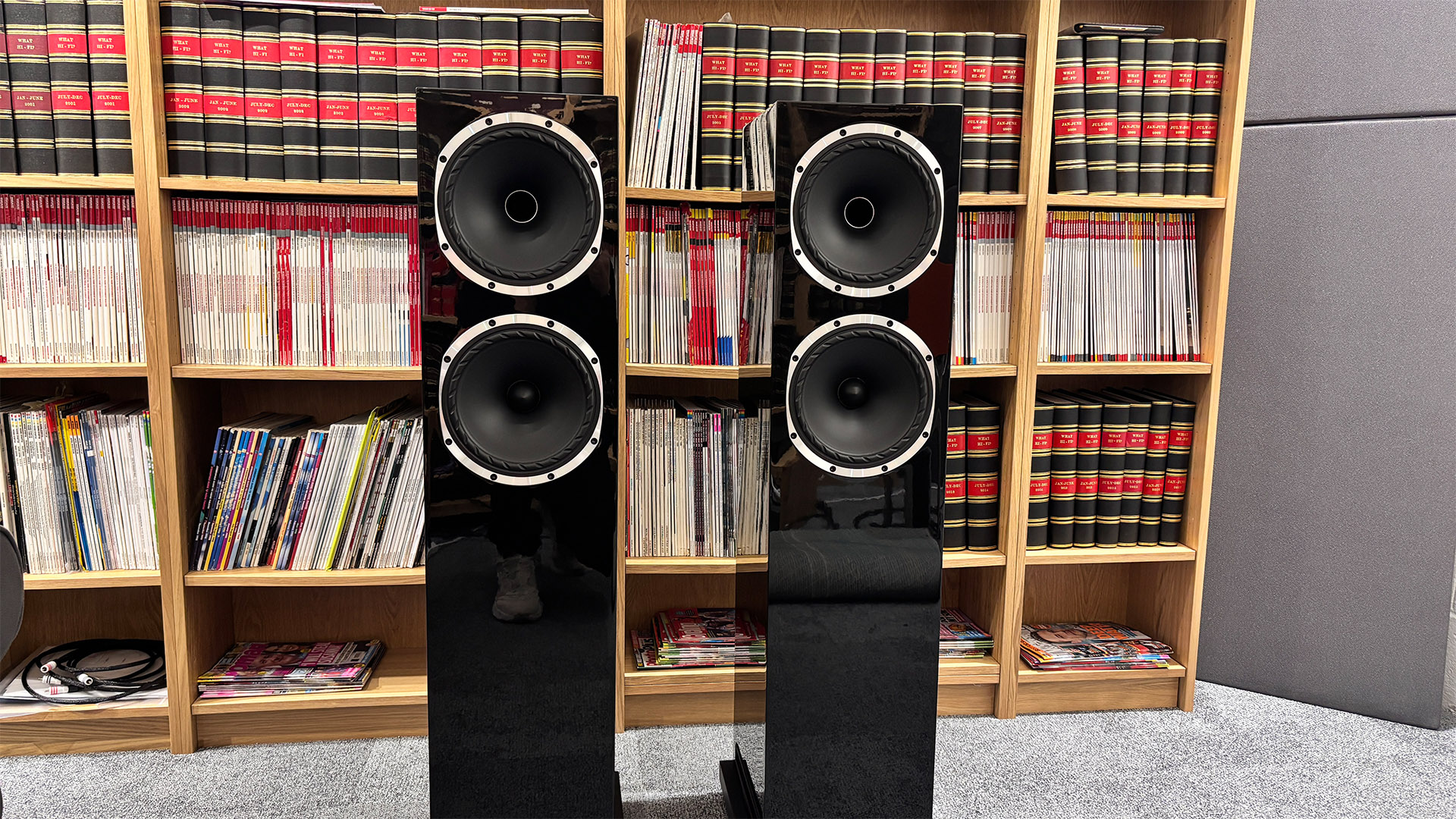
Specifications
Reasons to buy
Reasons to avoid
Fyne's F500S range of loudspeakers debuted in February 2025, promising a "significant audio and aesthetic upgrade" over the previous generation F502.
Placed a step above the brand’s entry-level F500E Series, the F502S floorstanders – aim to make noticeable sonic strides without a huge increase in price over the outgoing speakers.
They've done just that. The F502S are a sizeable set of floorstanders, dwarfing the comparably petite Neat Mystique Classic and the slimmer, cheaper PMC Prodigy 5, so you'll need space to give them room to shine, but if you can accommodate them, these Fyne towers are something really special.
The F502S pack a 25mm magnesium dome tweeter alongside a 20cm mid/bass driver and a 20cm bass driver. The mid/bass unit harnesses the brand’s signature Isoflare point source technology, which has trickled down from its higher-end models to its ever-expanding roster of speakers.
The results are outstanding. The Isoflare tech works beautifully once again, bringing impressively consistent dispersion alongside improved time alignment and excellent musical integration. Wherever you stand or sit in relation to the F502S, their central image never collapses or sounds off-kilter, making them remarkably unfussy when it comes to picking a listening position.
That's not even the best part. The F520S strike a lovely balance, blending potent power and authority with those trickier musical elements that reveal a considered, nuance pair of performers.
As we said in our review, the F502S "are like your favourite school teacher or most inspiring university lecturer: authoritative and competent, yes, but personable, engaging and genuinely approachable".
If you want to test out their abilities, Hans Zimmer's The Battle from the Gladiator soundtrack is a perfect showcase of what they can do. With their wonderful dynamic talents and eye for detail, they bring the complex arrangement to life with ease.
The premium F502S towers continue a rather remarkable hot streak for Fyne Audio. If you have the money and space, they demand your consideration.
Read our full Fyne Audio F520S review
Also consider
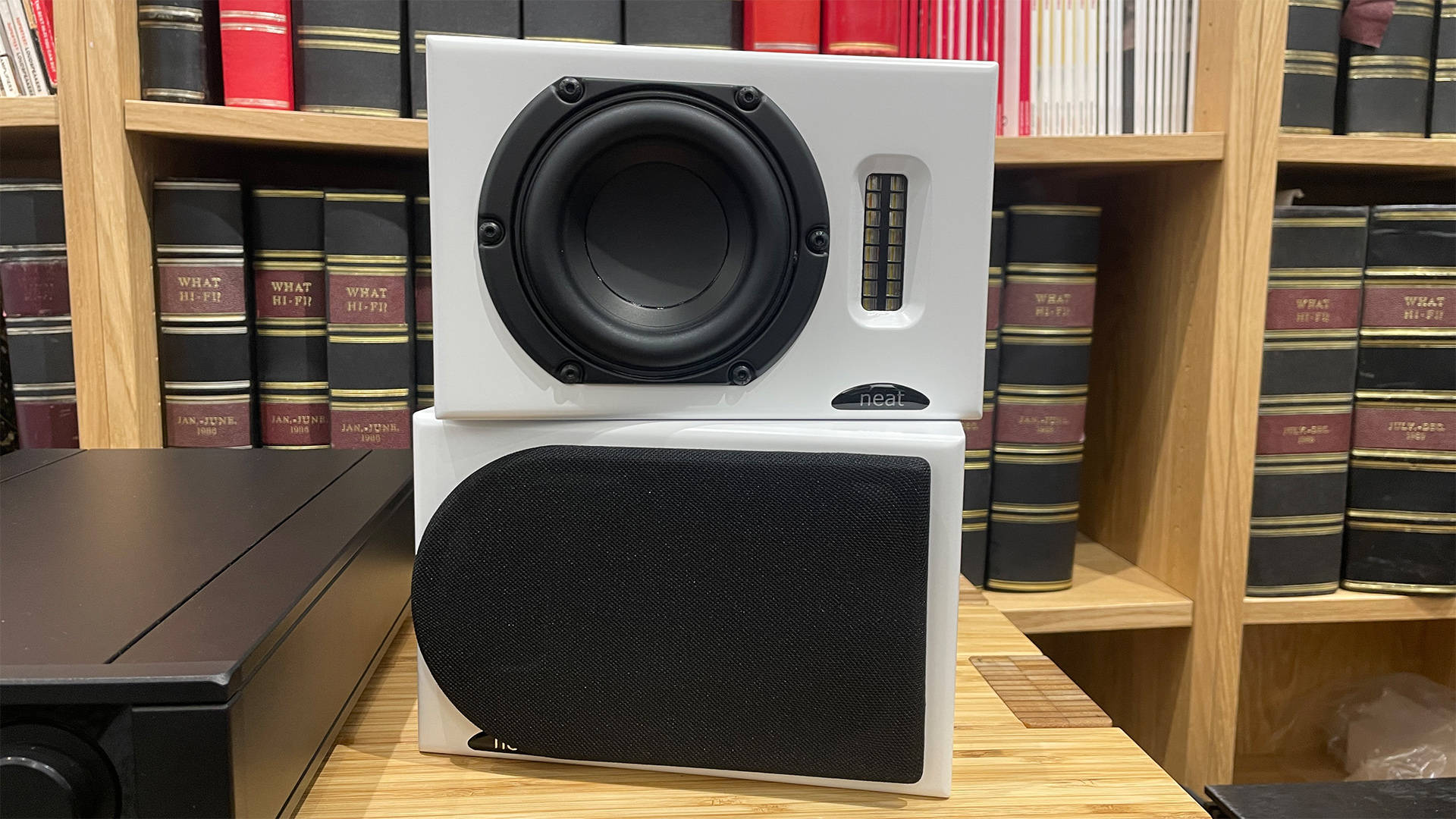
There are plenty of excellent speakers that we couldn't fit into the main list above, so here are some more alternative options, both new and old, that we would recommend to anyone looking for a new pair of speakers.
Monitor Audio Bronze 50 7G: The Bronze 50 7G standmounts are beautifully made and tuned to have a good time. If you like bold, flashy speakers that demand your attention, they're as good as it gets at their £500 / $849 / AU$1099 price.
Wharfedale Diamond 12.1: These budget Wharfedale boxes were firm favourites on this list for a good while. They may have been an affordable option, yet their sound was mature, balanced and immensely articulate. We still recommend them highly after all this time.
Neat Petite Classic: If you're limited on space but want high-quality sound from a very small footprint, these Petite Classic speakers are terrific fun. Their dimensions won't allow for huge scale or bass extension like the KEF R3 Meta, but we're won over by their terrific rhythmic precision and agility, solid sound and fun presentation.
Q Acoustics 5050: These flagship and Award-winning 5050 floorstanders are worth serious consideration, especially if you have ample space. They have a more balanced and mature presentation over the five-star Q Acoustics 5040, with the extra authority and detail more than justifying the step-up in price.
Fyne Audio F502SP: If you're after large-scale thrills, these high-end Fyne floorstanders will wow you with their breathtaking scale and solidity. Immersive dynamics and rock-solid stereo imaging are their strengths, and they trade in a touch of sonic sophistication for outright energy and thundering bass power.
Epos ES14N: They may not look that impressive, but these large standmounters are mighty impressive when it comes to analysis, organisation and control. Low-level detail and dynamics are revealing, while they have an open, articulate way with voices. We'd perhaps like a bit more rhythmic drive, but we can't fault the stunning clarity and cohesion on offer.
How to choose the best speakers for you
First things first, decide on a budget. Your components should be evenly matched, both tonally and in terms of price, so consider this before breaking the bank on a new pair of speakers that the rest of your kit can't do justice to.
You also need to make sure your speakers fit your room. Most speakers require a degree of space to sound their best, so be sure not to buy speakers that are too big for your listening area. This is also a good time to consider whether you want bookshelf or floorstanding speakers. Bigger speakers mean higher volumes but, again, you need the space.
It's also worth checking that your system's amplifier can comfortably drive the speakers, and that the sonic character between each component in your system match up.
A bright-sounding pair of speakers can sound too hard or harsh when paired with equally bright/top-end heavy partnering equipment, so it's worth reading multiple reviews or – if you're able to – demo the speakers before taking the plunge. If you'll be buying high-end models, it's worth having a conversation with the dealer and taking time to match your system.
There's also the choice between passive or active speakers. All the speakers on this list are passive: i.e. they have no amplification built-in, and so require a separate amplifier to work.
Active speakers or powered speakers with amplification inside (and sometimes DAC and streaming smarts) are increasingly popular and can connect straight to your source, no amp required, though they do require a connection to mains power. Check out our pick of the best active speakers or best desktop speakers if you're curious about this alternative.
For a more detailed explanation of everything you should consider, check out our complete guide to choosing the right speakers.
How we test speakers
The What Hi-Fi? team has more than 100 years of combined experience in reviewing, testing and writing about consumer electronics, from hi-fi to headphones to TVs.
We have state-of-the-art, acoustically treated testing facilities in London and Reading, where our team of experienced reviewers conduct all our in-house testing, including all stereo speakers. This gives us complete control over the entire review process, ensuring consistency across all our listening.
When testing speakers, we ensure we position them in the correct place in the room, partner them with price-appropriate source kit and amplifiers, and play a variety of music genres when reviewing.
Check out our ultimate test tracks list for the various types of songs we use to test speakers, including specific elements such as treble, bass, dynamics and vocals.
We make sure we run in each pair of speakers and spend plenty of time with them, and we try various partnering amplifiers and sources, and different positions (including placing on stands where needed) to ensure we give the best advice to buyers.
What Hi-Fi? is all about comparative testing; all products we review are tested in comparison with rival products in the same category and at the same price point, and each pair of new speakers is always listened to by two to three members of the team.
All final review verdicts are agreed upon by the reviewing team as a whole, rather than a single reviewer, to ensure we avoid individual subjectivity and are consistent across all our reviews and verdicts.
We pride ourselves in the fact that our reviews are 100% independent, with no input from manufacturers, PR or commercial teams. This means that if you take the plunge and buy one of the products recommended in this buying guide, or on any of our other Best Buy pages, you can rest assured you're getting a What Hi-Fi?-approved product.
You can read more about how we test and review products on What Hi-Fi? here.
F.A.Q
Are bookshelf speakers better than floorstanders?
The short answer is: it depends. For the long answer, you might want to peruse our standmounts vs floorstanders article, where we go into more detail about the differences between the two types of speakers, and the advantages (and disadvantages) of each.
A lot will depend on the size of your room. Floorstanding speakers typically need more space to breathe in, while bookshelf (or standmount) speakers can be placed in smaller rooms or surfaces.
Of course, if you'll be using speaker stands with your bookshelf speakers, you'll need ample space for these too. Loudness levels are another consideration: if you have a large living room, will compact bookshelf speakers be able to fill the space satisfyingly? Floorstanders' large cabinet volume will tend to deliver a bigger scale of sound – it really depends on what your sonic tastes and home system's needs are.
If you'll be using your speakers for movies as well as music, or simply favour lots of deep bass, then a larger cabinet is the way to go. If the only place to put your speakers is on your desk or you'll be sitting close to your speakers, you'll want small bookshelf units.
Just bear in mind that the quantity of bass doesn't necessarily equate to better quality of bass, and how a speaker is engineered to deliver the best balance and quality of sound differs from model to model, and should be taken into consideration before buying.
Recent updates
- December 2025: Refined our Also Consider list.
- November 2025: The Acoustic Energy AE300 MK2 are our new pick as the best speakers overall, while the Dali Kupid are our favourite budget option. The PMC Prophecy 7 are our new high-end floorstander recommendation, while the Fyne Audio F502S are the best floorstanders for large rooms.
- August 2025: Replaced the Spendor A7 floorstanders with the new five-star Fyne Audio F502S and added the Neat Mystique Classic to our also consider section.
- August 2025: Replaced the B&W 607 S3 standmounts in our main list with the five-star Acoustic Energy AE300 Mk2, and placed the 607 S3 in our "also consider" section.
- July 2025: Added the Neat Iota 2 and PMC Prophecy 7 to our "also consider" list; updated the "coming soon" section.
- April 2025: Checked all product prices are correct, updated the "coming soon" section.
- March 2025: Added the Fyne Audio F501E entry in the main list, and updated the "also consider" and the "coming soon" sections.
- January 2025: Updated "coming soon" section with new speaker launches and models we are reviewing next month.
- December 2024: Added a new "coming soon" section detailing the new speakers announced and that we will be reviewing in the coming months.
- November 2024: The Epos ES-7N and Wharfedale 12.1 have been added to the list following their 2024 What Hi-Fi? Award wins.
- September 2024: The new Dali Rubikore 2 replaces the KEF R3 Meta as our premium standmounter choice, but the R3 Meta remains a good alternative and has been added to our Also Consider list.
- July 2024: The new five-star Monitor Audio Studio 89 speakers have been added to the Also Consider list.
- June 2024: No new entries, but added the new five-star Q Acoustics 5050 to the Also Consider section, and added image galleries.
- March 2024: Added an Also Consider section to offer even more choice of speakers across all budgets and types.
- February 2024: Updated our 'how we test' process and added a FAQ section to help buyers in their decision to buy hi-fi speakers.
Today's best deals
The latest hi-fi, home cinema and tech news, reviews, buying advice and deals, direct to your inbox.

Kashfia is the Hi-Fi and Audio Editor of What Hi-Fi? and first joined the brand 13 years ago. During her time in the consumer tech industry, she has reviewed hundreds of products (including speakers, amplifiers, turntables and headphones), been to countless trade shows across the world and fallen in love with hi-fi kit much bigger than her. In her spare time, Kash can be found tending to an ever-growing houseplant collection and shooing her cat Jolene away from spinning records.
- Harry McKerrellSenior staff writer
- Tom Wiggins
